- Lake Bled
- Vintgar Gorge
- Ljubljana
- Piran and Istria
- Short Subjective Foodie Guide for Slovenia
- Practical information
We have visited Slovenia in the beginning of May since in many countries in Europe there is a long weekend due to few national holidays cumulated in the same week.
We have chosen Slovenia because first, we didn’t know much about it, second, we were tempted by amazing natural diversity this small country possess.
In the north you can enjoy Alps and dramatic landscapes similar to those in Switzerland or Austrian Tyrol. In Slovenia one can go to high mountains (and the highest peak Triglav) or choose from some moderate hikes along scenic lakes or smaller hills among fields filled with local sheep and listening to mesmerizing ringing of their bells. All those hikes can be done as a day trip from Ljubljana (capital) which is very convenient.
After few days of enjoying the mountains, it’s only 2 hours by train (or a drive by car) to get to the Istrian seacoast which looks like a fairytale. You can walk along the shore overlooking hills with cypresses and olive groves, visit charming small towns with architecture dating back to Venetian Republic and enjoy amazing local cuisine serving delicious seafood, aromatic olive oil and local truffles.
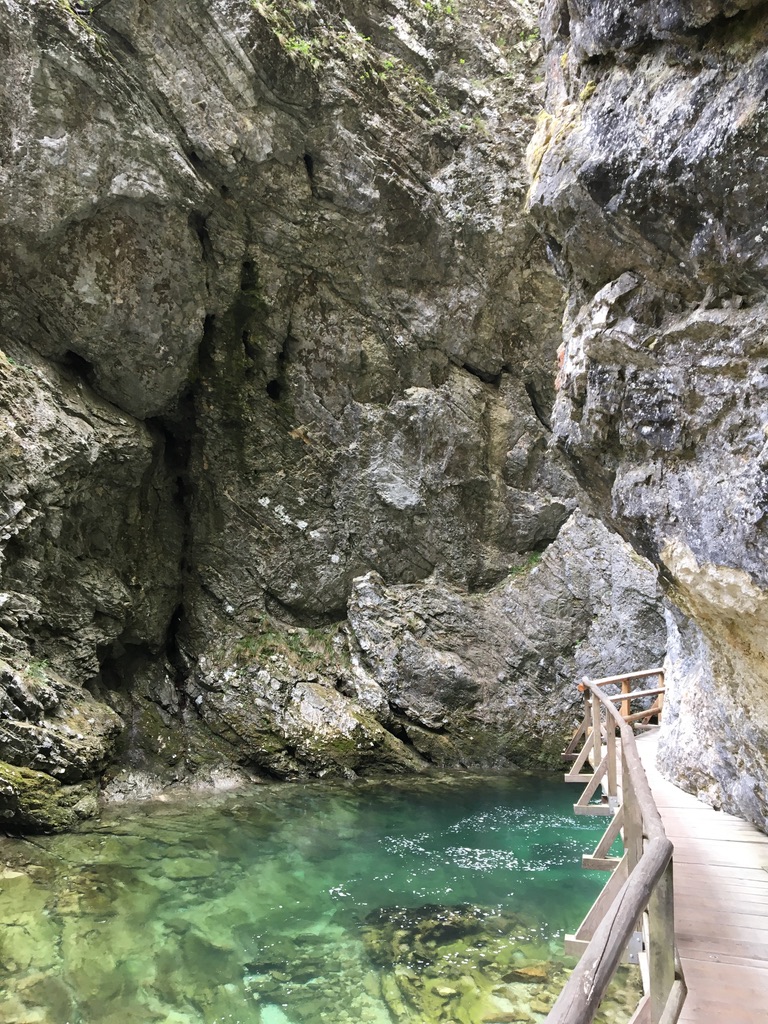 |
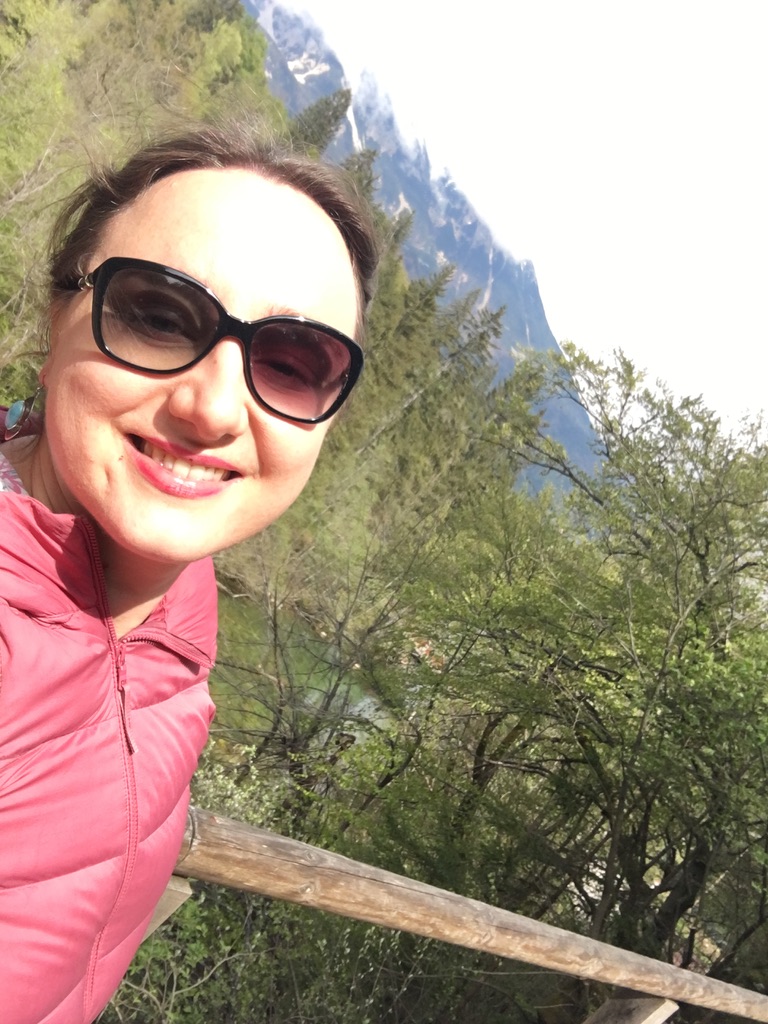 |
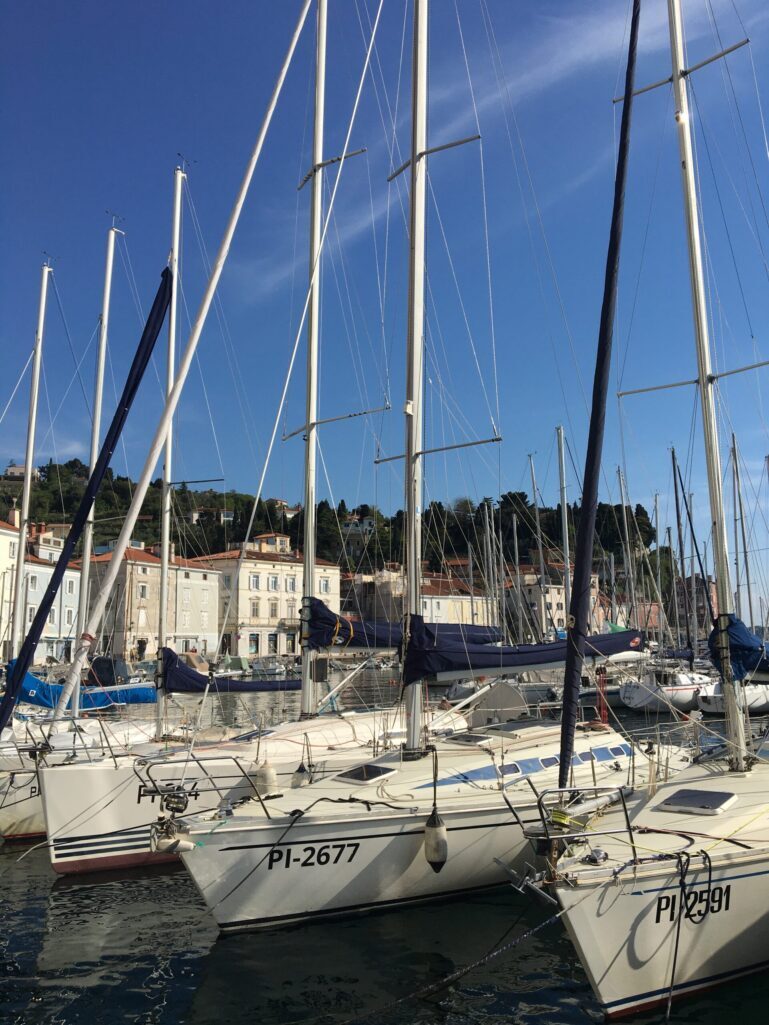 |
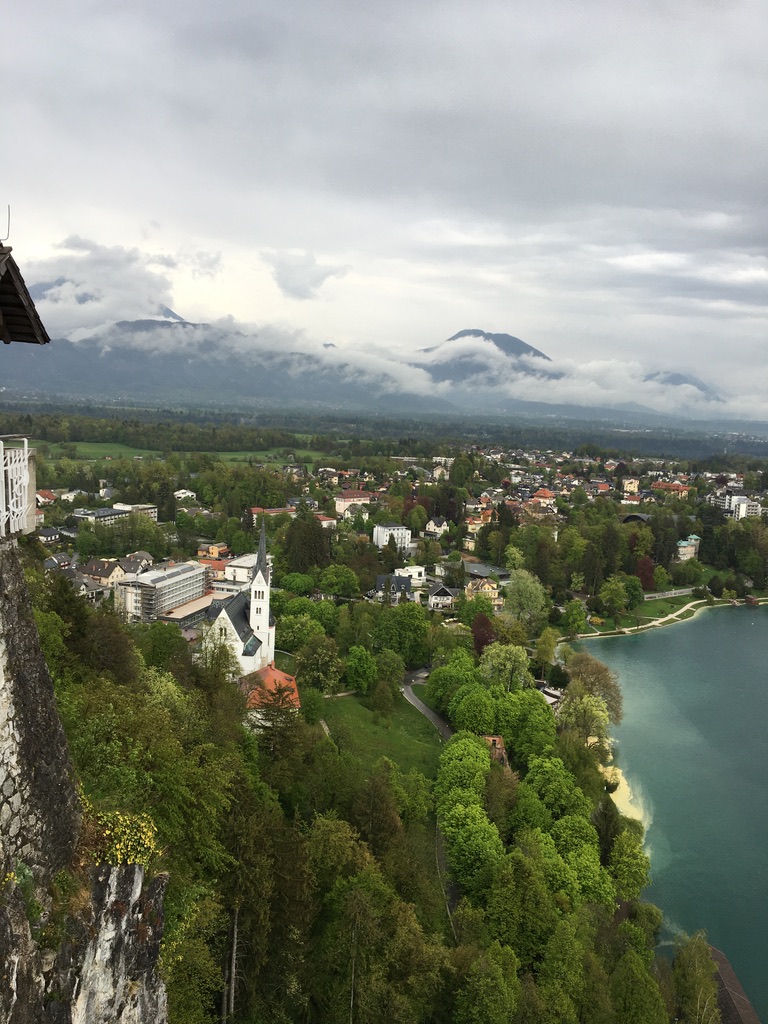 |
In this post I will write about our itinerary and places we visited. I also will mention a bit more about Slovenia’s transportation system and the country’s incredible cuisine. Enjoy!
Lake Bled
Probably the most famous lake in Slovenia, if you google Slovenia in your search, you will get the photos of this famous landscape on the first page.
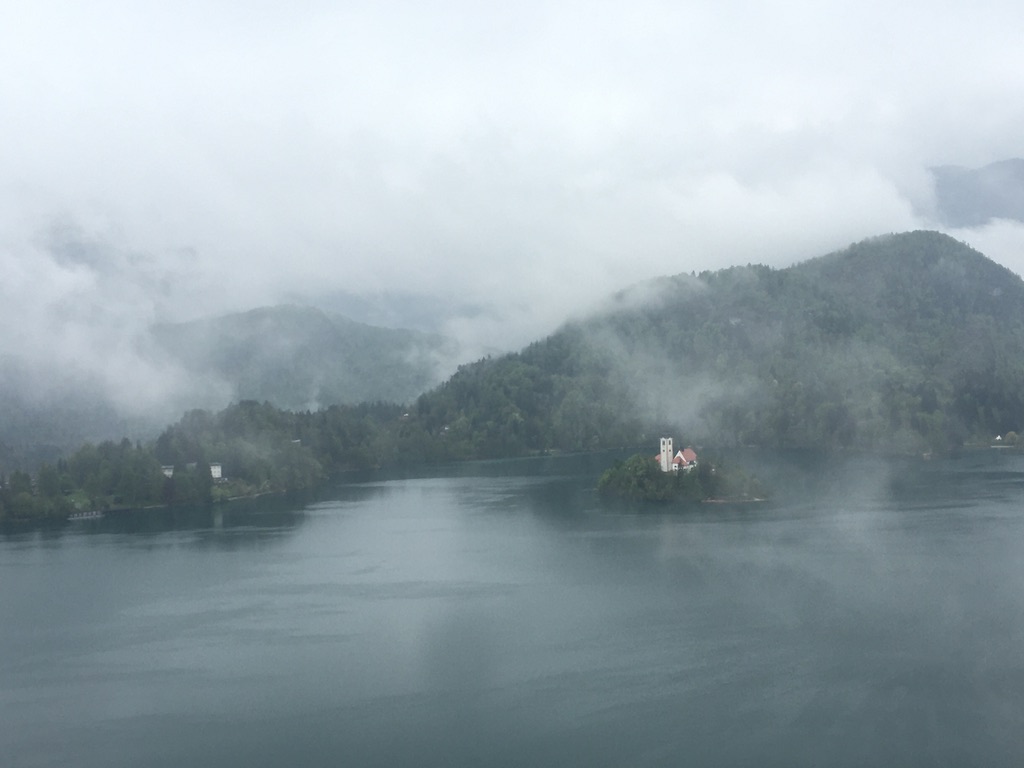 |
Claimed by many as the most romantic place in Slovenia, a characteristic lake with a small island with a church on top of it is a very popular place for Slovenian couples to organize their wedding ceremony.
Bled Island was a place of worship already in pagan times, according to oral tradition, the ancient Slaves indeed had an altar or temple on the island. The church of Virgin Mary was mentioned first in the sources in 1185. Travelers and pilgrims were taken to and from Bled Island by typical boats called pletne from the 12th century onwards.
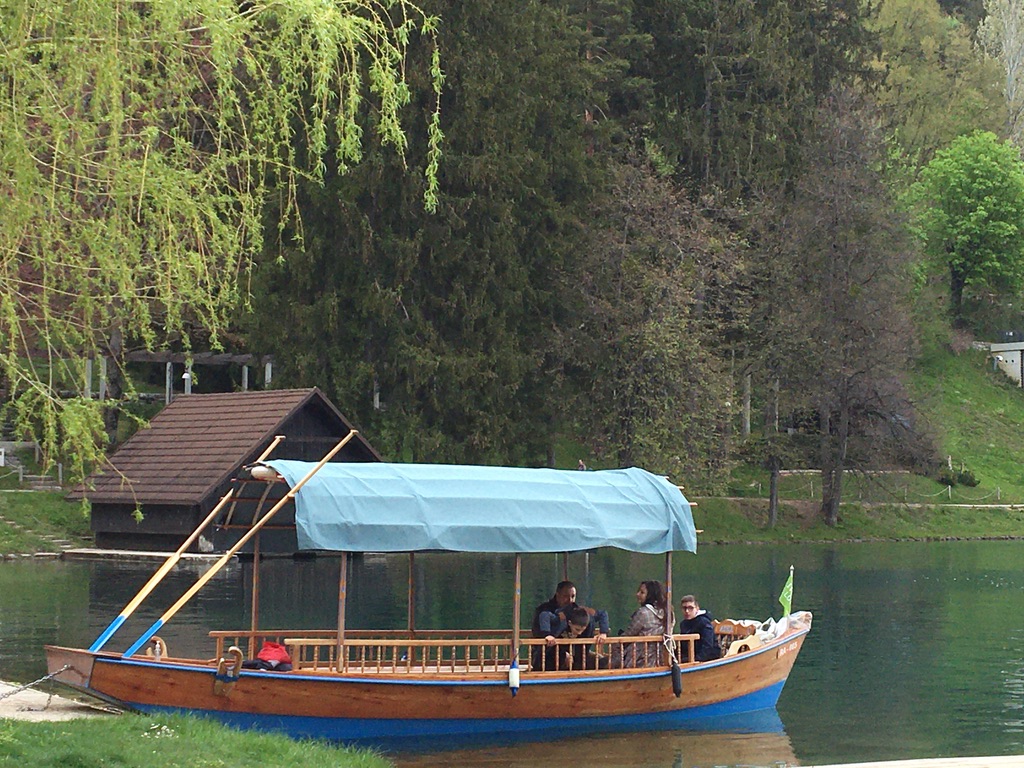 |
Boat tour
Nowadays, you can get to the island either on pletne tourist boat or rent a small boat and paddle to the island yourself. We have chosen to rent a boat, we paid 20 euro for one hour.
This may look short, but it takes around 15 minutes to swim to the island. It takes even less to go back since during first ride you will probably get some feeling how to navigate and coordinate the boat more efficiently.
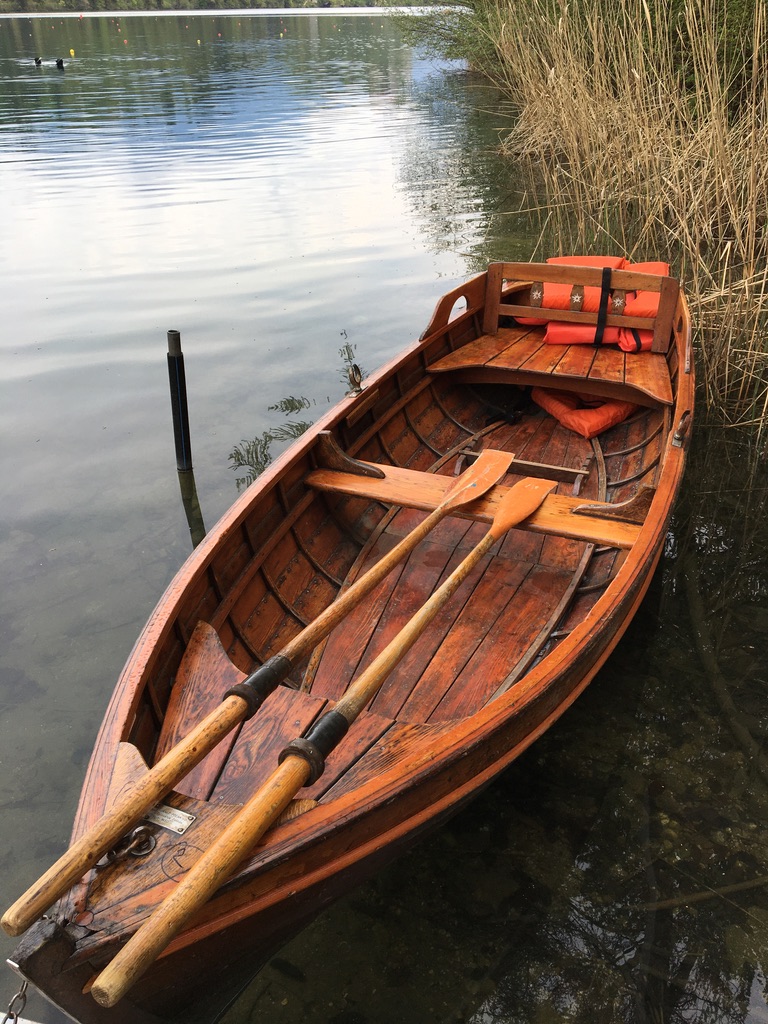 |
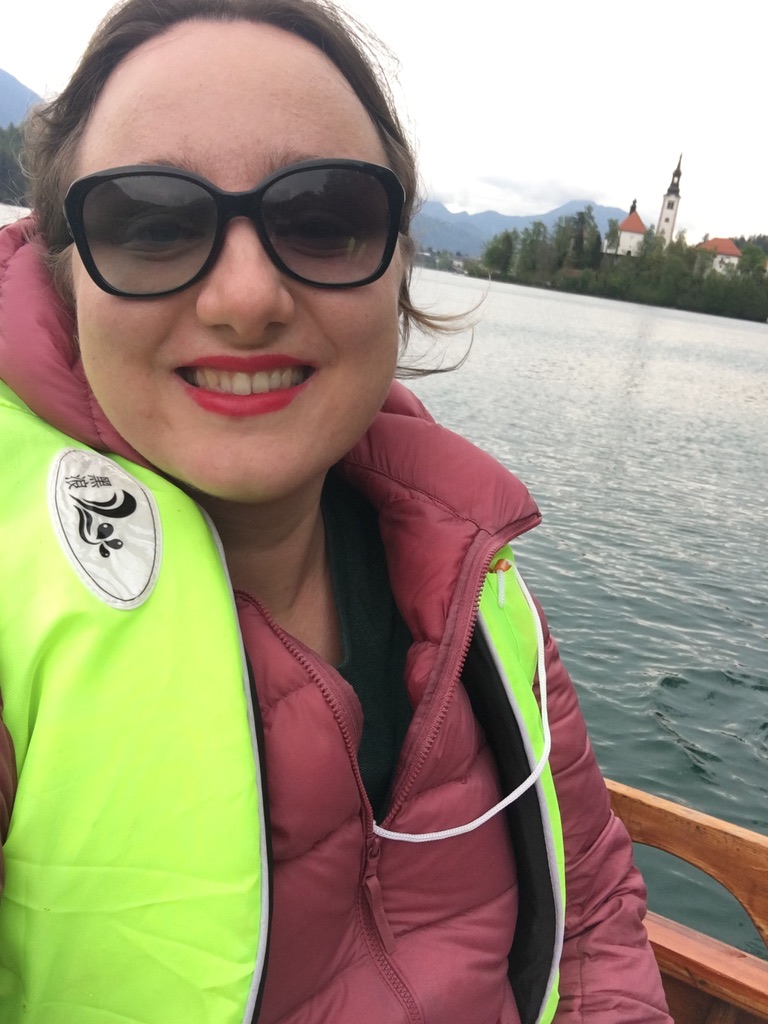 |
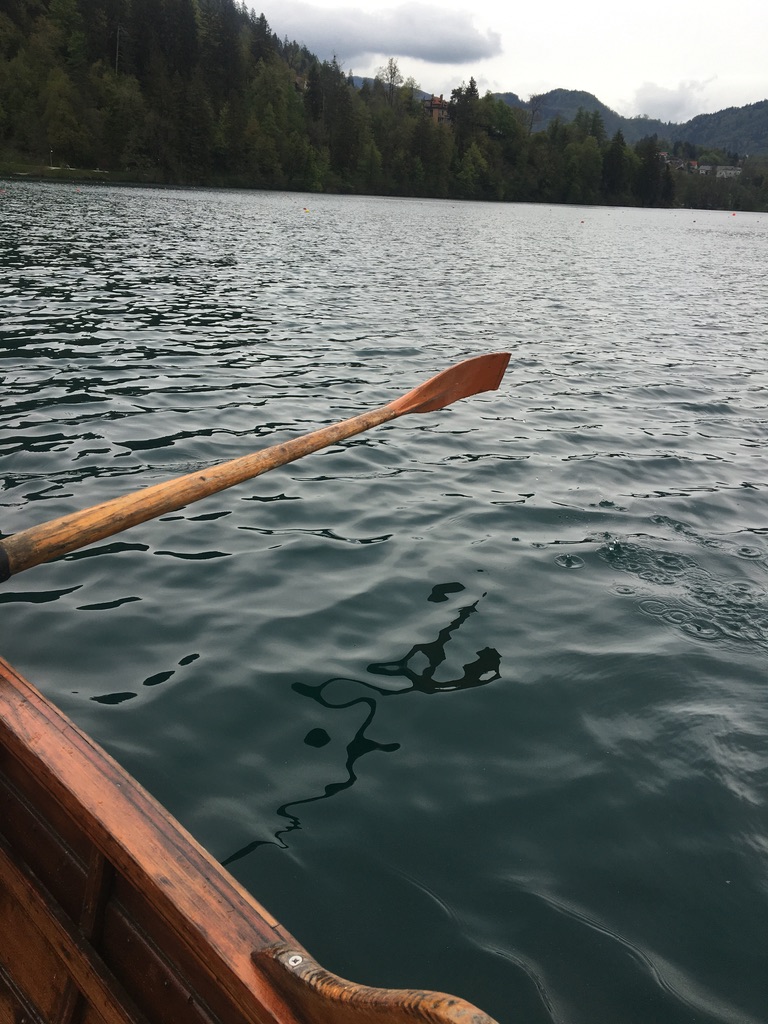 |
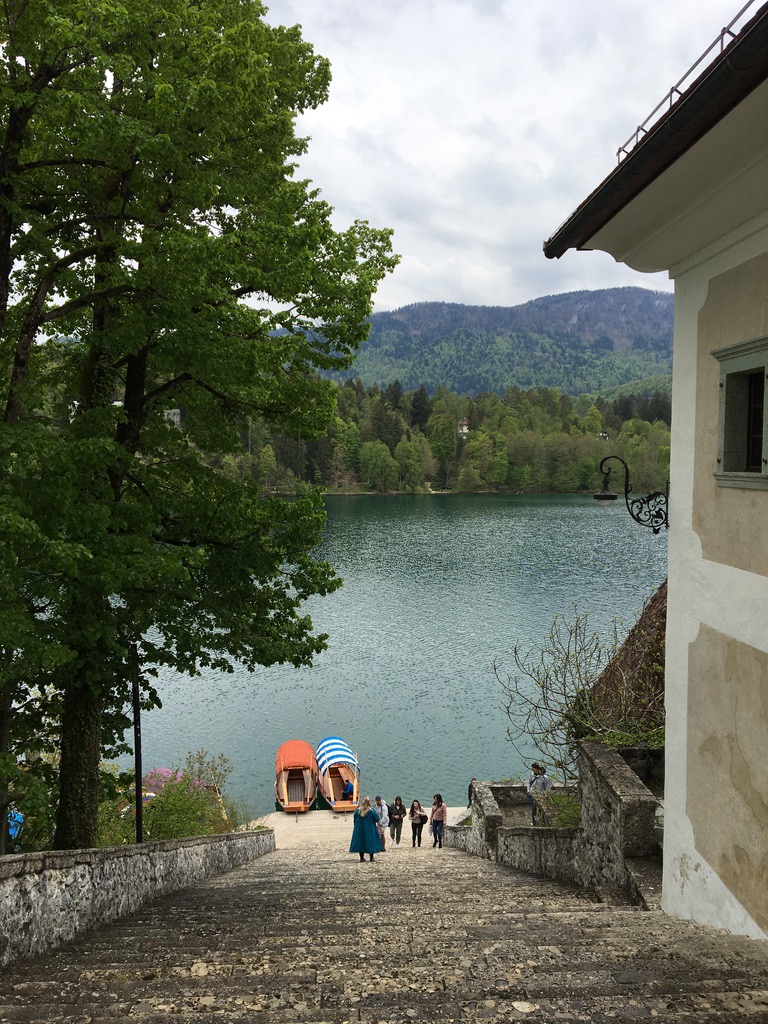 |
The island itself is very small, you will climb up on top of the hill to see the Church of Mary the Queen, you can get some refreshment in a small coffeehouse in front of the church, there is also a souvenir shop attached to the café. You can also go down and walk along the shore and enjoy the view at the lake and surrounding mountains. I liked the most the spectacular view at the Bled Castle strategically located on a bare rock.
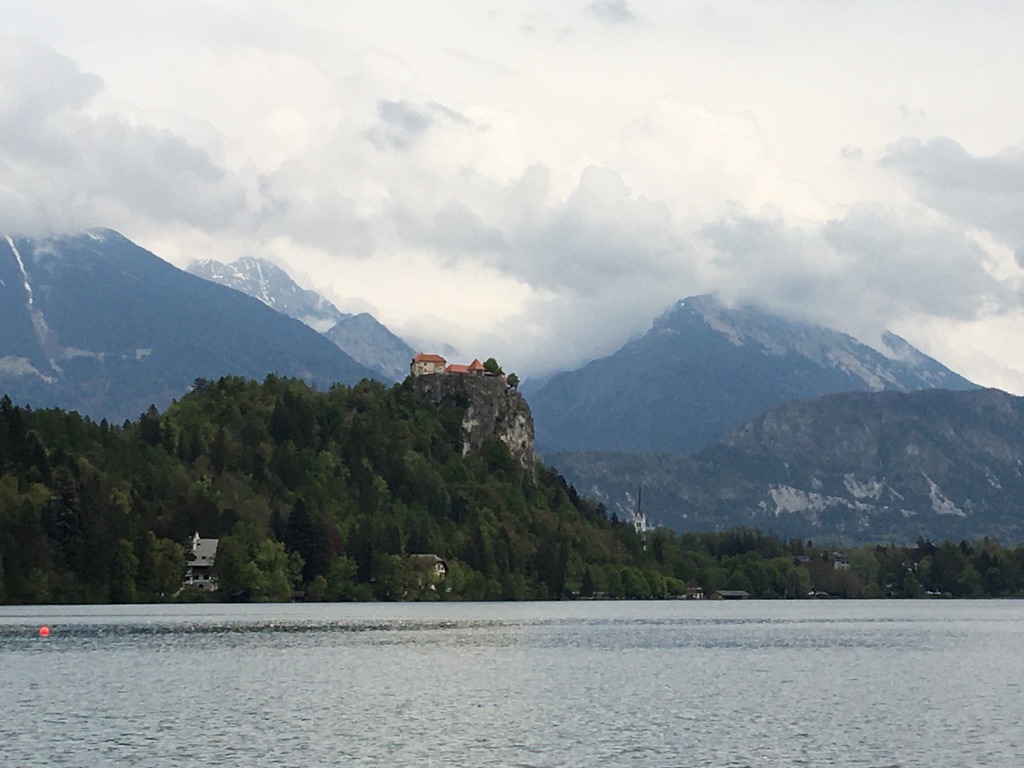 |
On the way back (and to) the island you can enjoy beautiful views of the lake, observe the local swans and since the water is very clean and transparent, you can spot plenty of fish underwater.
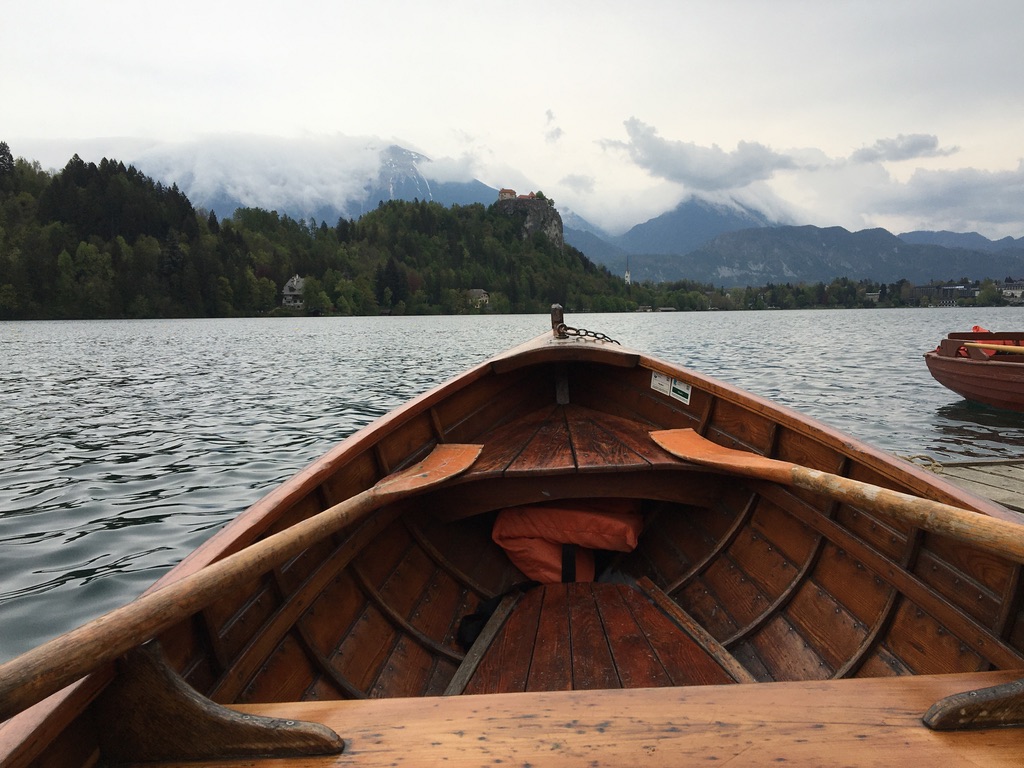 |
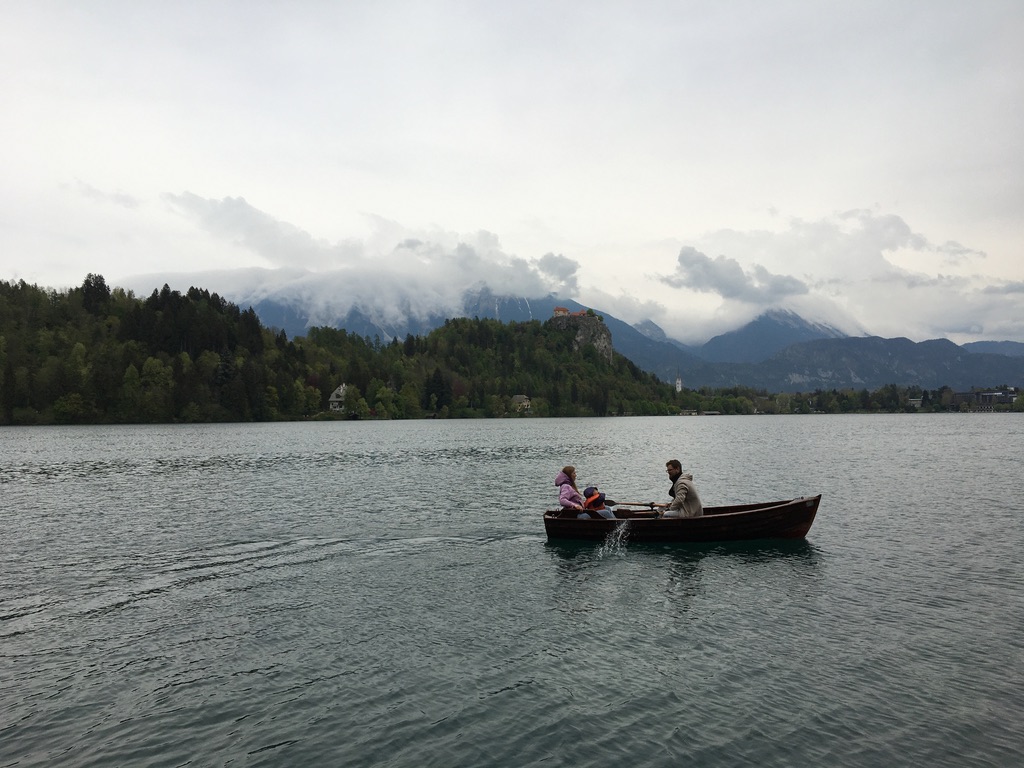 |
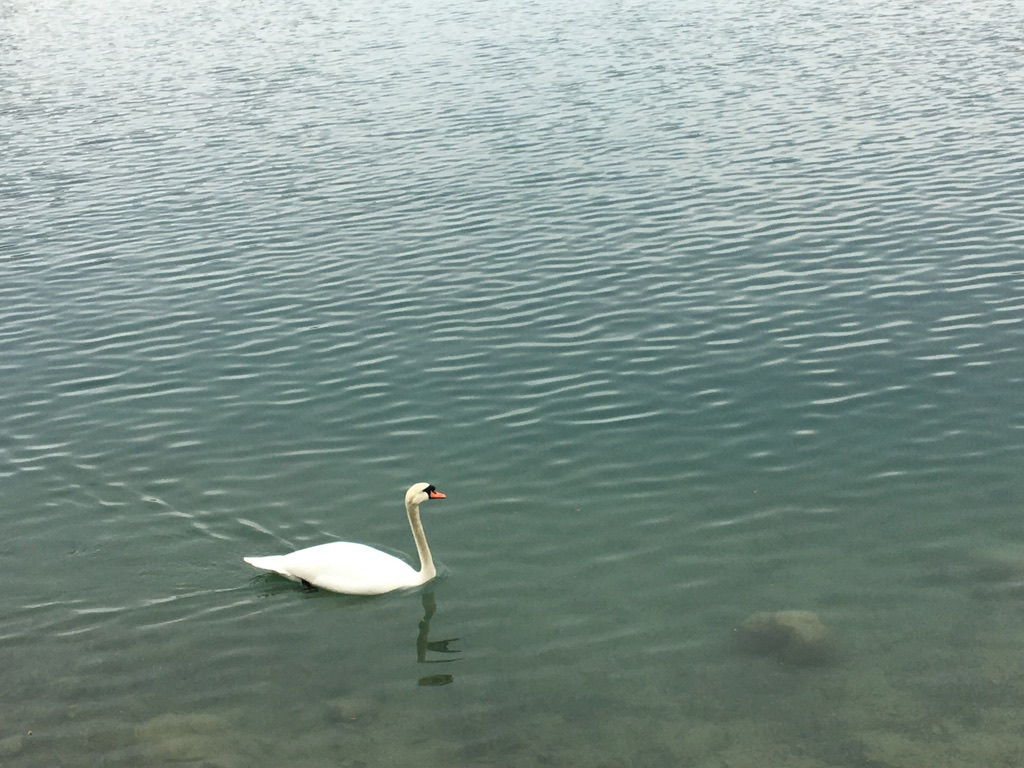 |
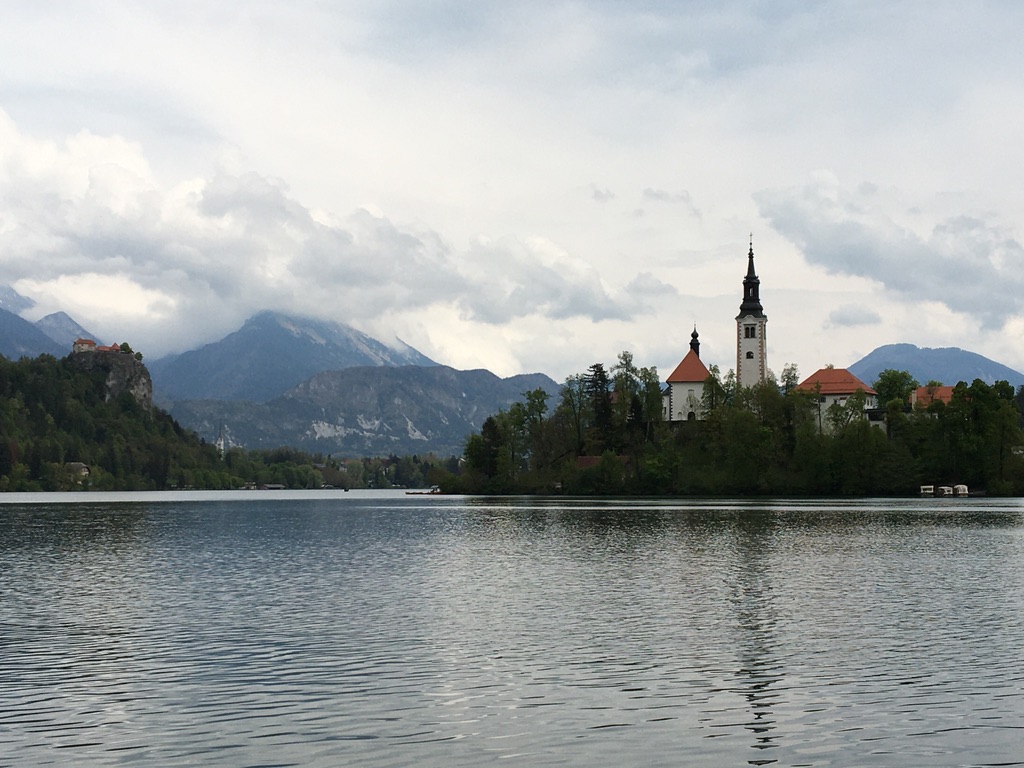 |
After a ride on the boat, we suggest to grab some coffee and try the local pastry called cake Bled– delicate puff sweet atop layers of light vanilla cream and custard. The cake dates back to the Austro-Hungarian Empire in the 18th and 19th centuries, which is really impressive.
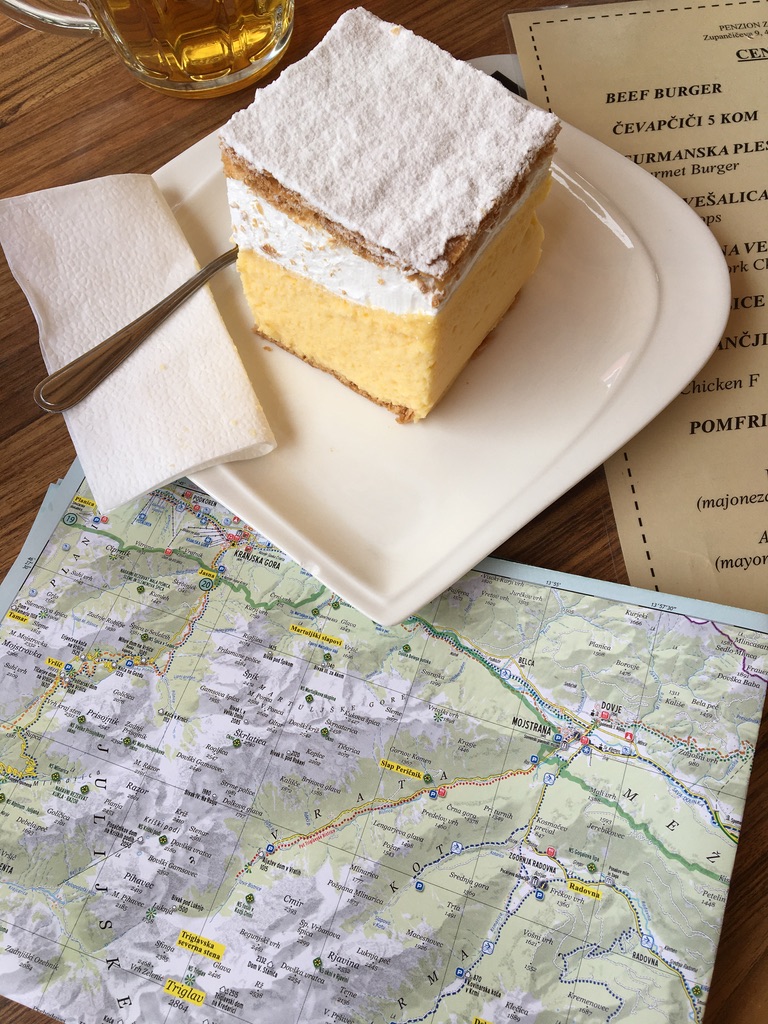 |
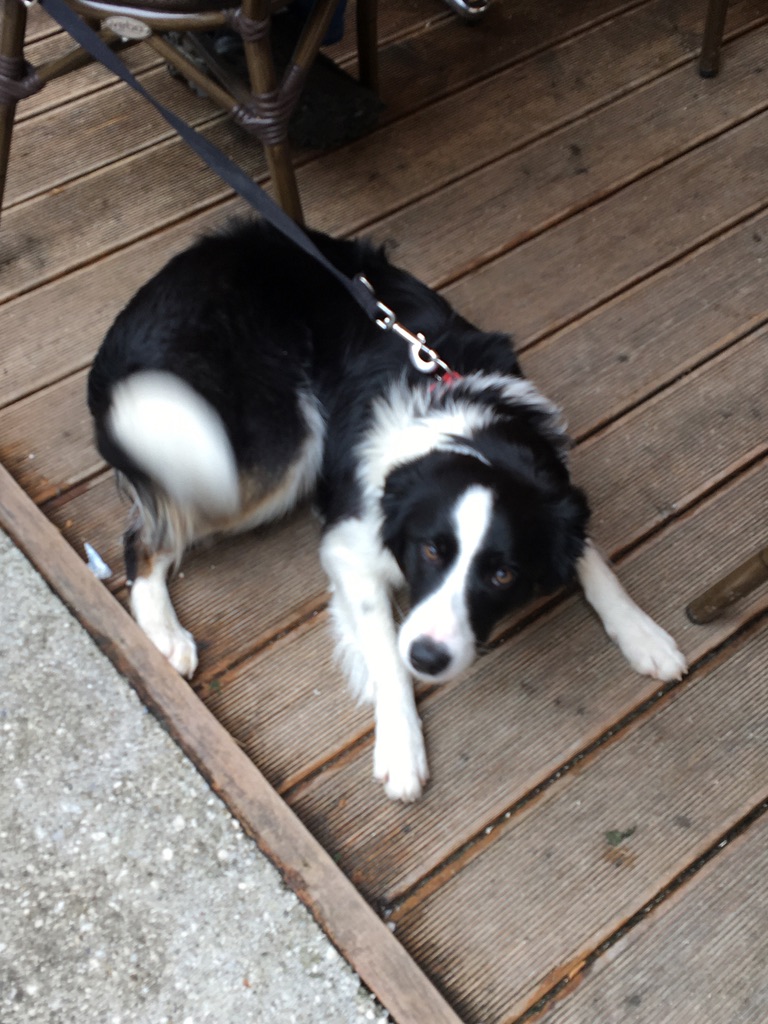 |
The best views
For dramatic views of the lake, you can climb to Mala Osojnica, it takes around 45 minutes through the path in the forest to get on top.
Another great place to visit with amazing views at the lake and the surrounding area is Bled Castle, a 30 minutes climb from lake Bled, you can access the castle through many paths, either through forest or using stairs, you also can access the castle from the opposite side of the lake by car. Just before the entrance to the castle you will find a very convenient parking.
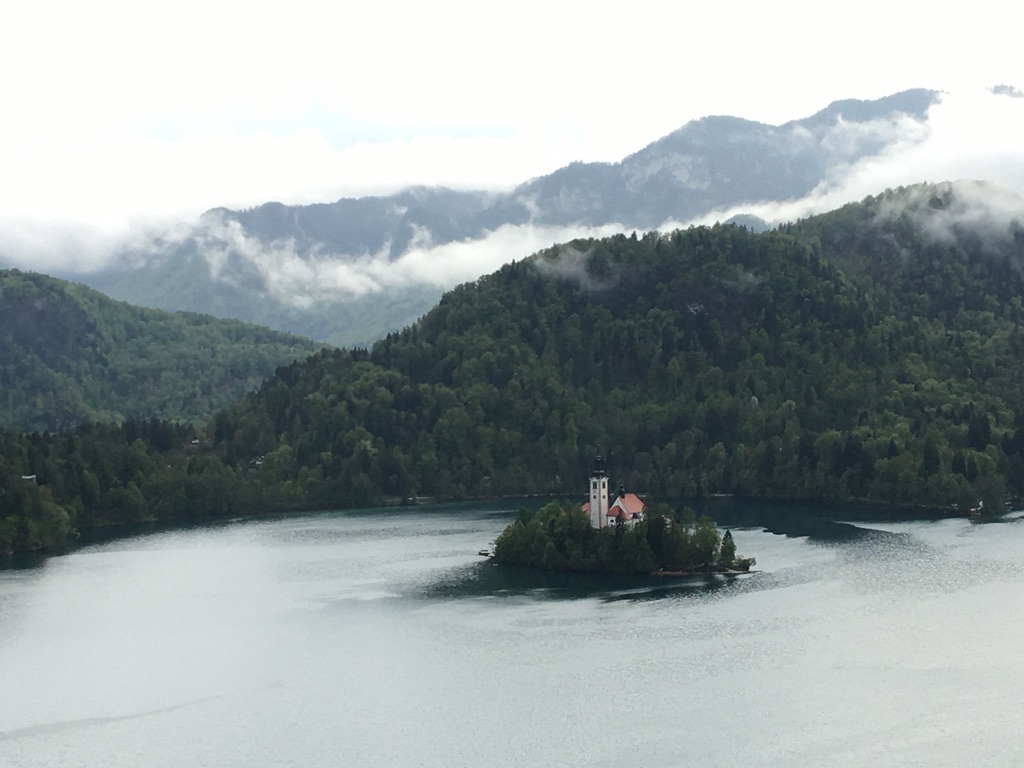 |
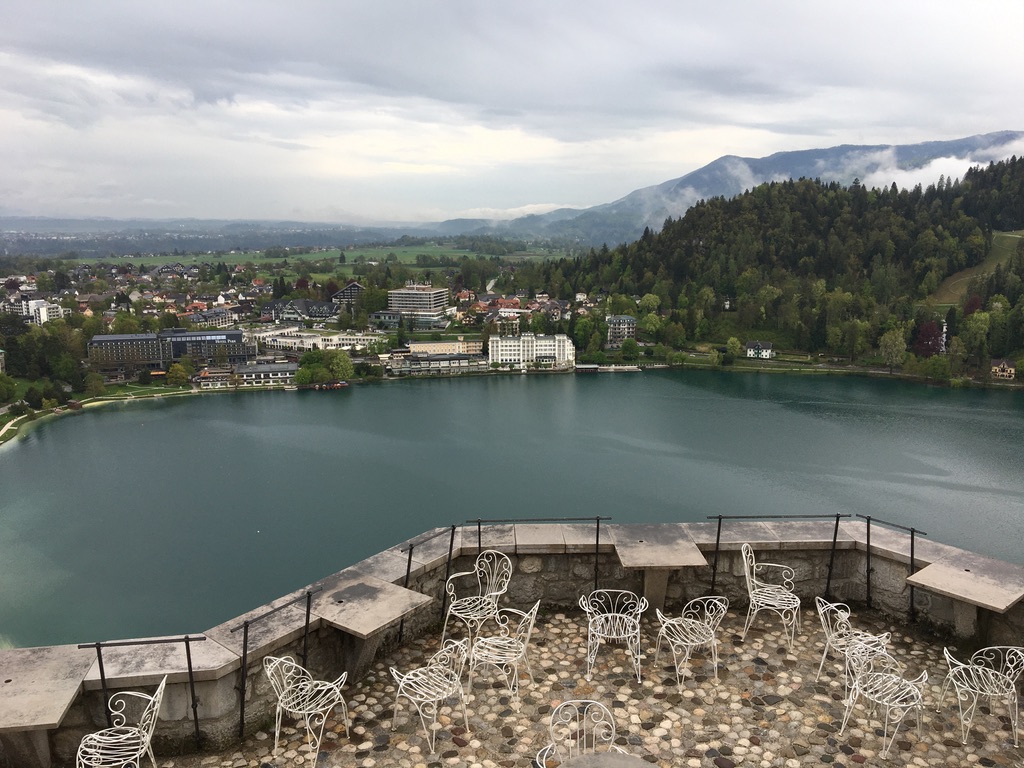 |
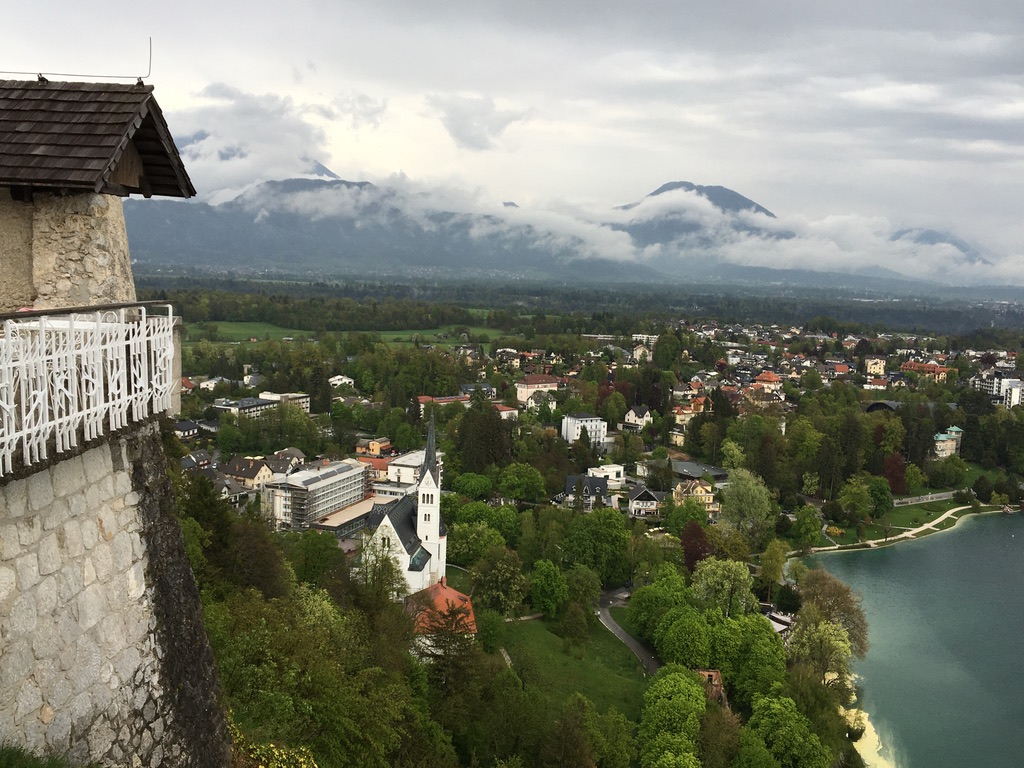 |
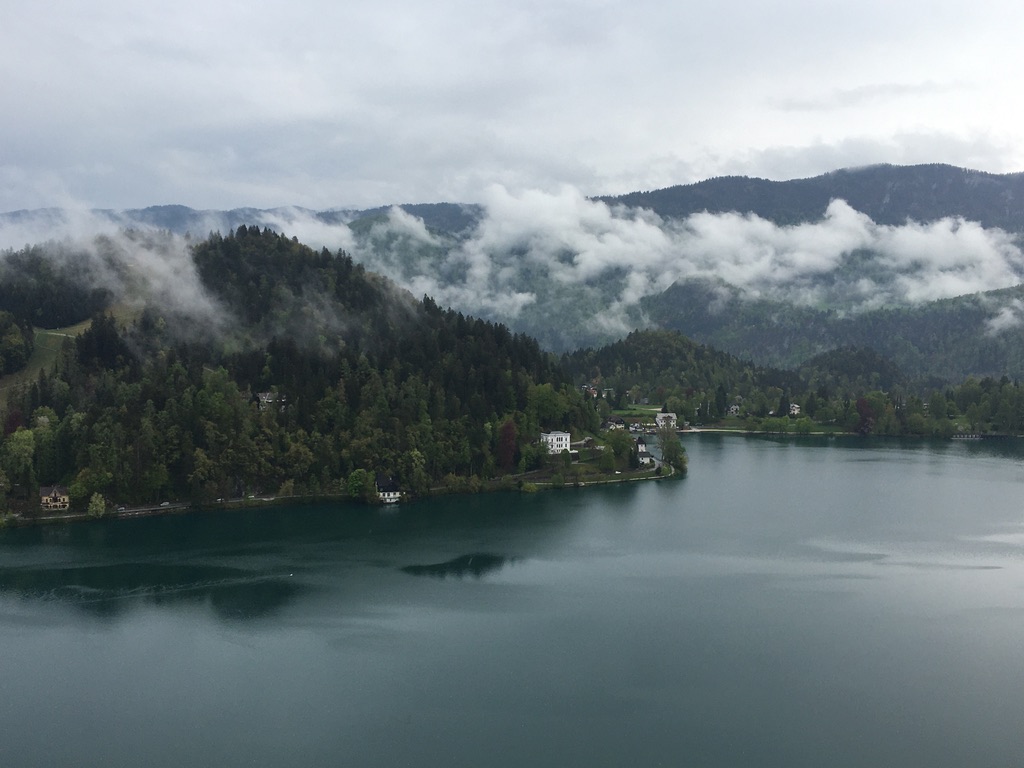 |
We have visited interior of the castle, however, I didn’t find the exhibition inside very impressive. There is few archeological artefacts and information about life of Slavic tribes.
I think it’s just fine to visit the part of the castle which is free of charge, the observation towers with great views around the castle, the castle walls, there is also a souvenir shop, wine cellar and small restaurant.
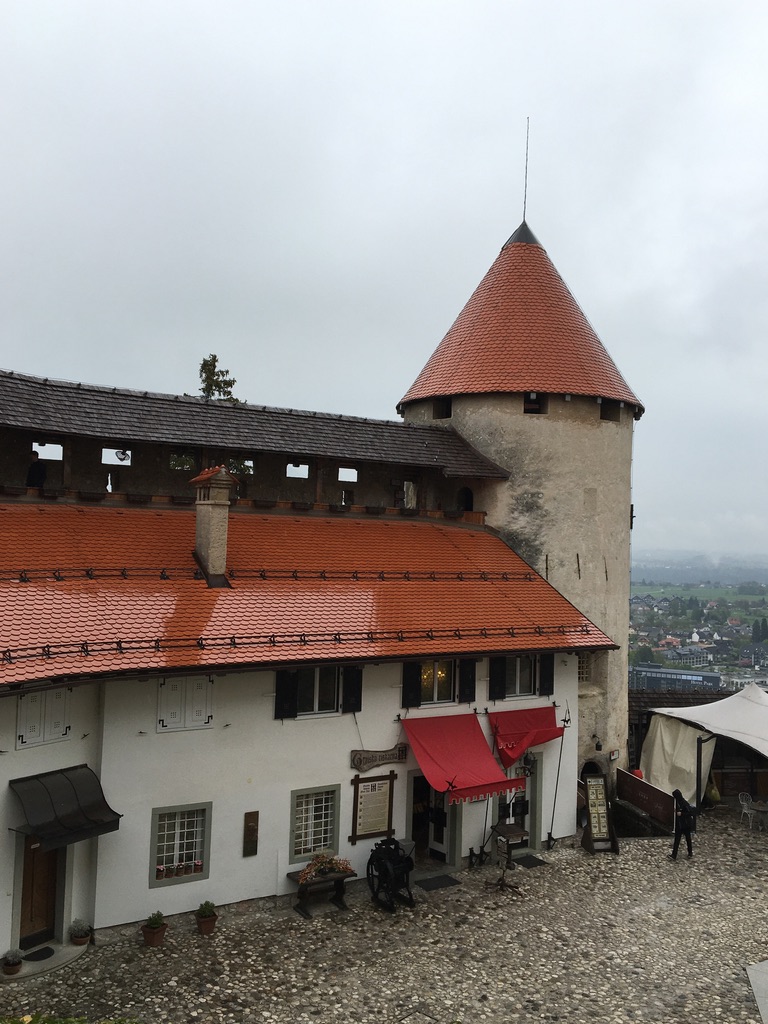 |
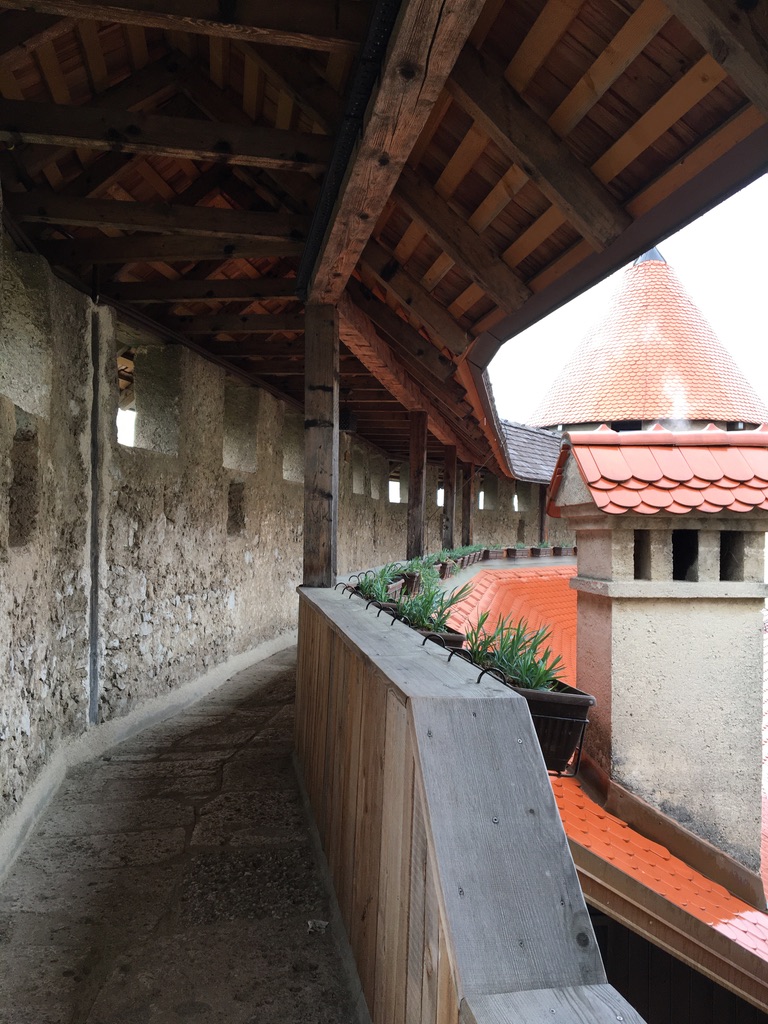 |
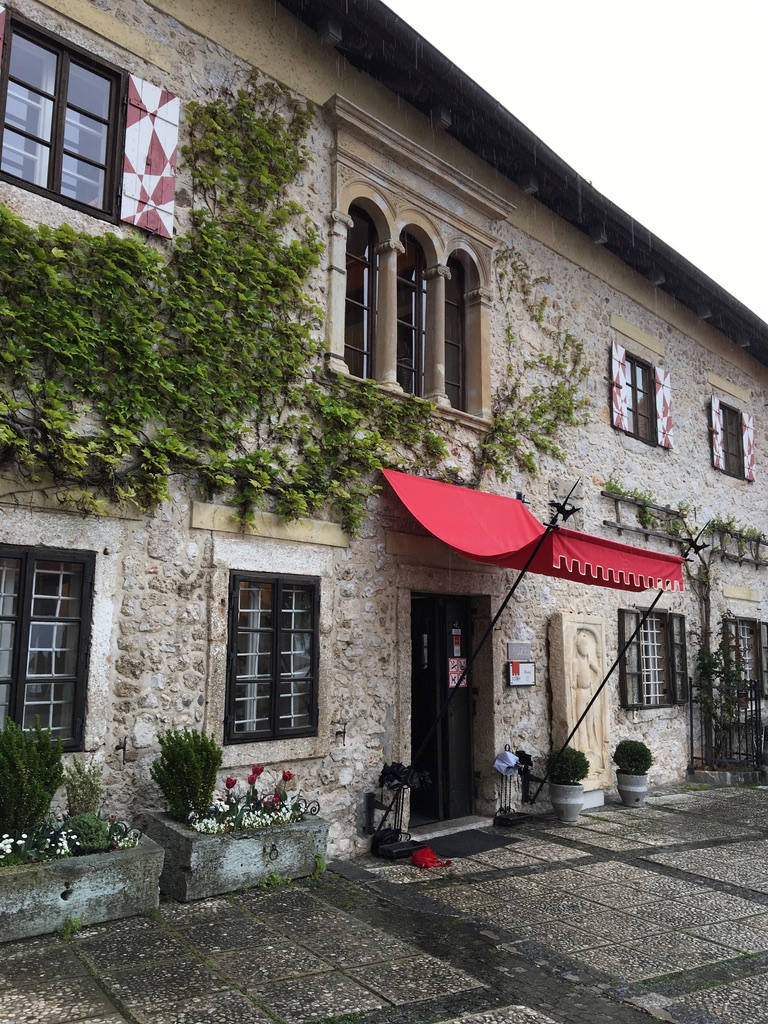 |
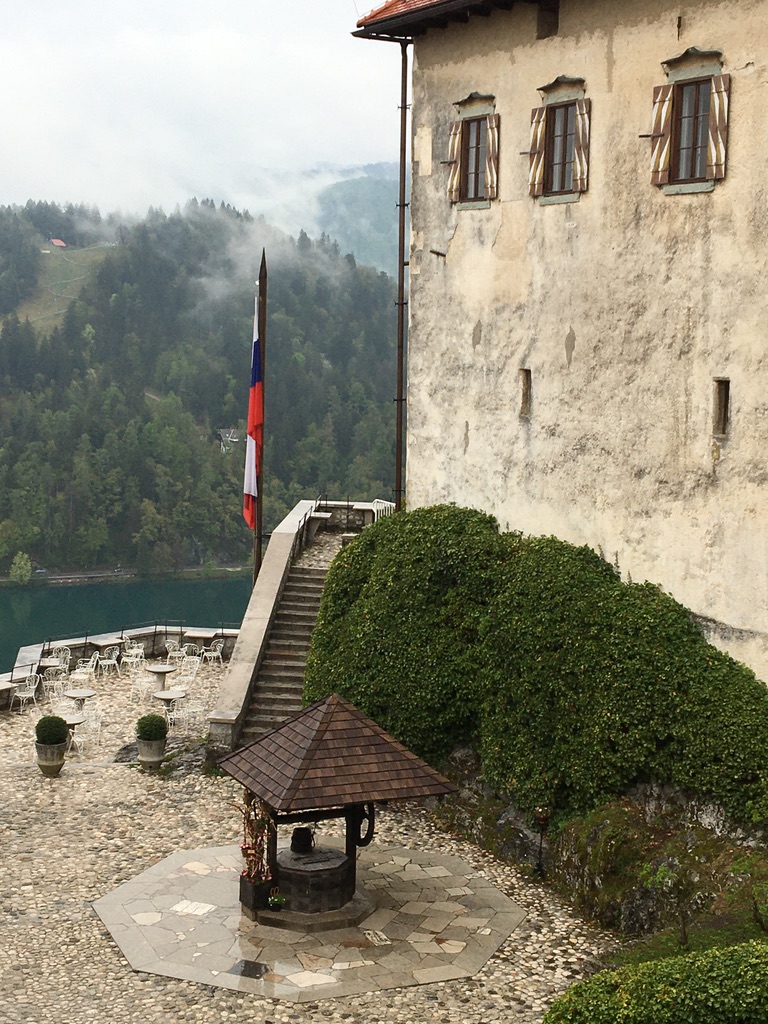 |
During our visit it became very rainy when we were in the castle so the visibility was quite low, however I found the landscape very mysterious and somewhat mystic with the small island and nearby mountains partially hidden in the fog.
Popular resort
In one of the towers you can read an interesting history of Bled area and how it became a popular resort in the European upper society in the mid–19th century. The unique and highly efficient healing approach of Swiss-born physician Arnold Rikli, who claimed to help his patients through exposure to air, water and sun, brought first celebrities and even dignitaries to Bled. Rikli believed that people live in excess given their limited physical activity, overindulging in highly concentrated food and beverages, and thus suffered from civilization diseases. Wealthy people from all over Europe felt that no price was too high if only they could be healthy and beautiful again. Rilki then prescribed a vegetarian diet as part of a treatment. A special part of the programme was bathing in both lake and a special swimming pool, the water for which was provided by two cold springs. Hot and steam baths were also prescribed for the whole body or specific body parts. Another popular activity was following the health paths along nearby hills, levels of difficulty adjusted to physical health, there were also separate paths for men and women.
Nowadays, Bled is a very calm area with pristine nature. The views at the lake and Bled Island are just gorgeous from the surrounding hills.
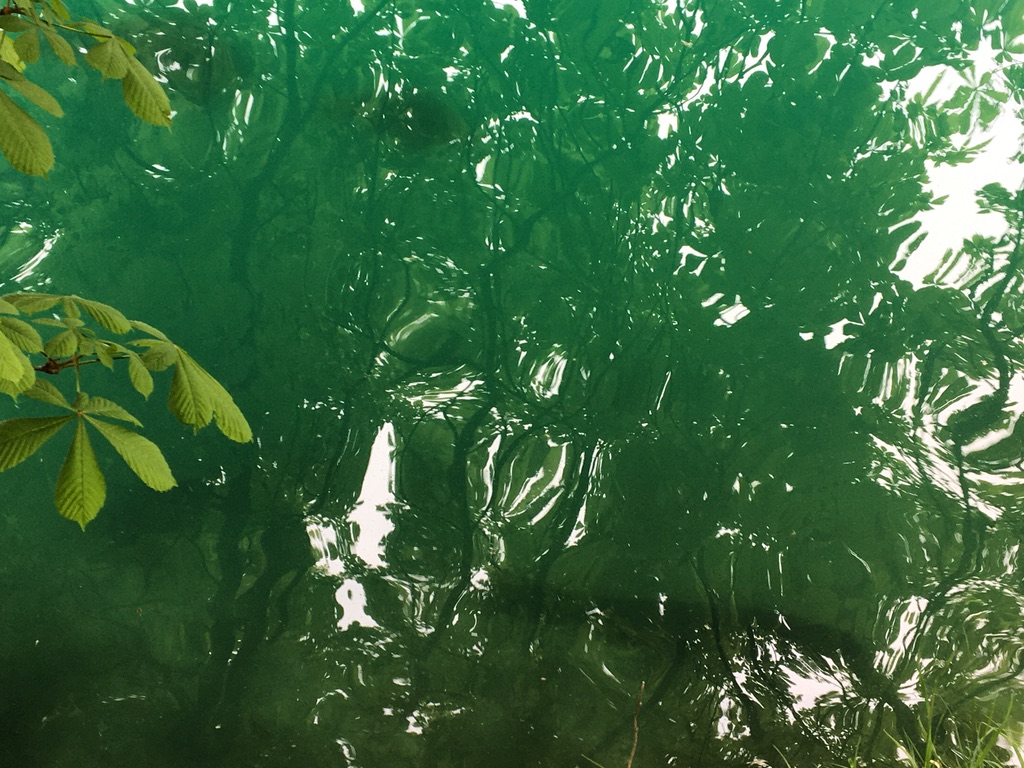 |
We have visited lake Bled as a day trip from Ljubljana, it takes around 90 minutes to get there from the capital. Trains are very comfortable, and the tickets have flat prices so you don’t have to plan your journey in advance which is very convenient.
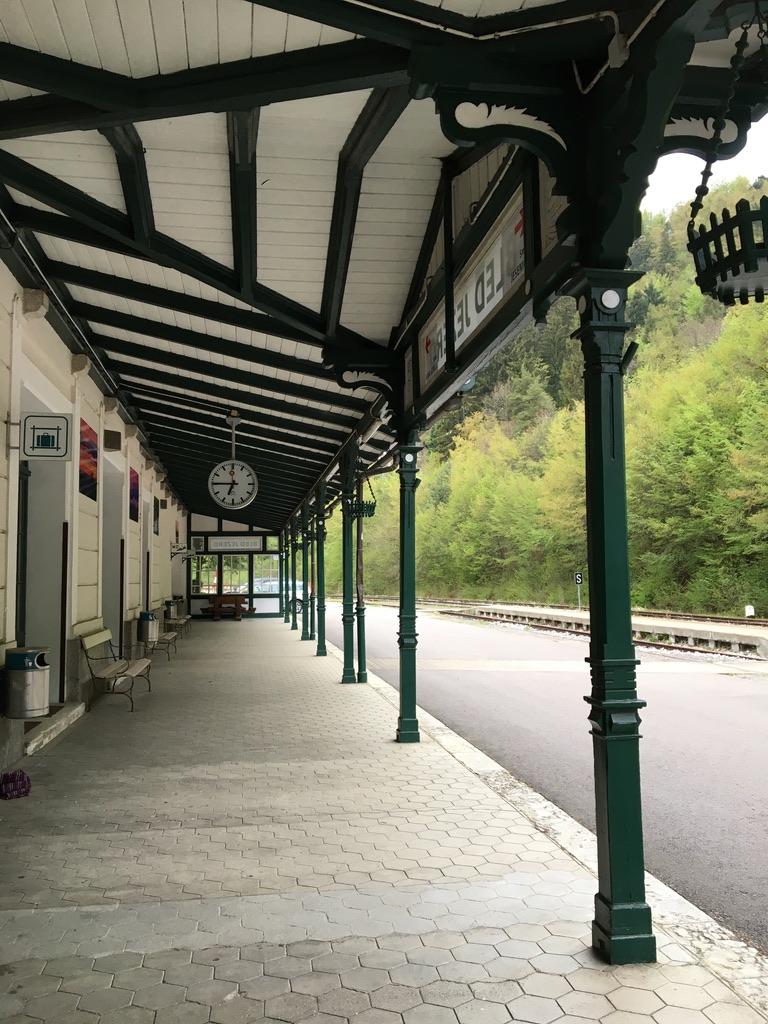 |
Vintgar Gorge
On our second day, we have chosen to do another hike, this time to famous Vintgar Gorge. The gorge is located on the eastern edge of the Triglav National Park, 4km northwest from the centre of Bled.
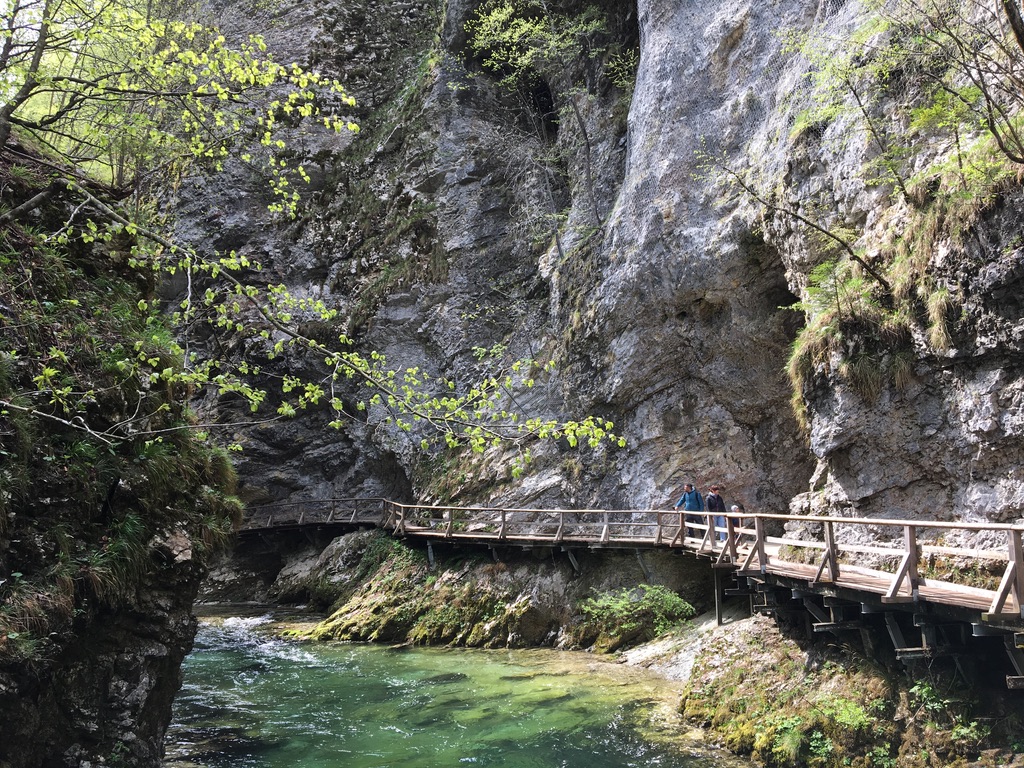 |
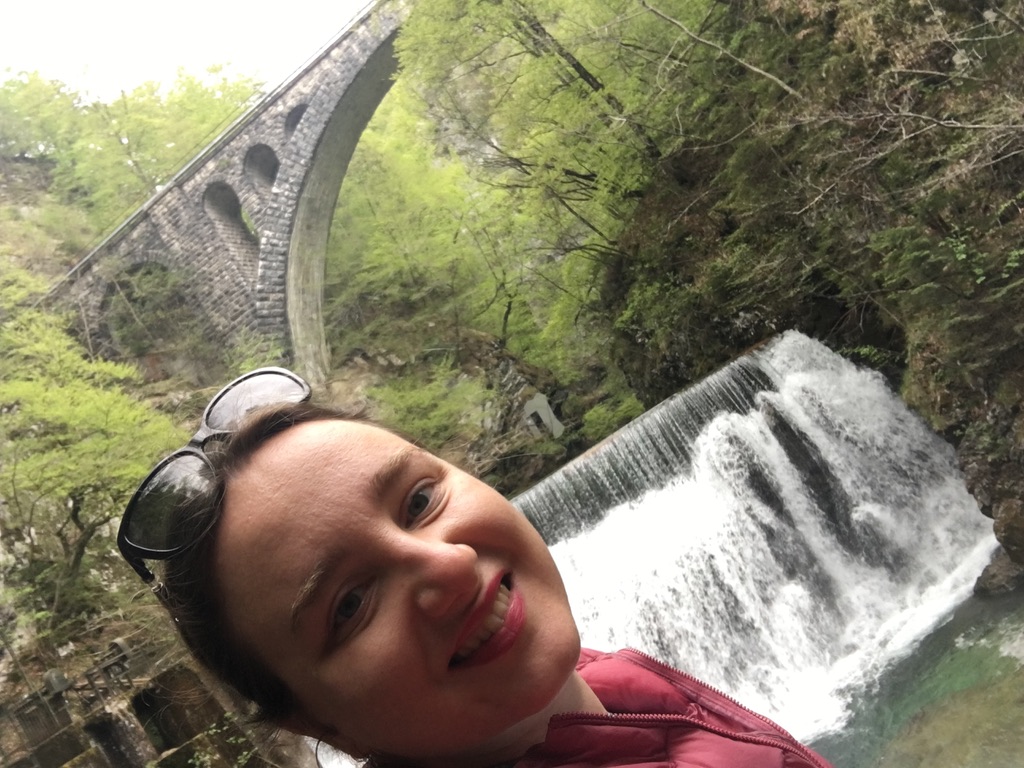 |
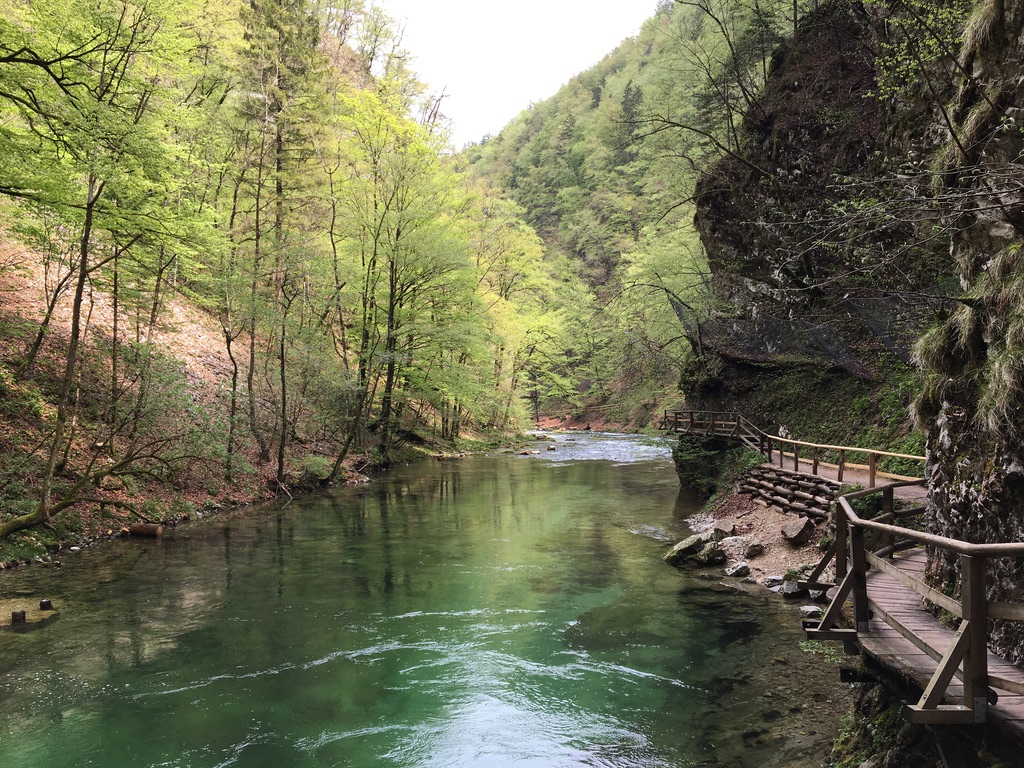 |
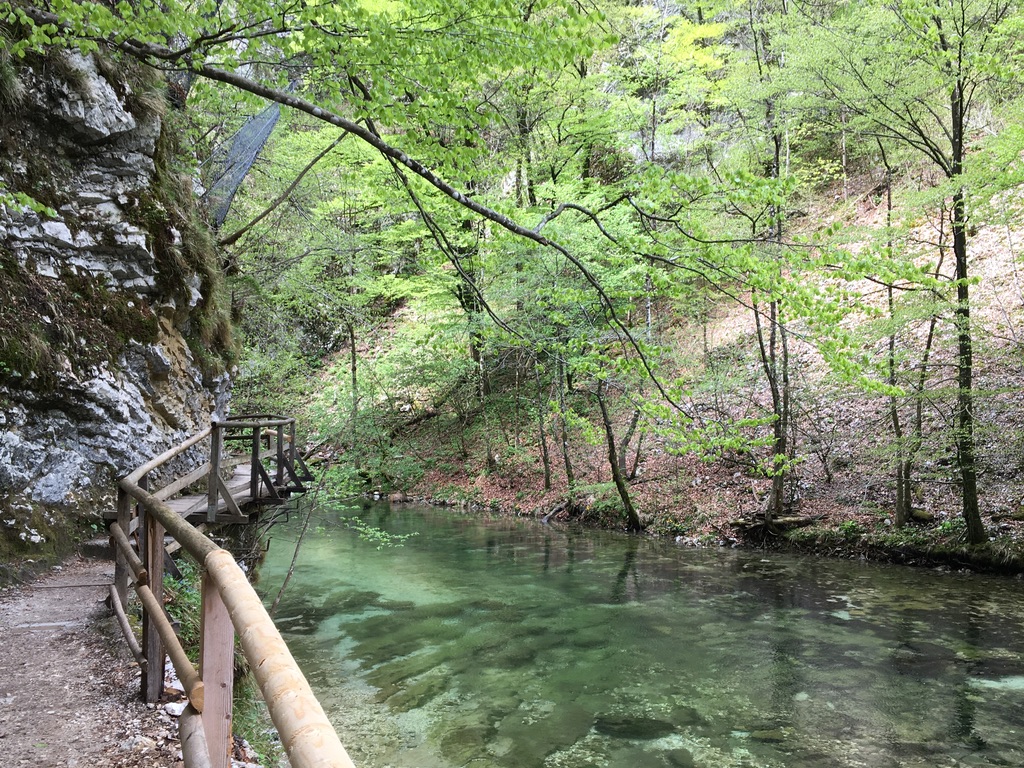 |
Vintgar Gorge is 1600 m long and 250 m deep. At the entrance to the gorge on the west side, we reach a small waterfall “Mali Sum,” then we continue through “Zumer Galleries” all the way to the end of the gorge, where the mighty Sum river waterfall awaits us. The waterfall is particularly big during spring when the water from high mountains comes down.
When planning your trip make sure you get to the entrance of the gorge since the path goes only one way, and starting from big Sum waterfall is not possible.
The hike along the gorge is absolutely gorgeous, and the path is well maintained, it is possible to walk through with children, dogs are also allowed. During the walk one can observe the fish (really big trout) in transparent turquoise water of the river.
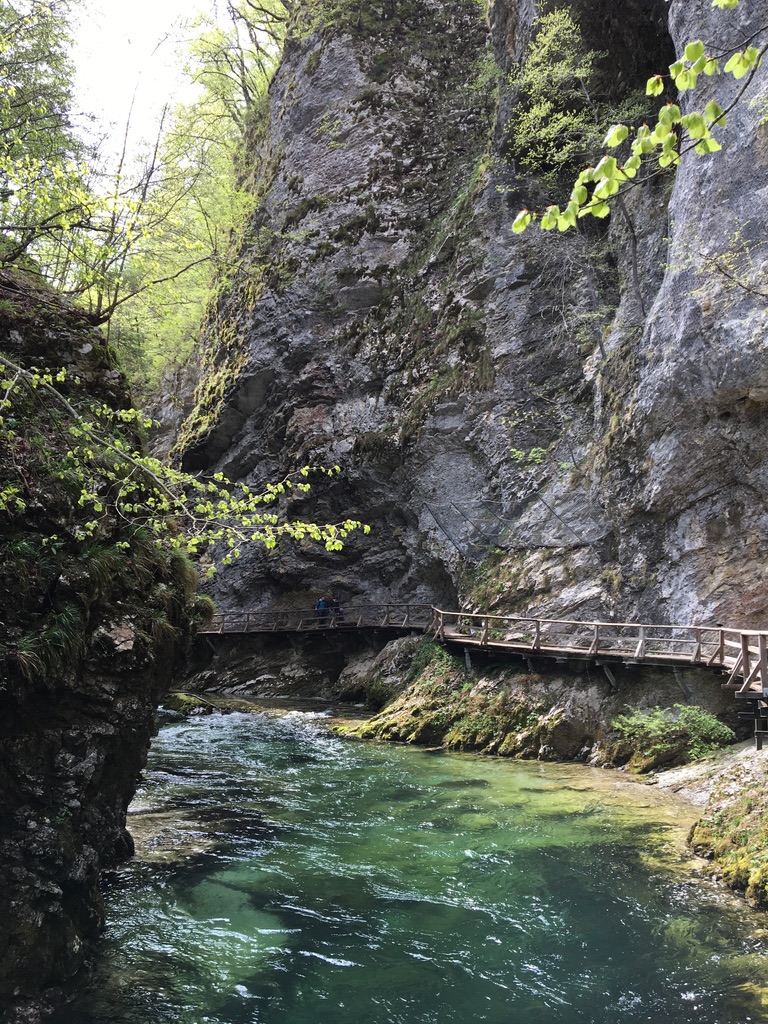 |
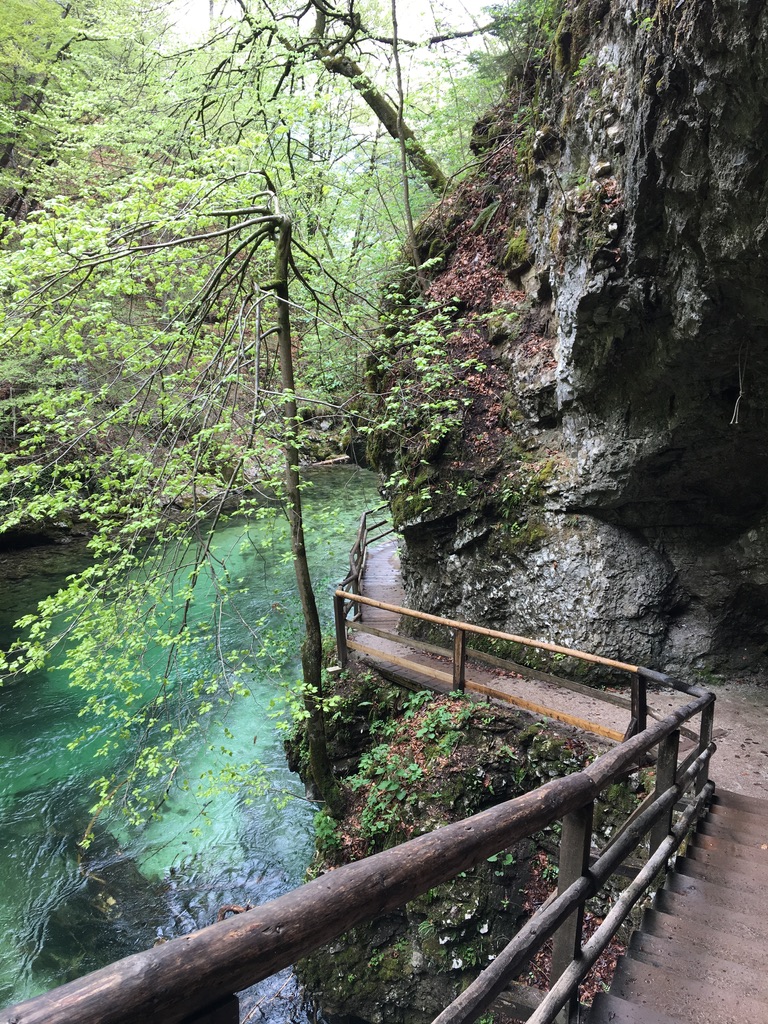 |
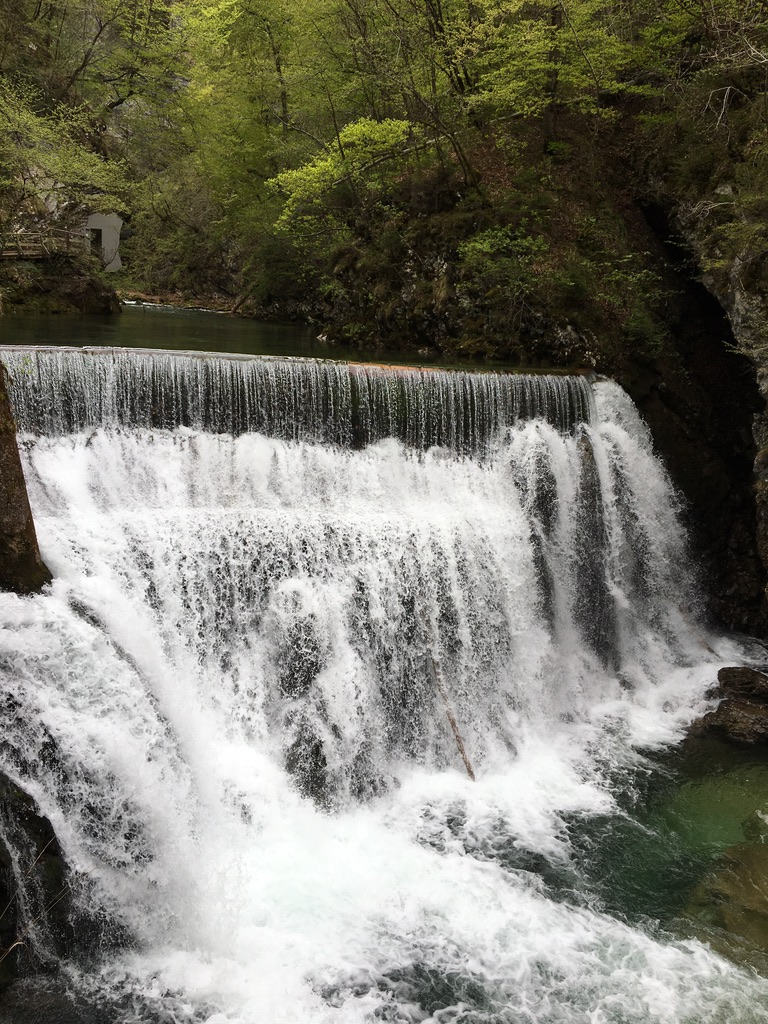 |
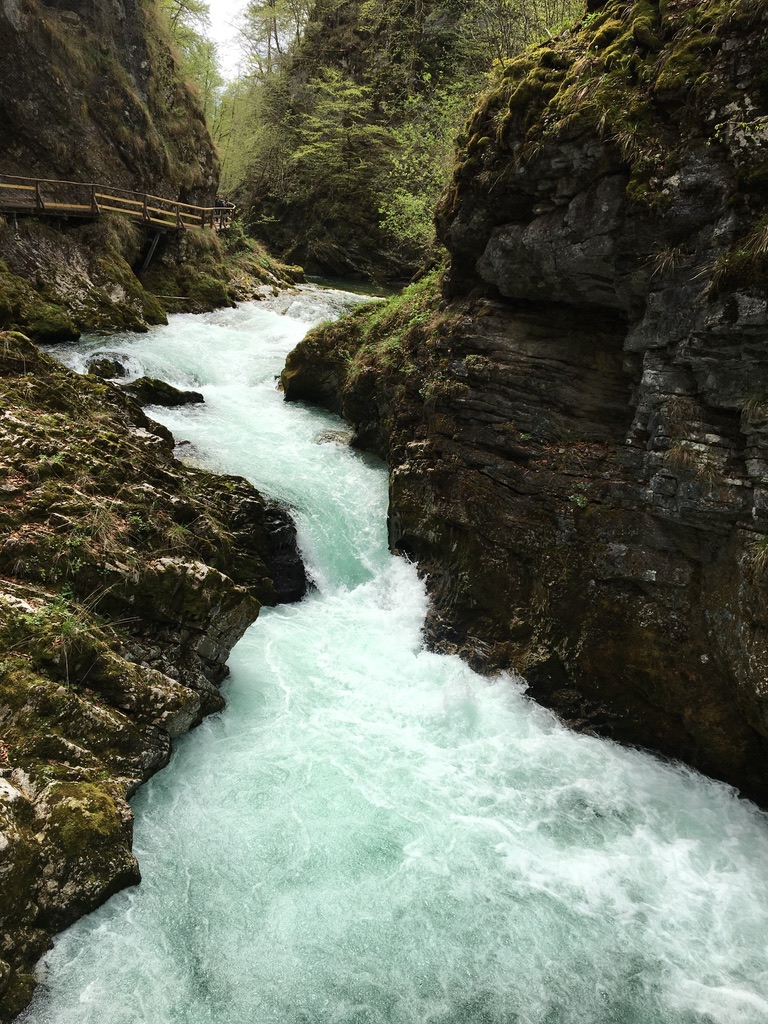 |
The hike is relatively short (around 30 minutes), so I recommend to combine it with two routes Sum-St. Catherine green path and Sum-Blejska Dobrava red path, see the picture below.
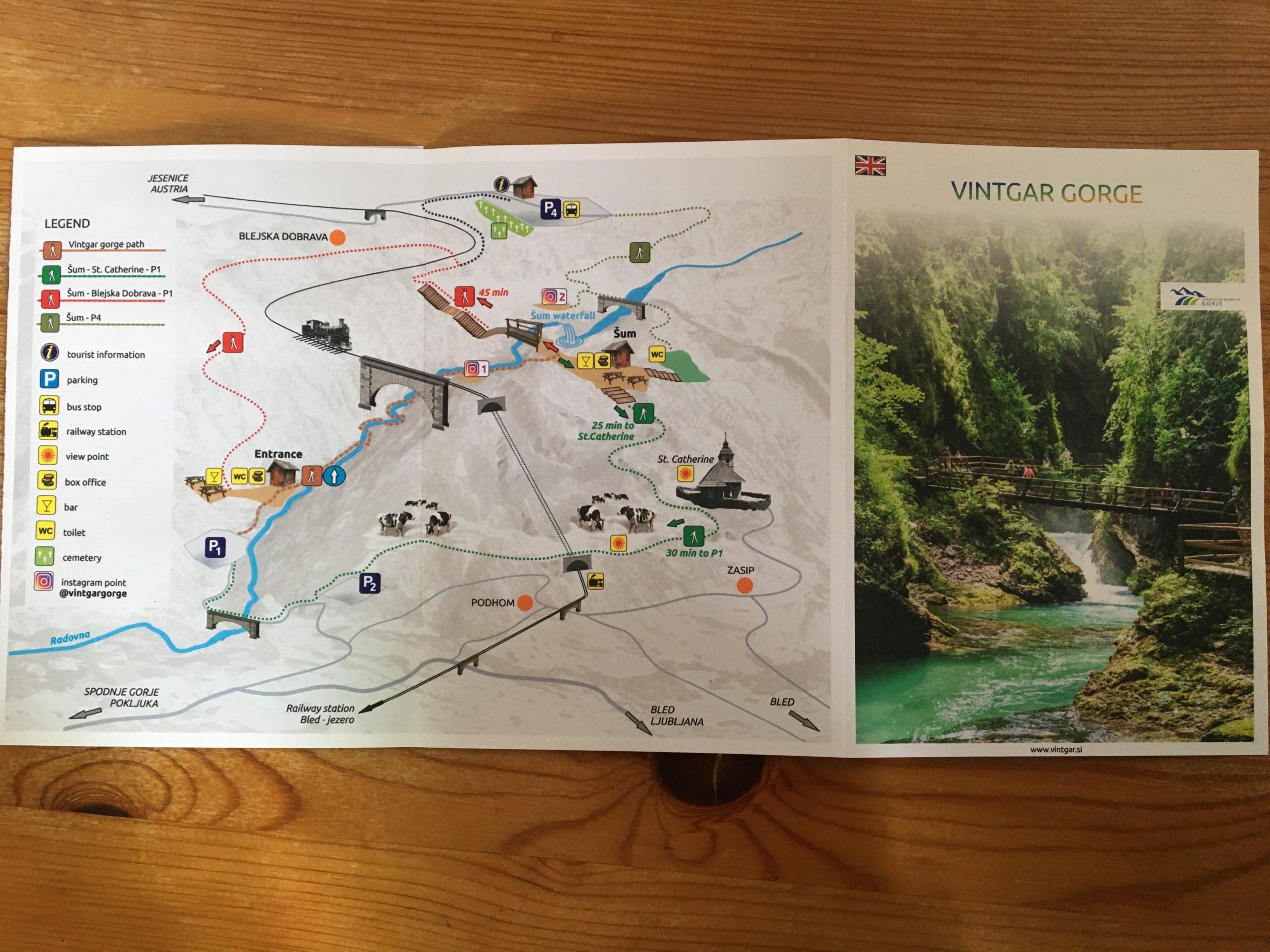 |
For those who arrive by train, I suggest to get off at the station Vintgar and follow the red path to the entrance to the gorge, make sure to not to turn to Sum waterfall since you can’t enter the gorge from this side. The path is well marked and it takes around 50 minutes to get from Vintgar train station to Vintgar Gorge entrance. During your walk from the hill, you can see part of the gorge and the river and the walk is really very nice.
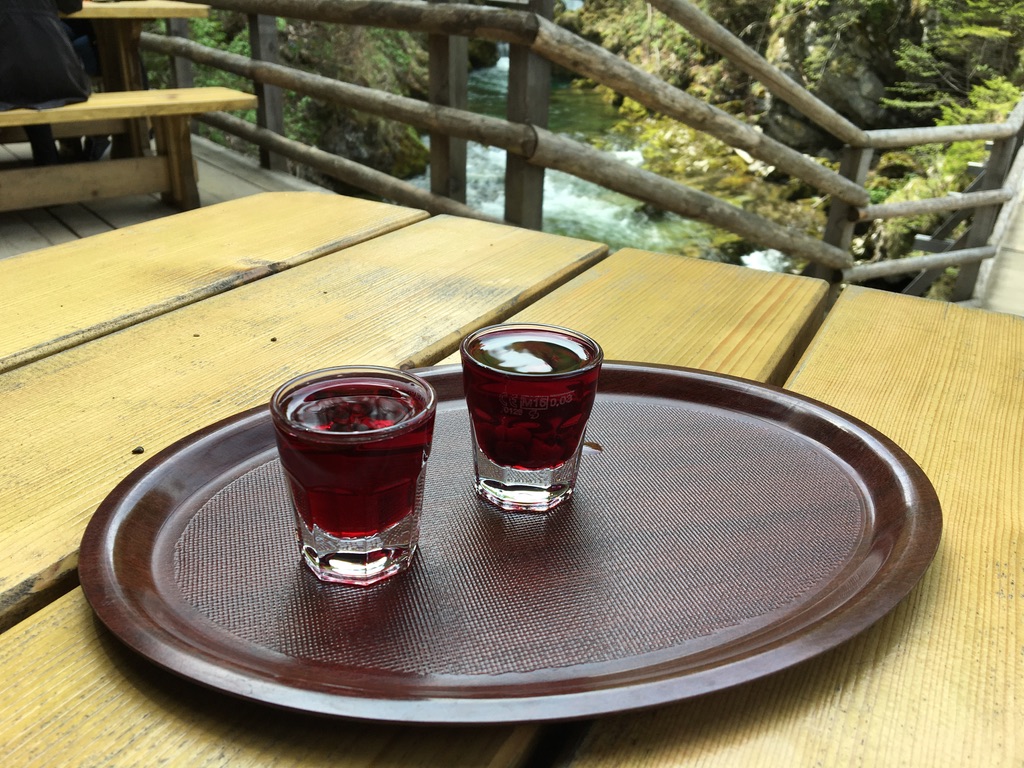 |
After walking through gorge, I suggest to continue with the green route to the church of St. Catherine from where you can admire gorgeous views at the Alpes.
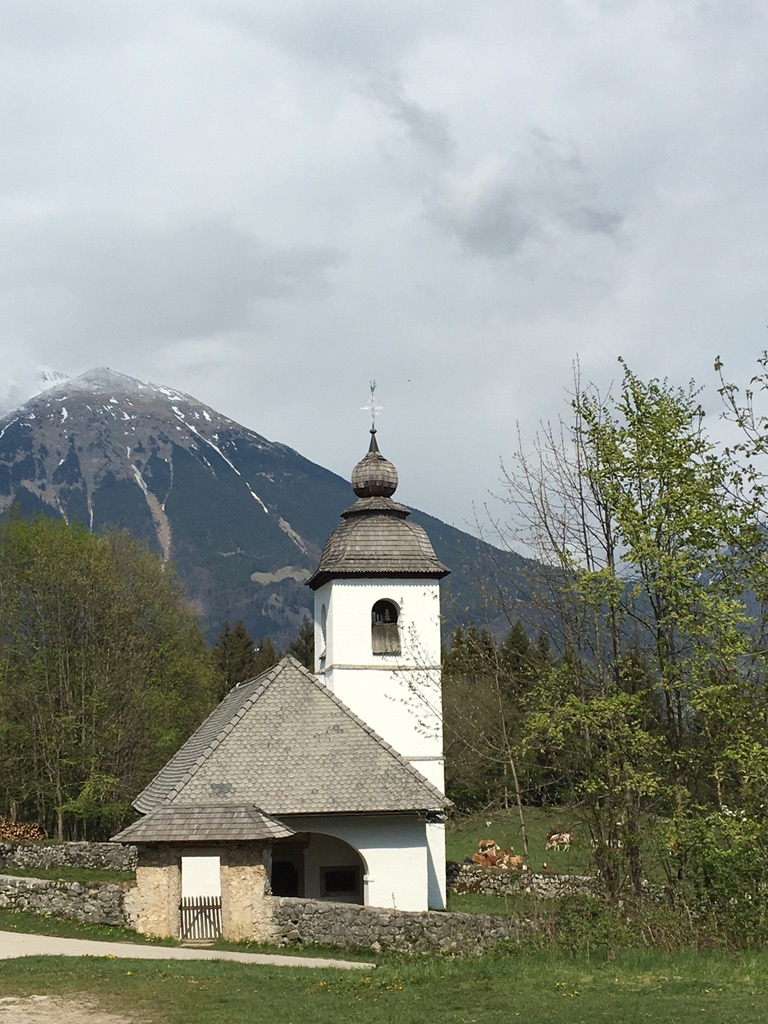 |
Then you can continue your hike along the green route and walk through gentle slopes where cows and sheep graze. The landscapes are beautiful, you also see Bled Castle from one of the hills.
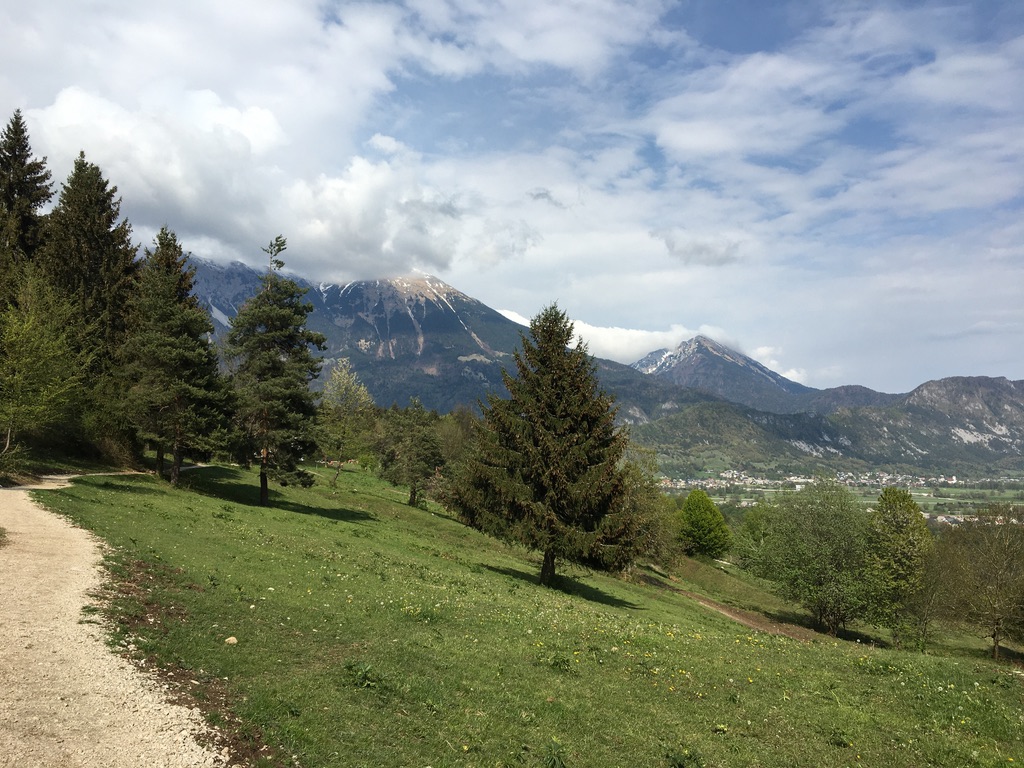 |
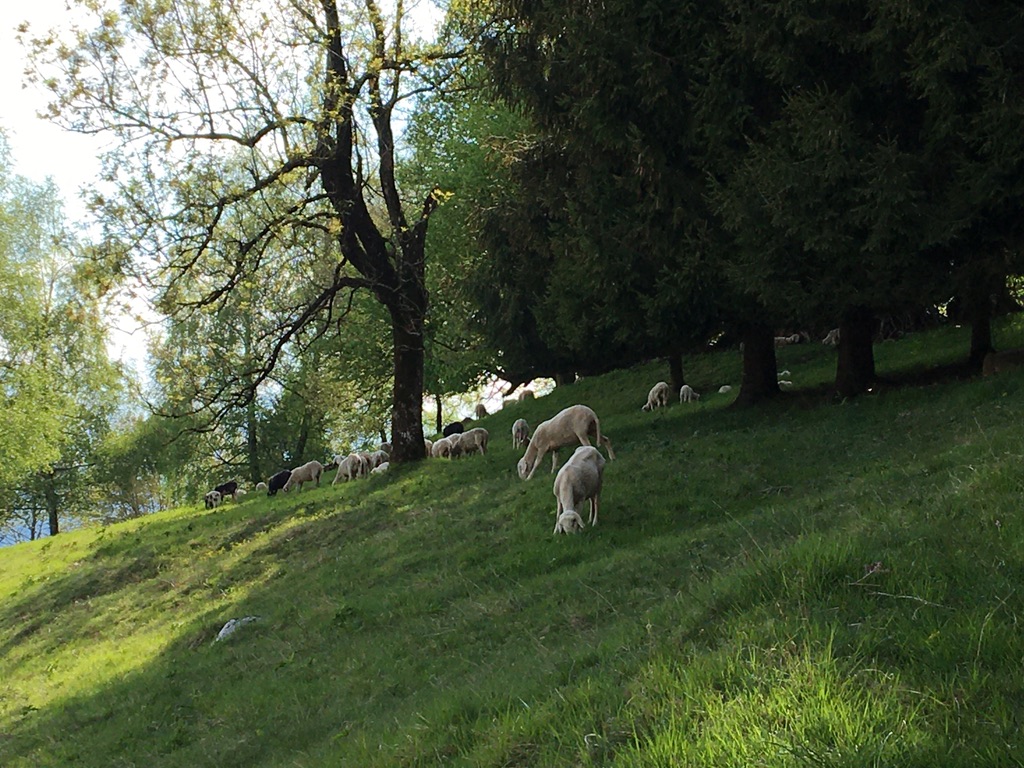 |
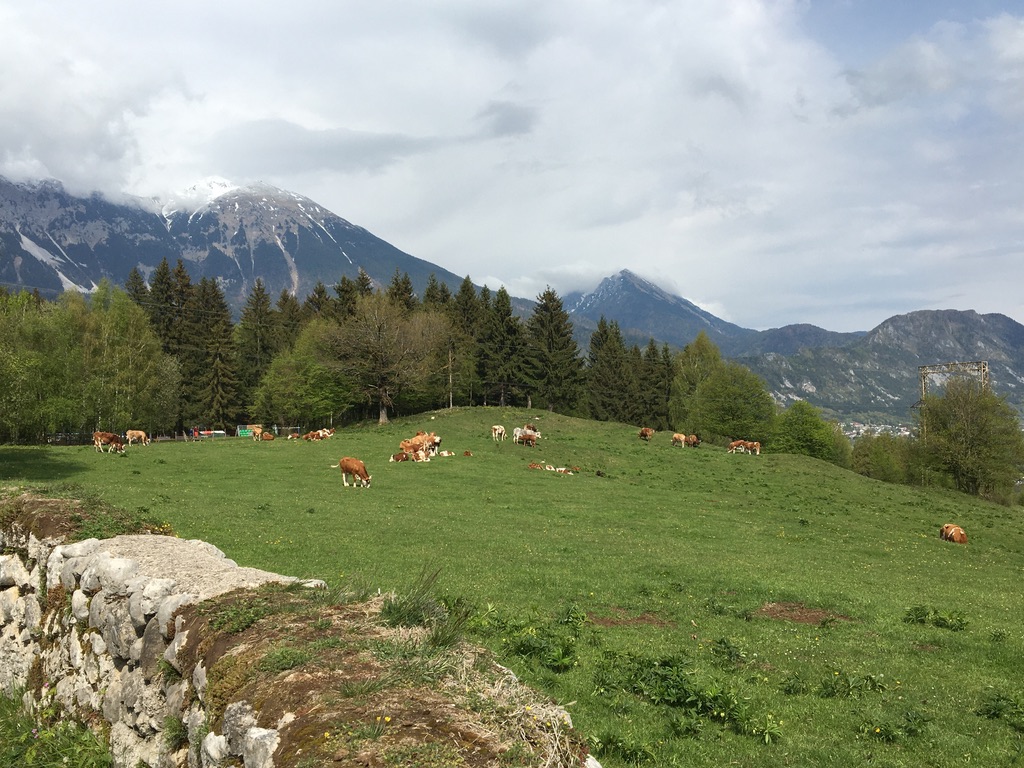 |
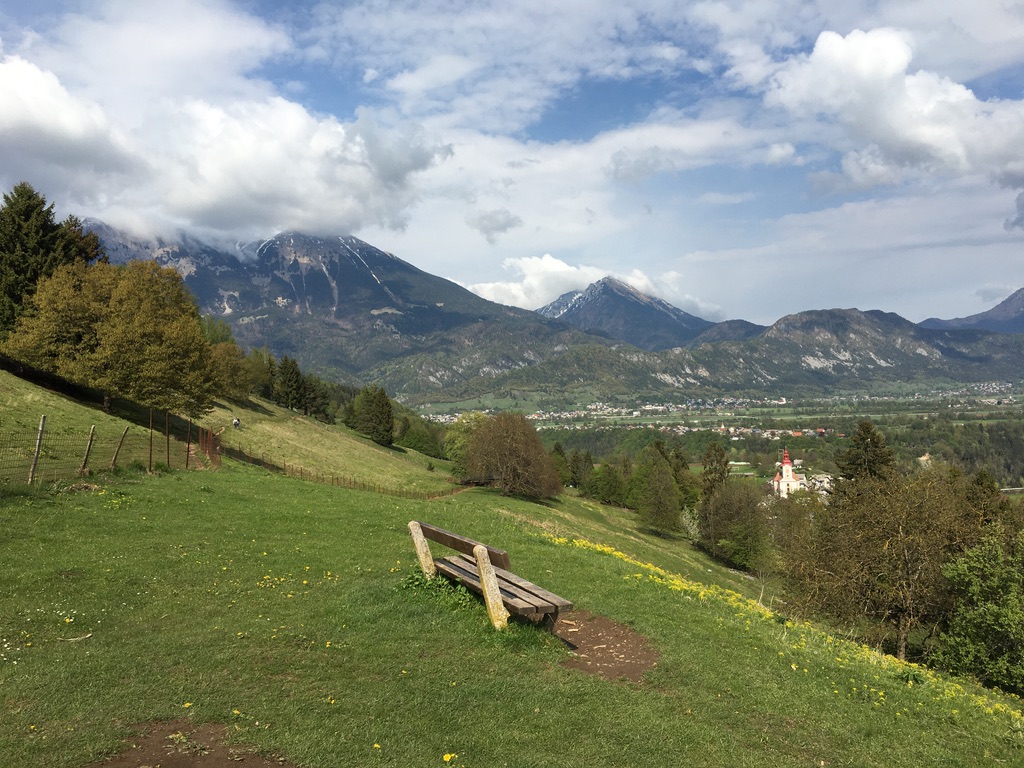 |
With the green route you get to the parking of the entrance to Vintgar Gorge or continue another 10 minutes through a small village to Podhom train station from where you get your train to Ljubljana. The green path takes around 85 minutes. In Podhom train station you will find a small bar filled with locals where you can buy small refreshments when waiting for your train. It takes around 90 minutes to get back to Ljubljana.
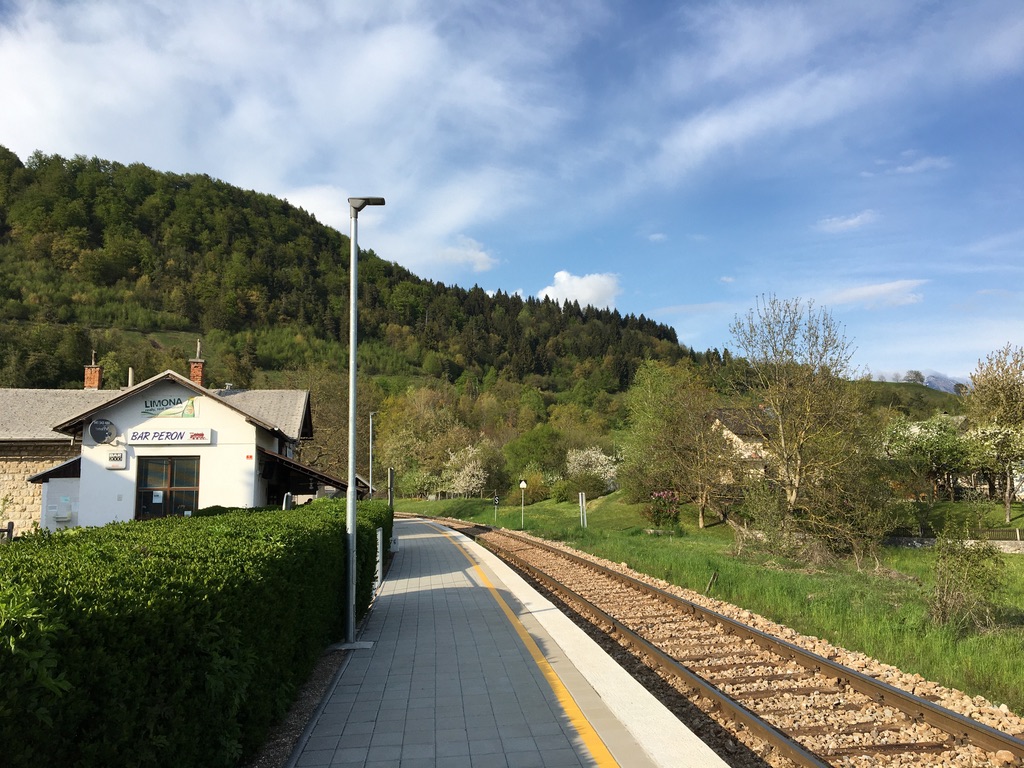 |
Ljubljana
The capital of Slovenia surprised us by being very small. We realized that when looking at city map and learning that most important sights are located within 10 minutes walking distance. Most of the attractions concentrate along Ljubljanica river and 2 parallel streets away. You can easily plan one day for exploration of Ljubljana, if you want to see museums and have a very relaxing pace, then opt for two days in the city.
We have stayed here one day and managed to see the most important sights.
Ljubljana’s old town in a vibrant (but calmer compared to most of European capitals) place with plenty of restaurants, I recommend to choose places serving traditional Slovenian cuisine (check here for my food guide of Slovenian cuisine). Ljubljana is also a great place to buy your authentic Slovenian souvenirs (good prices compared to other touristic towns and villages in the country which have either higher prices or limited selection). If you’re interested in buying traditional authentic souvenirs in Slovenia, check this post for my recommendations.
Ljubljana Castle
The first visited sight we visited was Ljubljana Castle located on the hill above the city.
The castle is a medieval fortress and a symbol of Slovenian capital. History intertwines with the present at every step, you can experience history at the projection in the Virtual Castle, at the permanent installations Slovenian History, Castle Weapons, Museum of Puppetry or through the adventure game Castle Escape among many other animations!
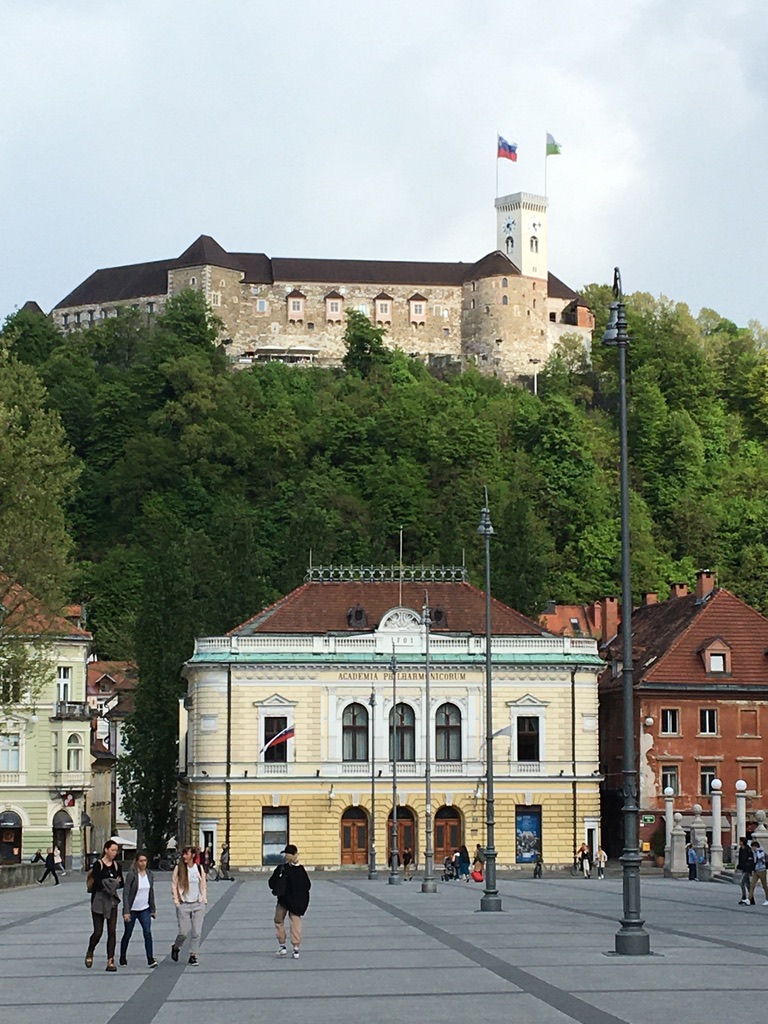 |
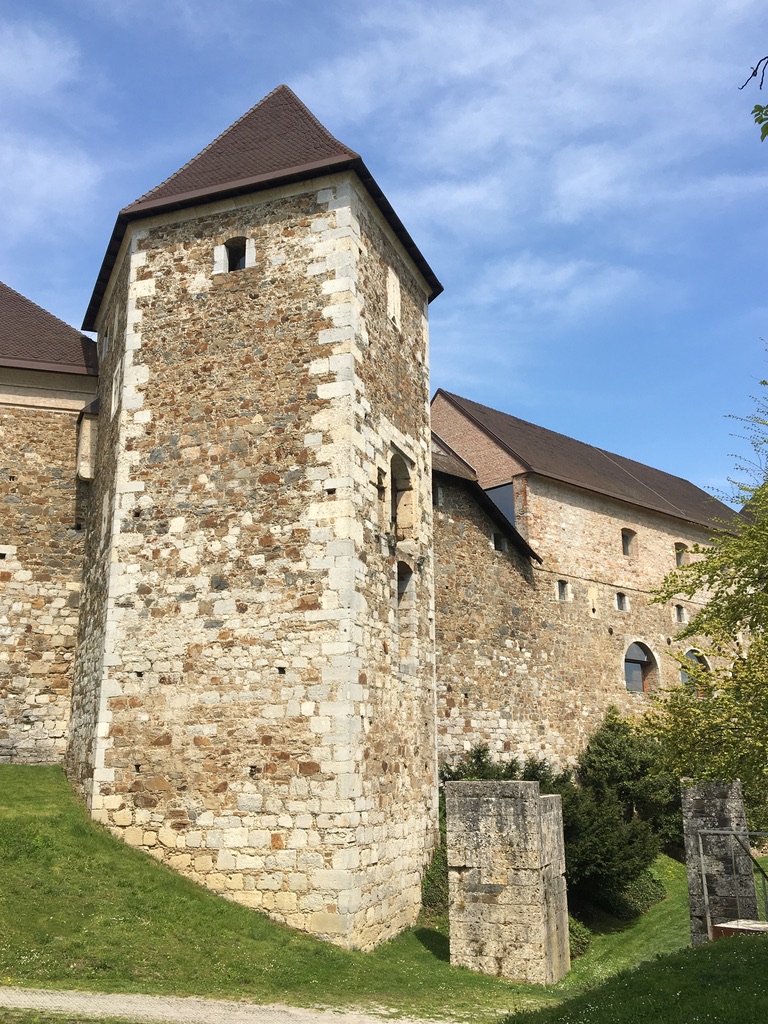 |
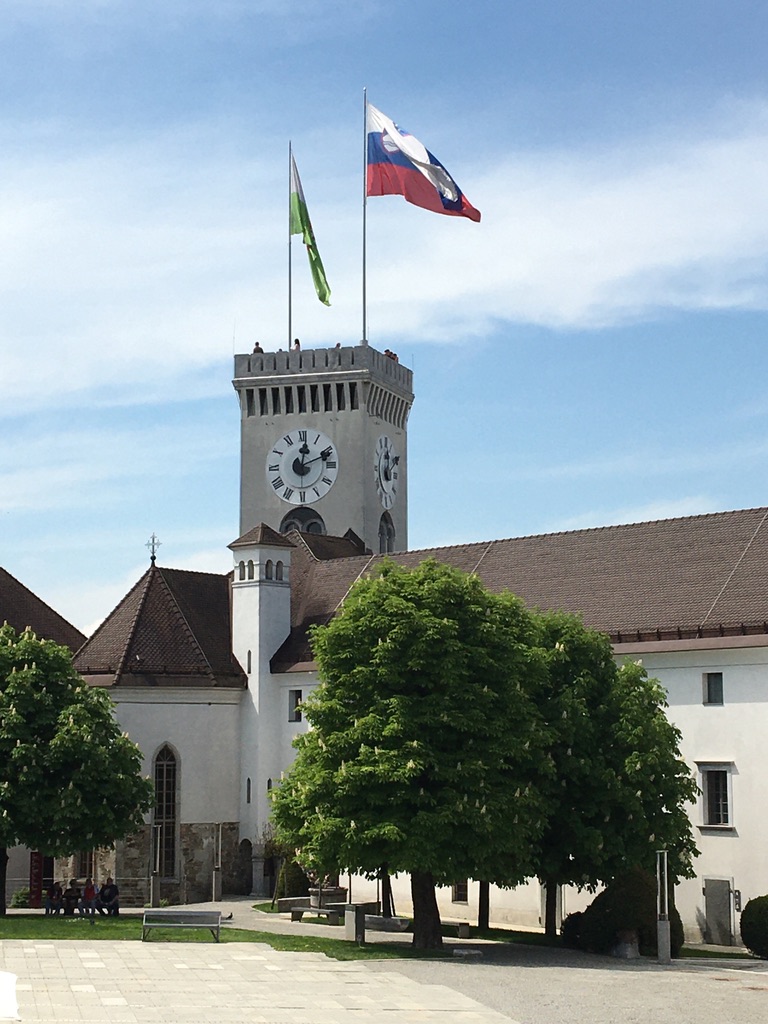 |
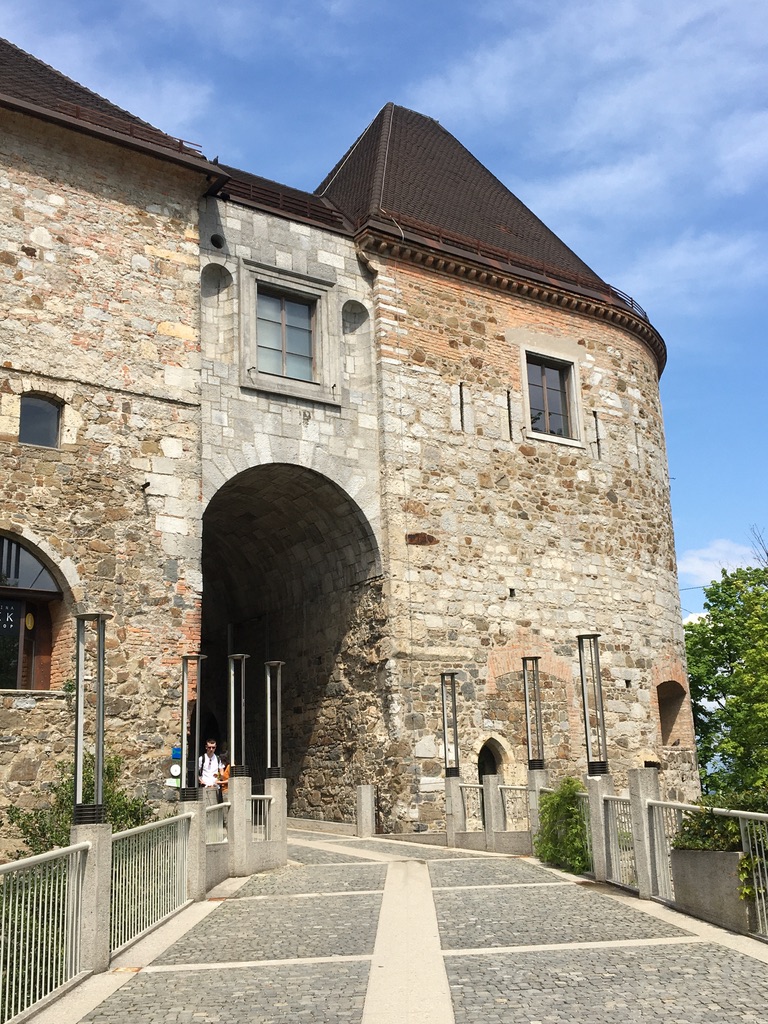 |
Meanwhile you can enjoy the culinary experience at the restaurants Gostilna na Gradu and Strelec or at the Castle Coffee shop or the Wine Cellar.
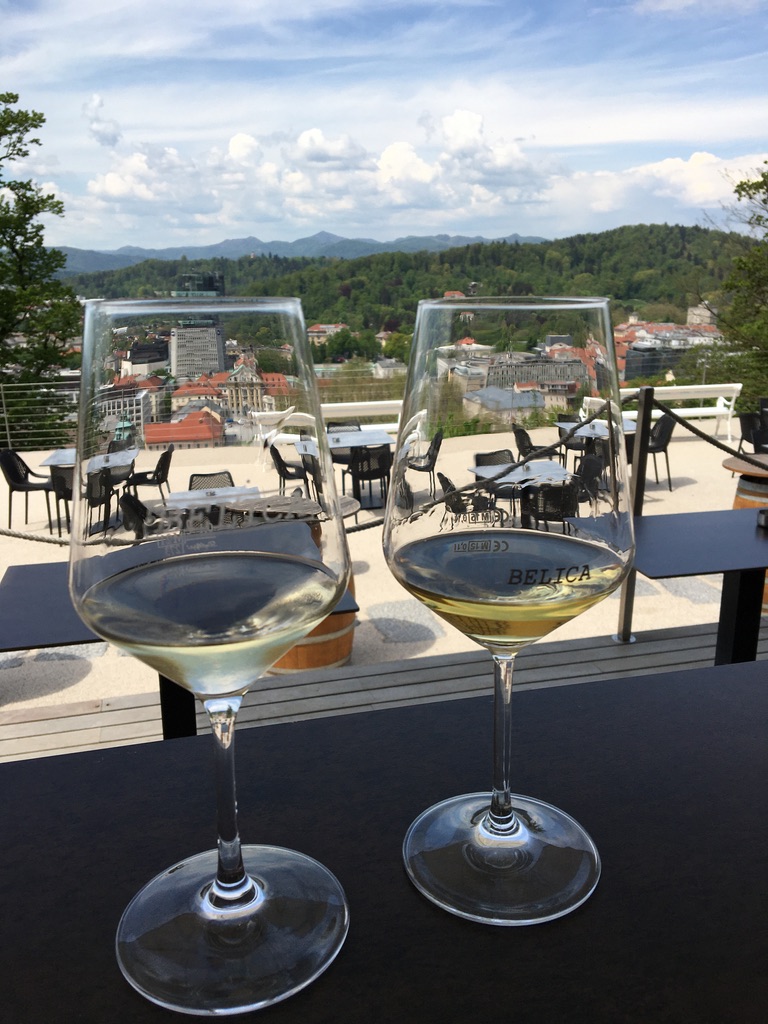 |
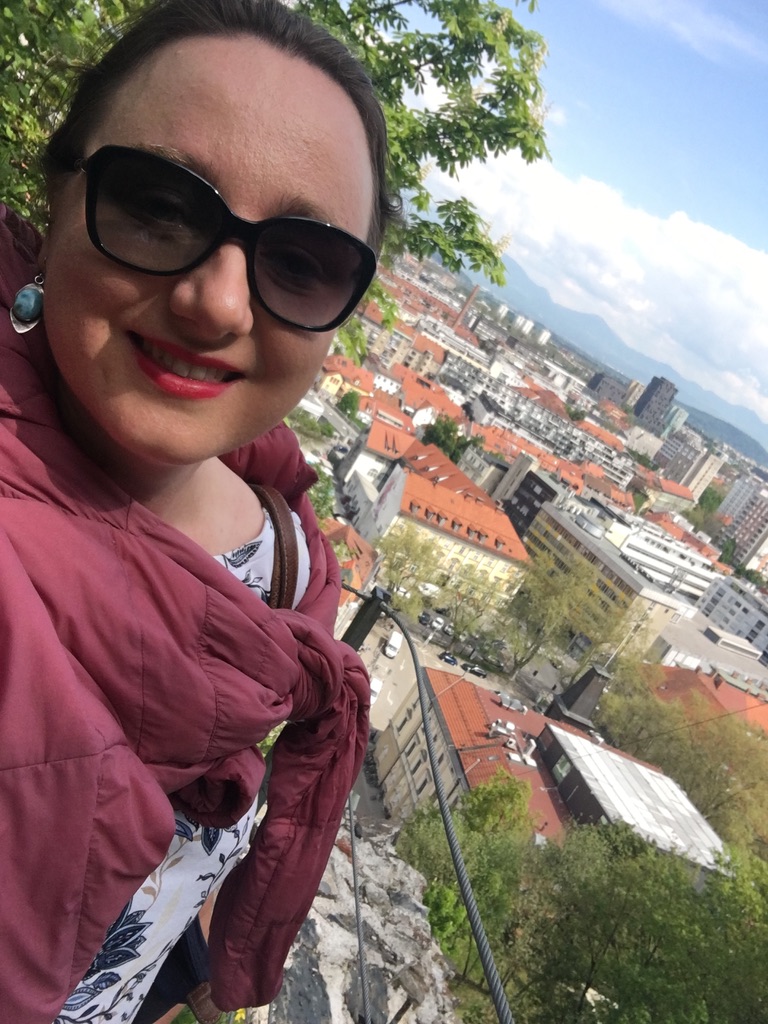 |
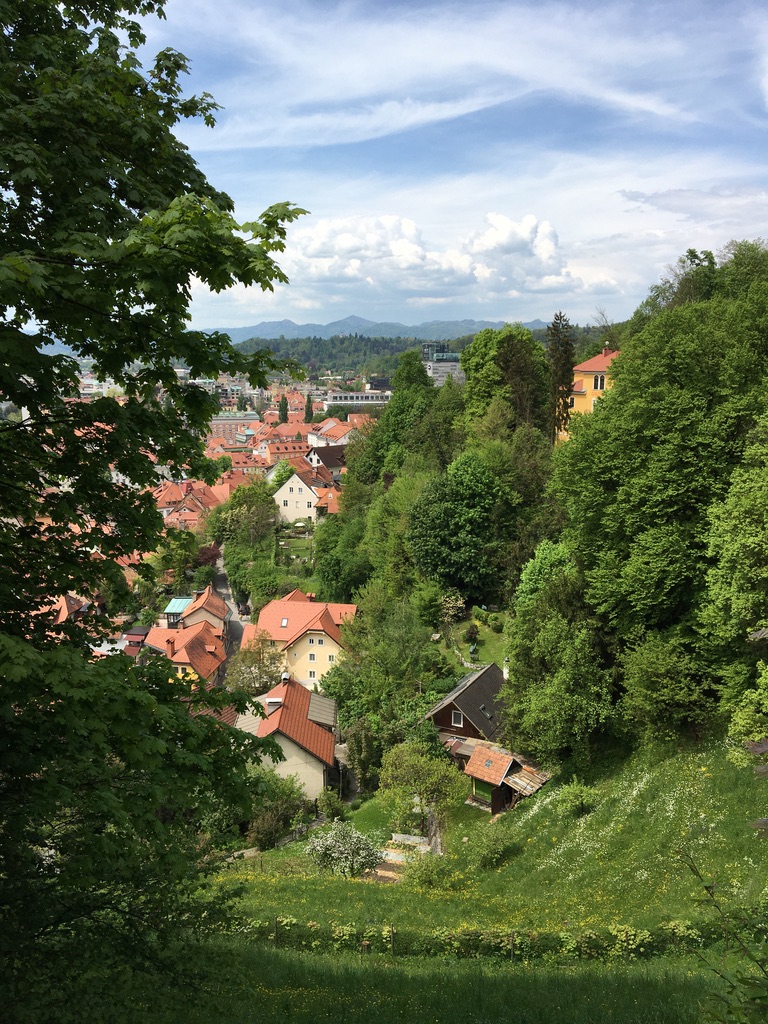 |
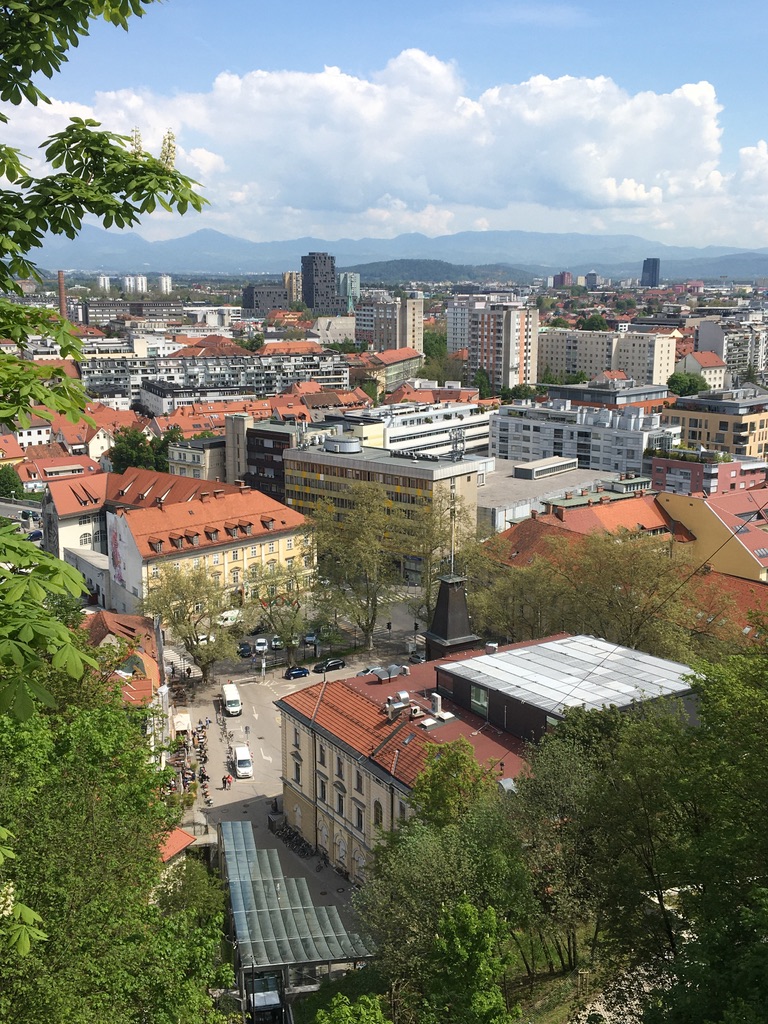 |
I especially recommend the Wine Cellar, with a good selection of local wines, you can get a glass of wine and small plate of local prosciutto and get on the terrace with a scenic view at the city.
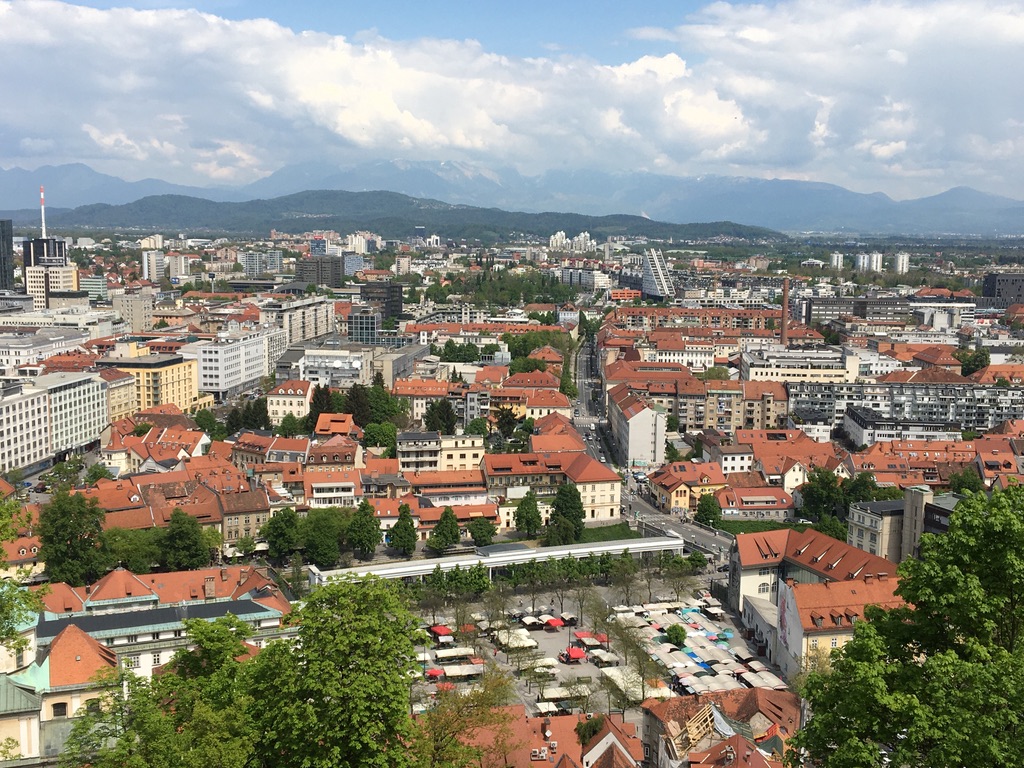 |
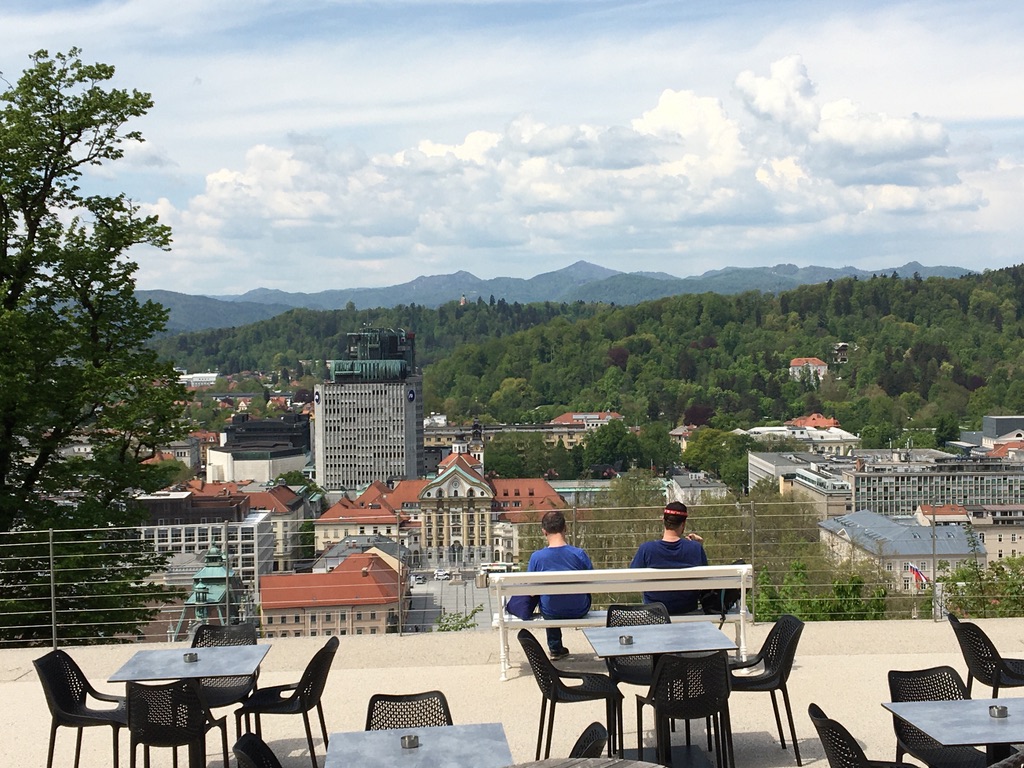 |
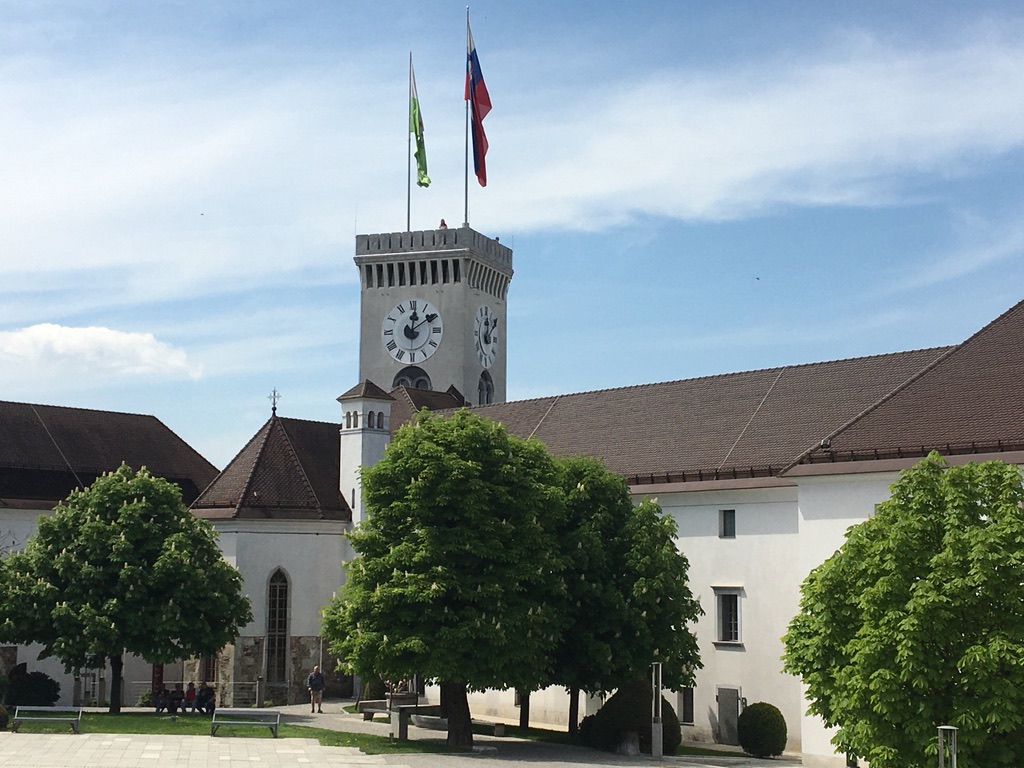 |
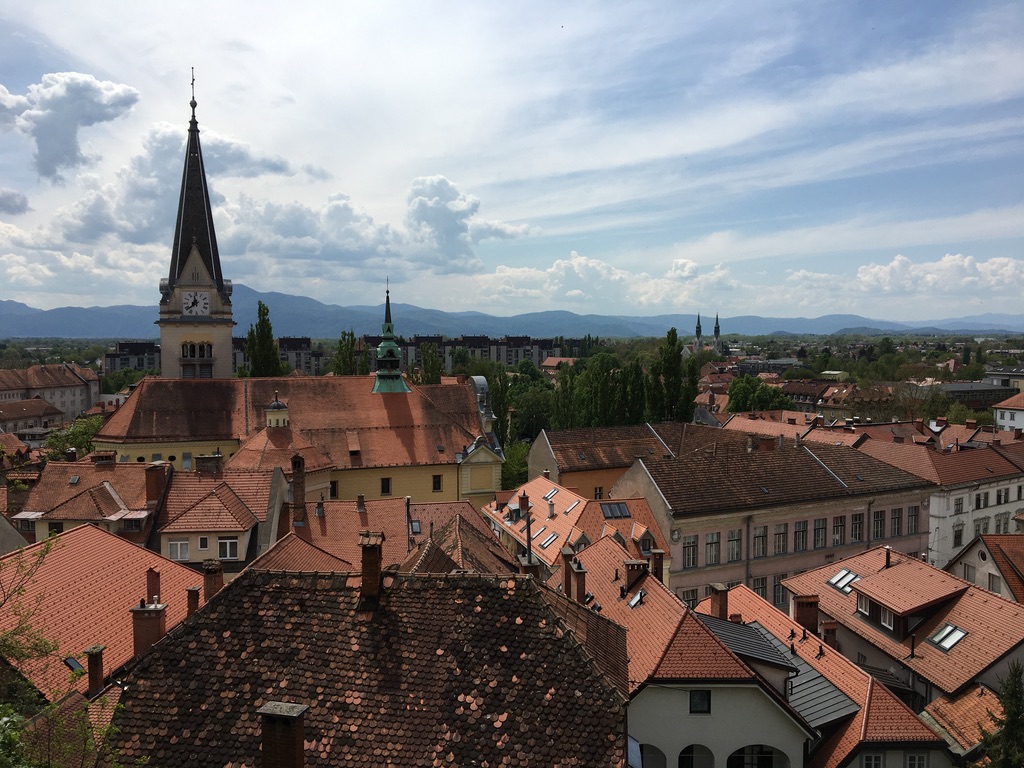 |
You can ascend from the city centre to the Castle Hill in just one minute on the panoramic furnicular railway. However, if you don’t have mobility issues I really recommend opting for a walk, you basically walk to the castle through a forest, along southern slopes you also get through the Castle Vineyard. The little hike is lovely and permits to enjoy nature in the middle of the city. This just shows how Slovenians love nature and how green the capital is.
The Annunciation Church and St. Nicholas’s Cathedral
We directed our next steps to two main churches of Ljubljana. Note that St. Nicholas has entrance fee (2 euro currently). When starting your day in Ljubljana, check the churches opening hours, they are closed in different hours of the day and it can differ during a week, so make sure you will not miss them.
The Church of the Annunciation was constructed in XVII century. Its façade is adorned with a copper statue of St. Mary, Ljubljana’s largest Madonna statue.
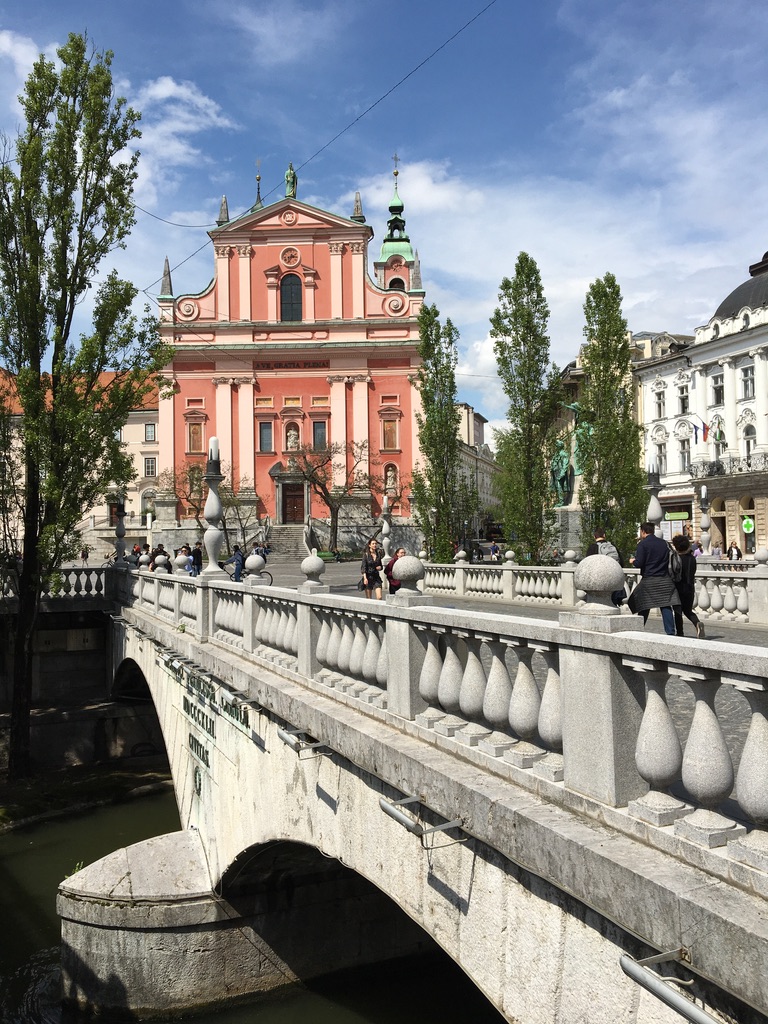 |
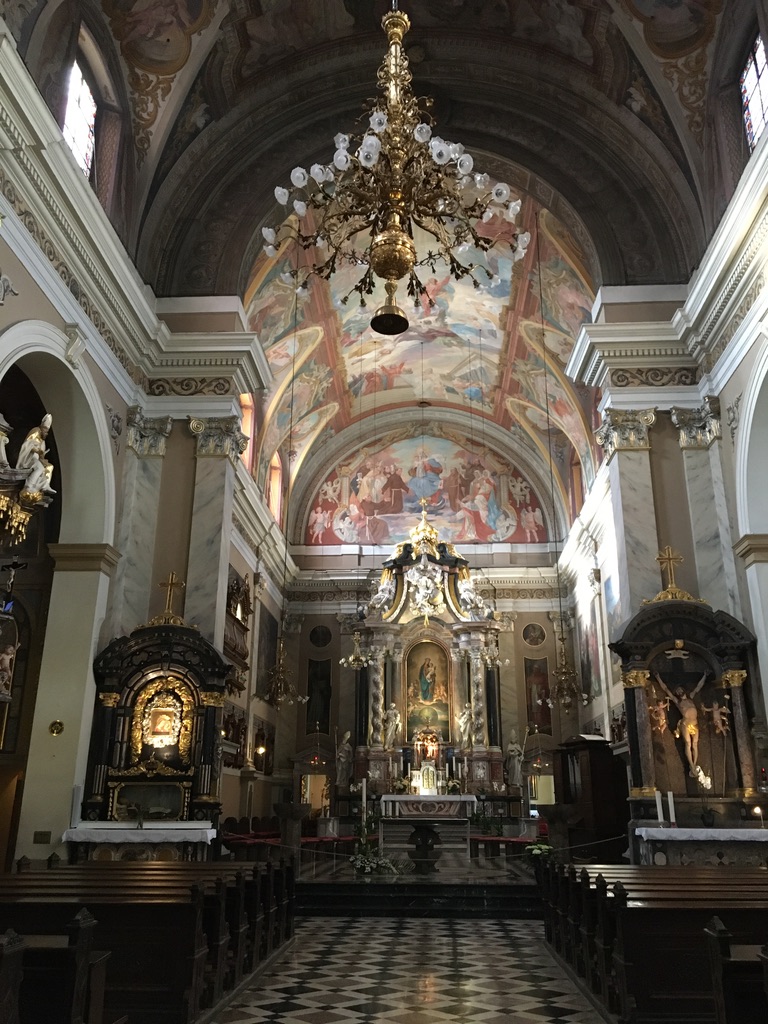 |
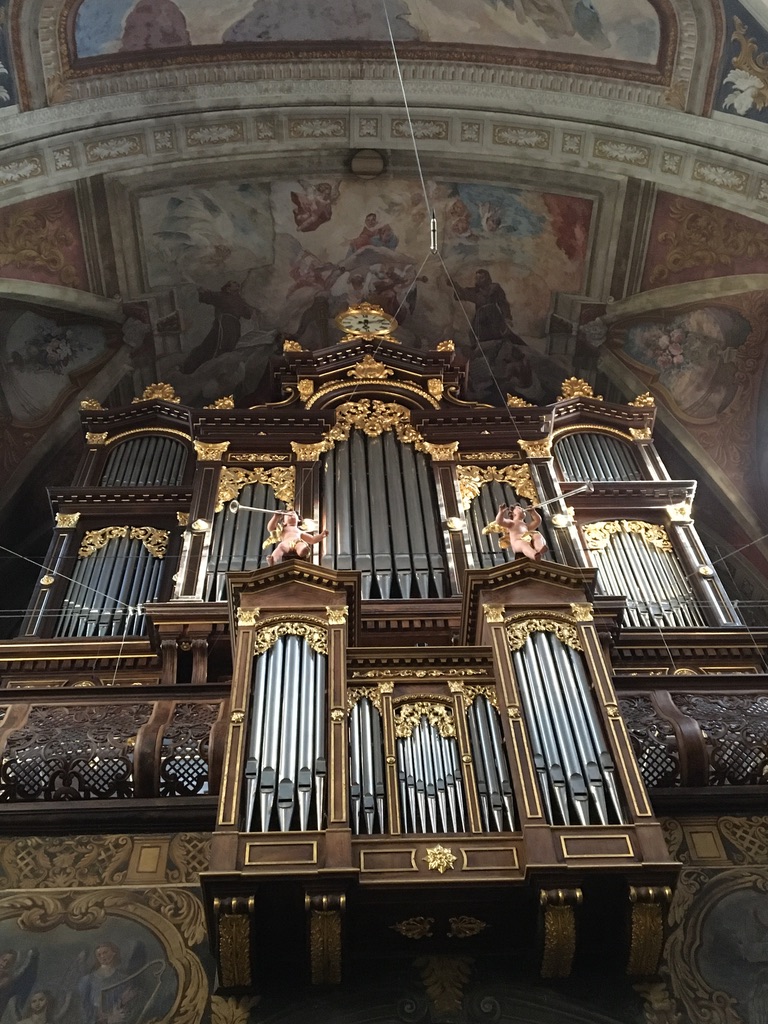 |
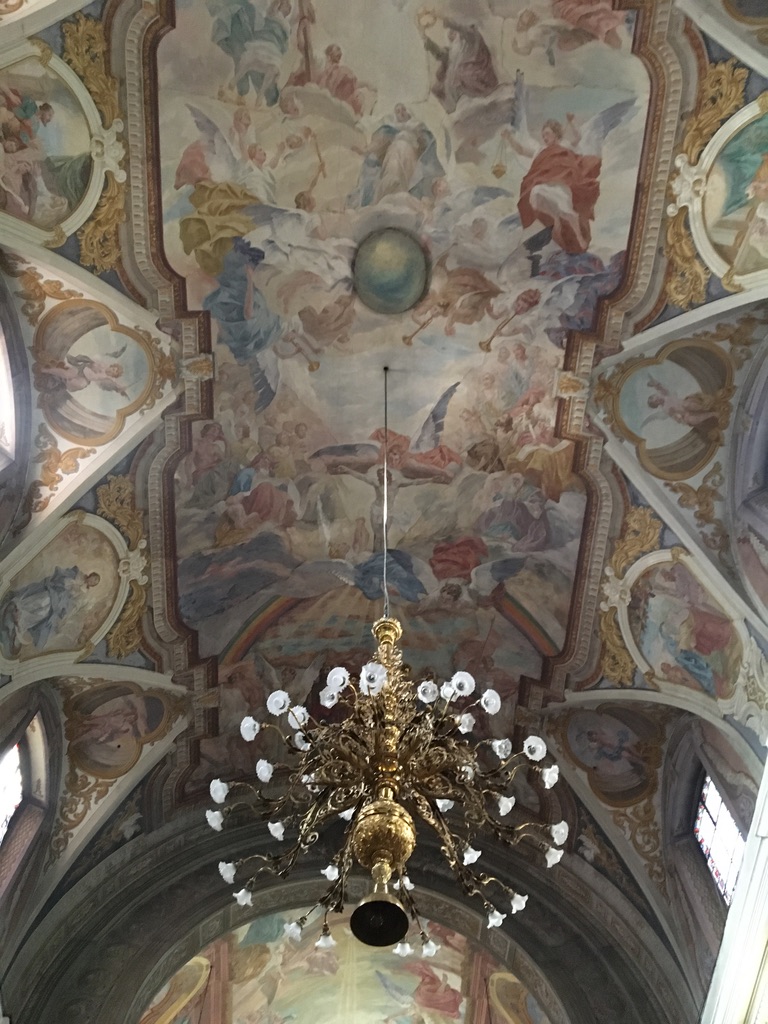 |
St. Nicholas Cathedral has impressive baroque hall with side chapels shaped in the form of the Latin cross. One of the most precious sights of the church is the dome fresco painted by Matevž Langus in 1844. The most outstanding 20th century additions include Tone Demšar’s main entrance door relief depicting the history of Slovenia.
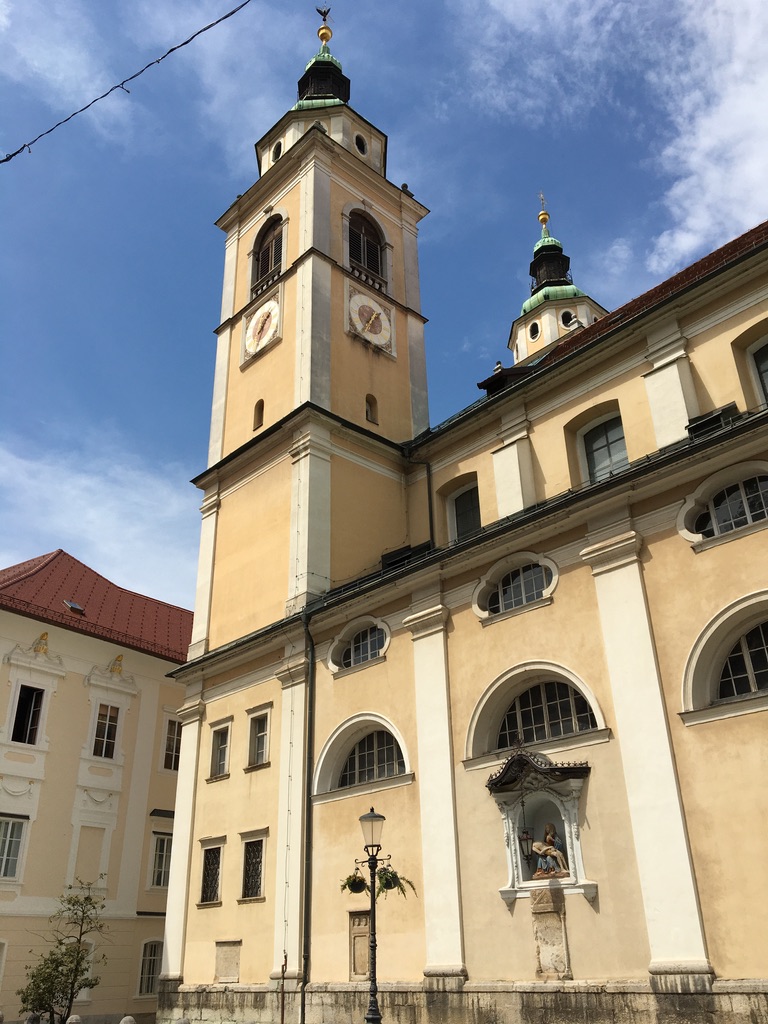 |
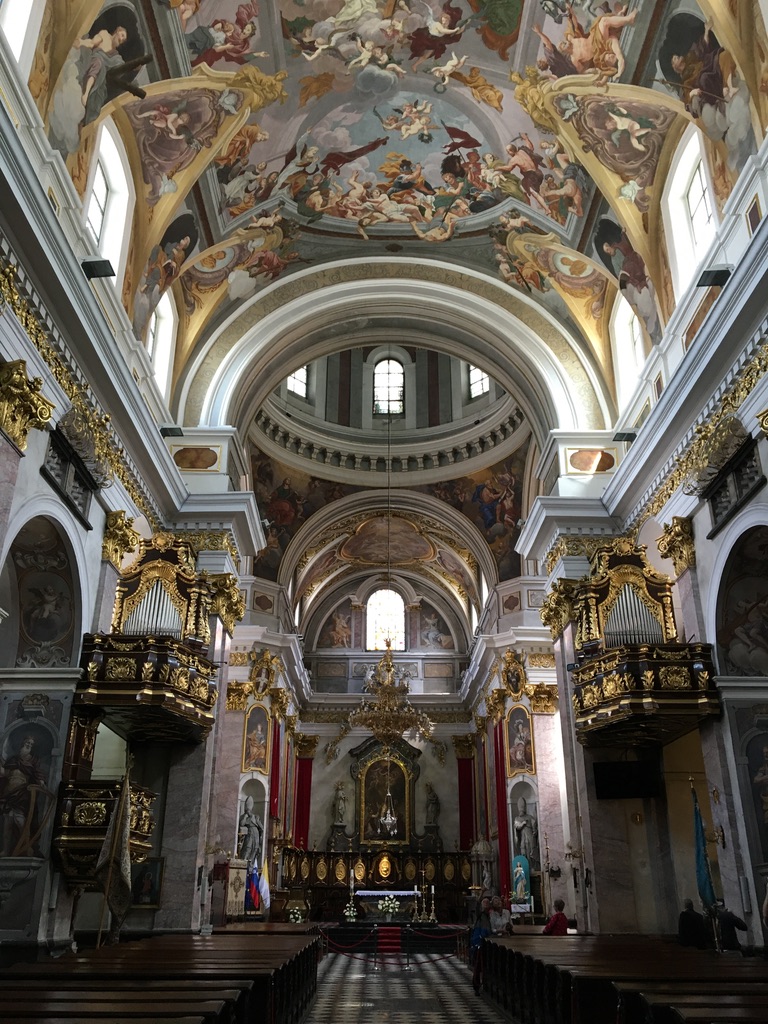 |
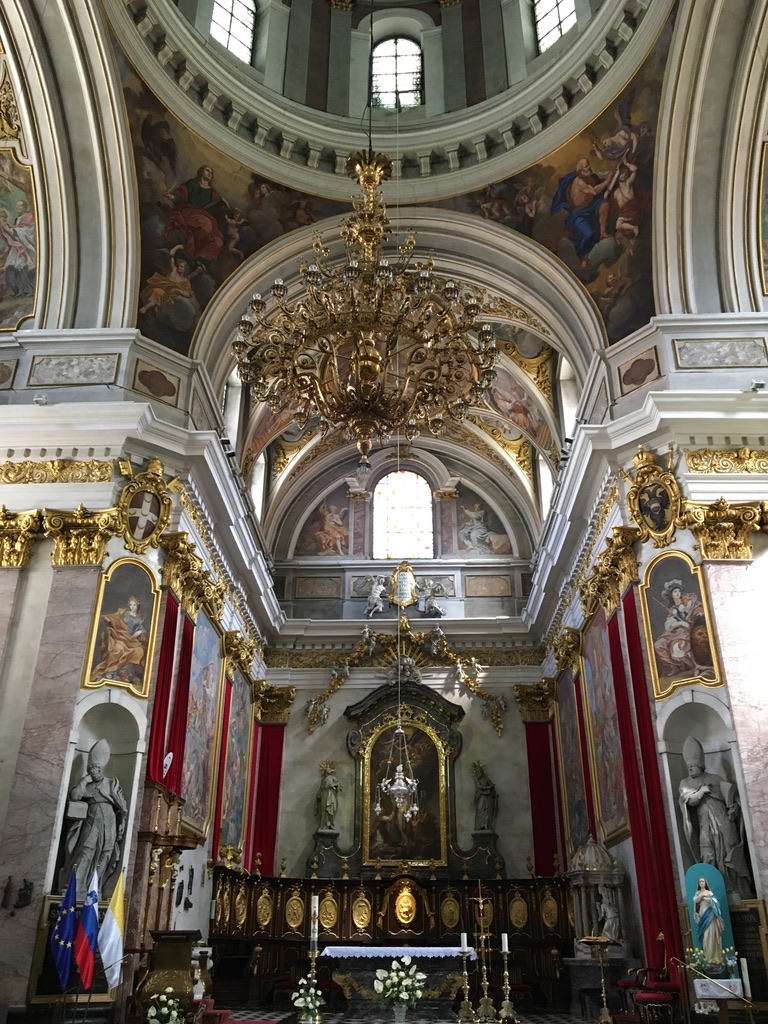 |
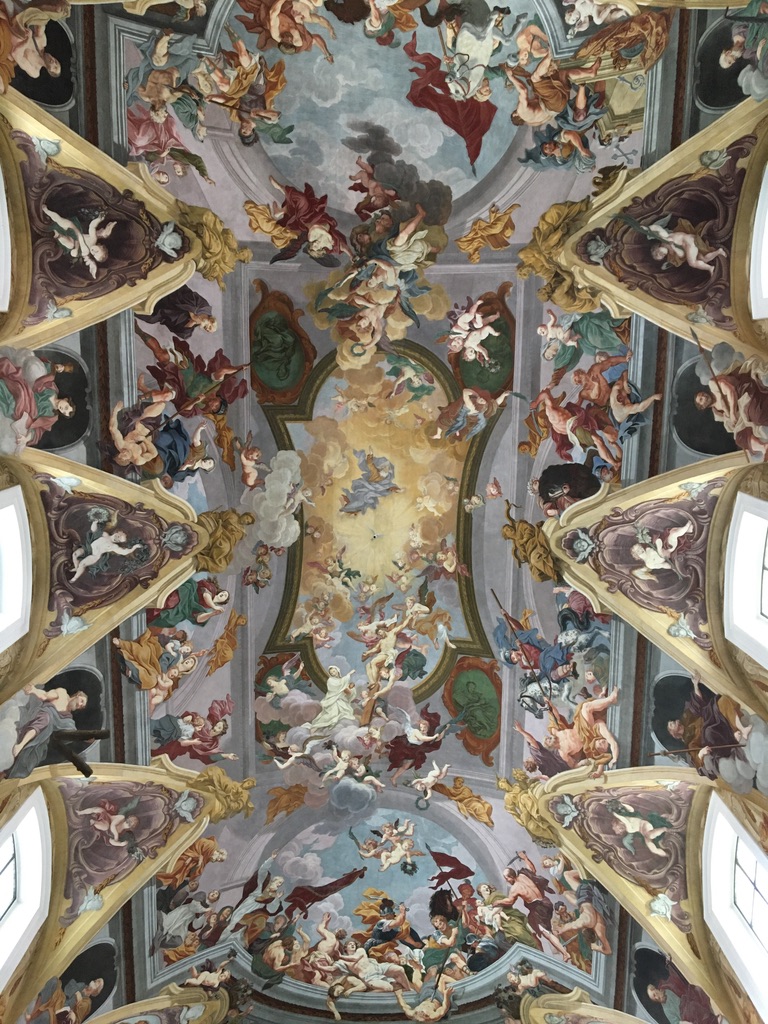 |
Ljubljana’s Bridges
With old town concentrated along Ljubljanica River, the capital city centre has very original set of bridges that allow to conveniently cross both sides of the river during sightseeing.
One of the most famous one is a Dragon Bridge, with Dragon being a symbol of the city.
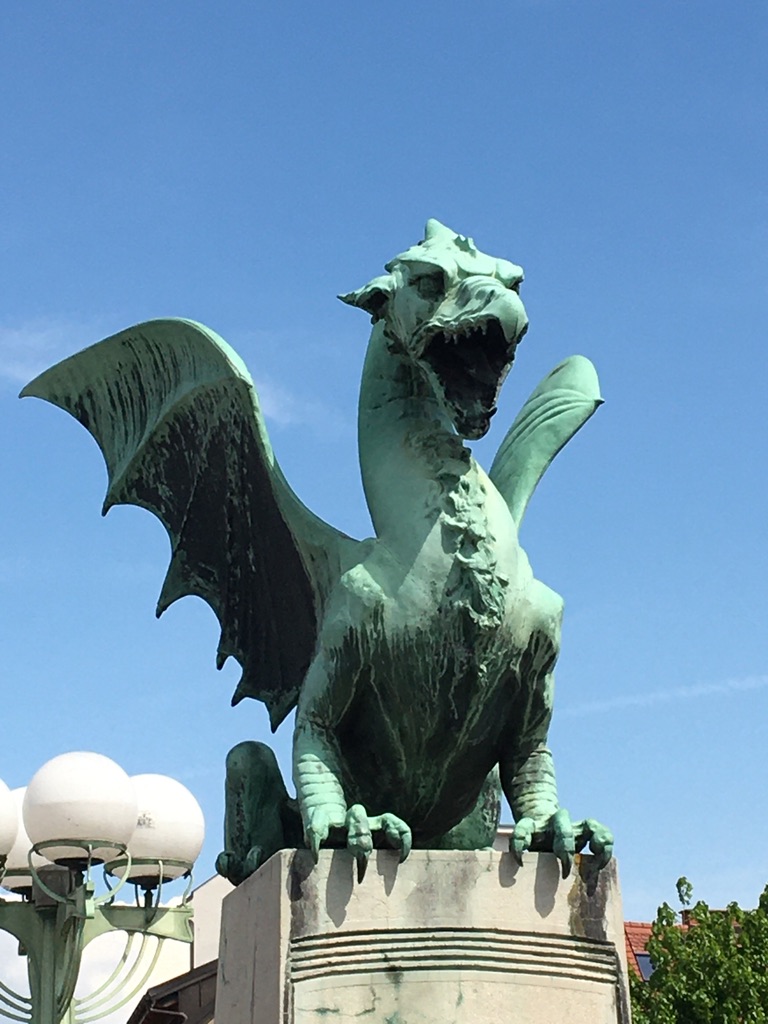 |
The Legend
The dragon creature is deeply related to the legend of the foundation of Ljubljana. Legend has it that Ljubljana was founded by Jason, the hero of Greek mythology who stole the golden fleece from King Aeetes and then fled aboard the Argo with his comrades, known as Argonauts, across the Black Sea and up to Danube and the Sava until they reached the Ljubljanica. There they dismantled their ship in order to carry it overland to the Adriatic coast, where they rebuilt it and set sail back to Greece.
Before Jason and the Argonauts reached the source of Ljubljanica, they came across a great lake and, next to it, a marsh, where Jason encountered a terrible monster, which he fought and killed. That monster was the Ljubljana dragon, which today lives atop the castle tower of the Ljubljana coat of arms.
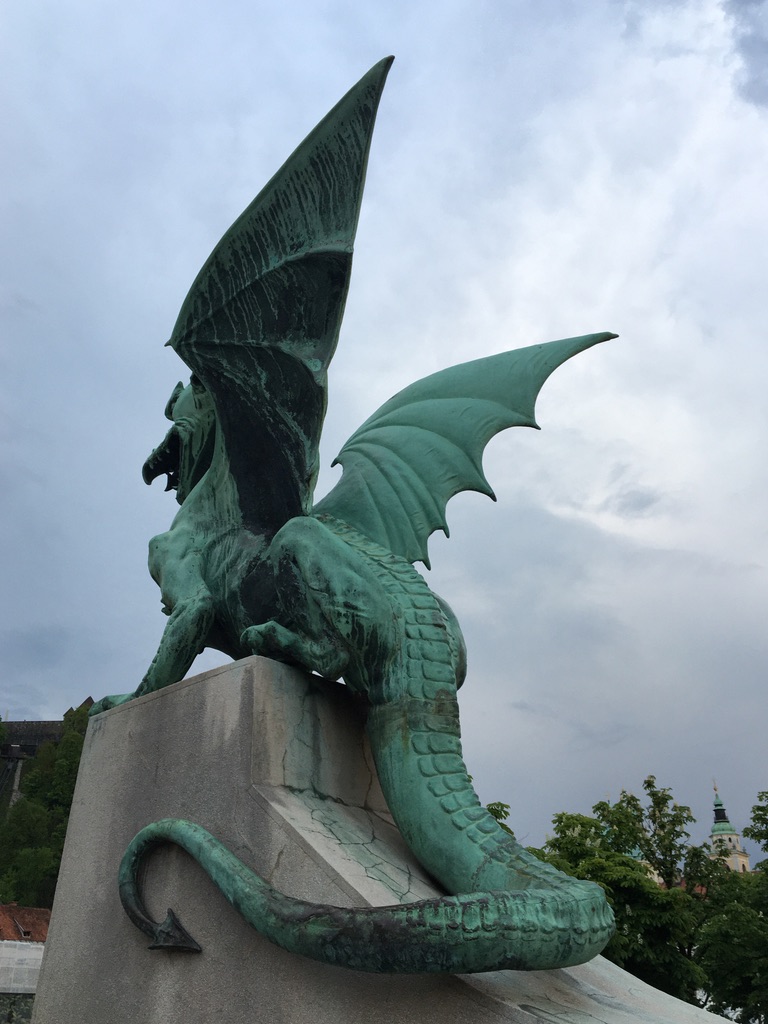 |
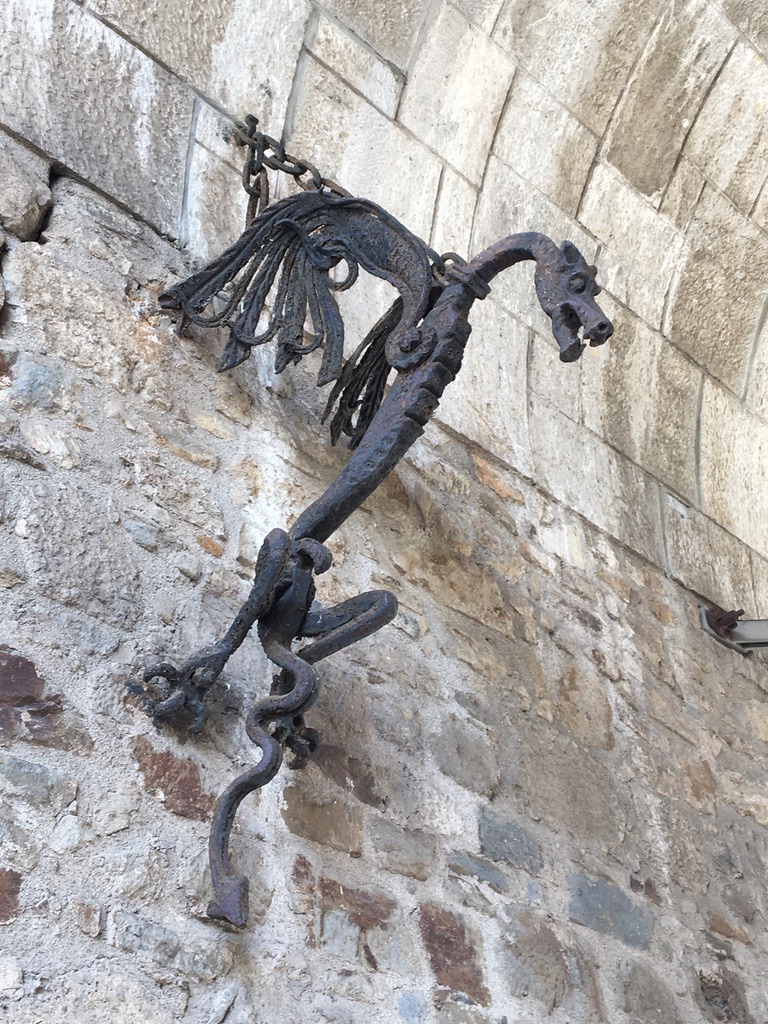 |
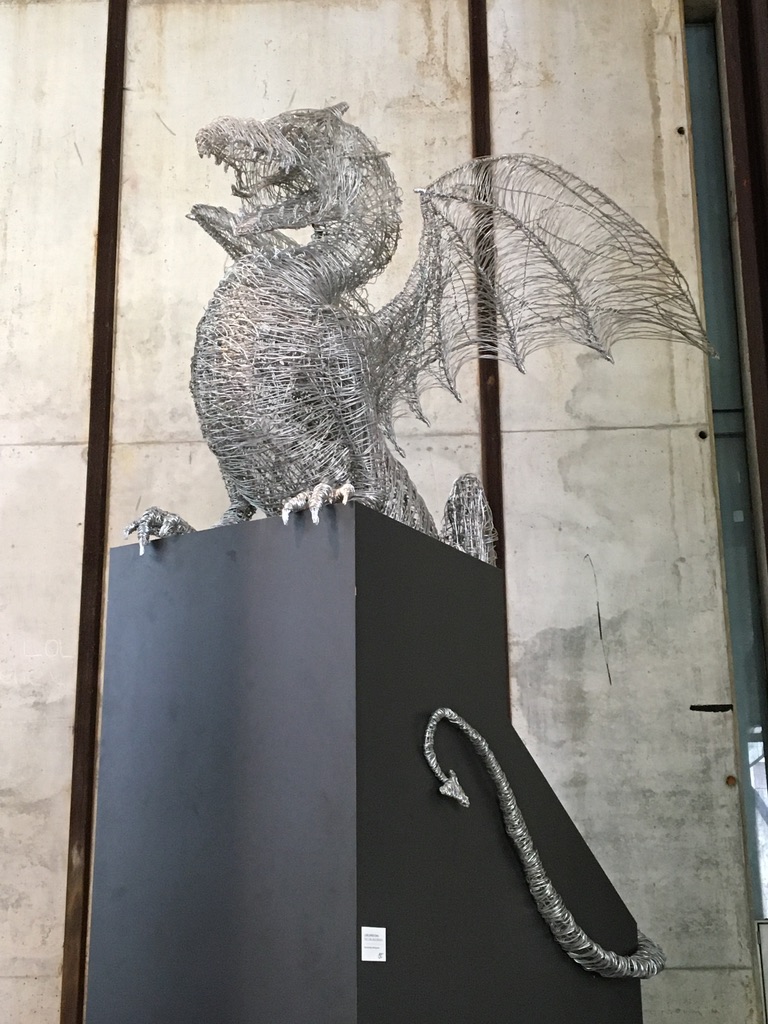 |
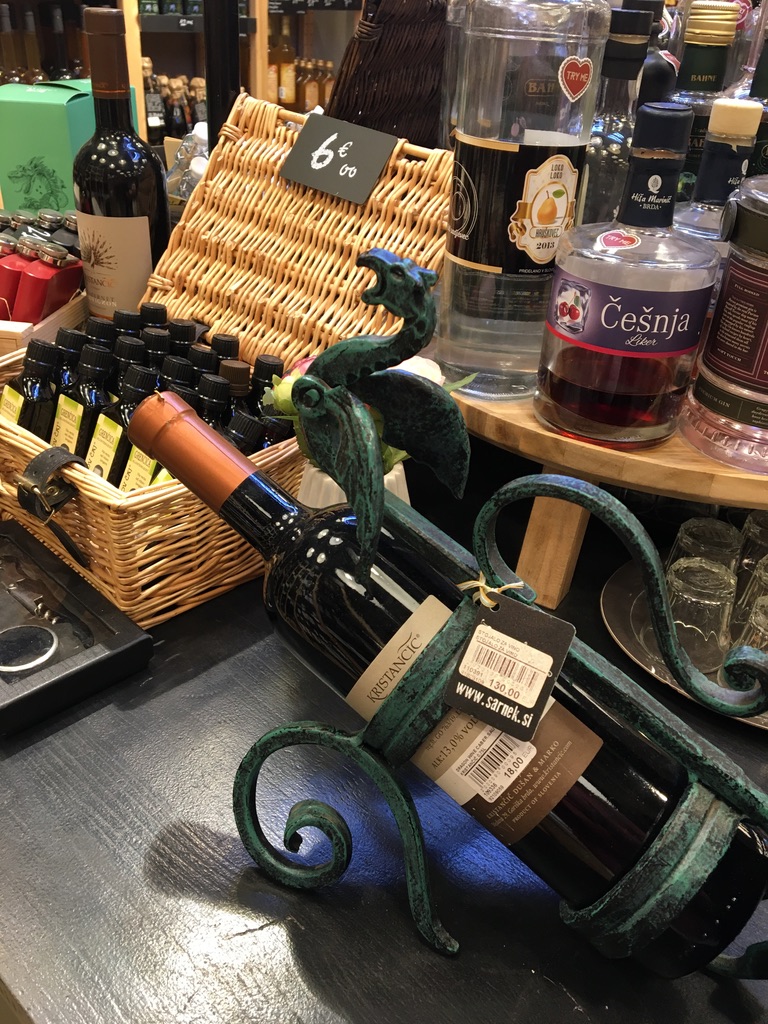 |
Another famous bridge is a Triple Bridge. The characteristic bridge is a group of three bridges across the Ljubljanica River. It joins Ljubljana’s historical medieval town on one bank and the modern city of Ljubljana.
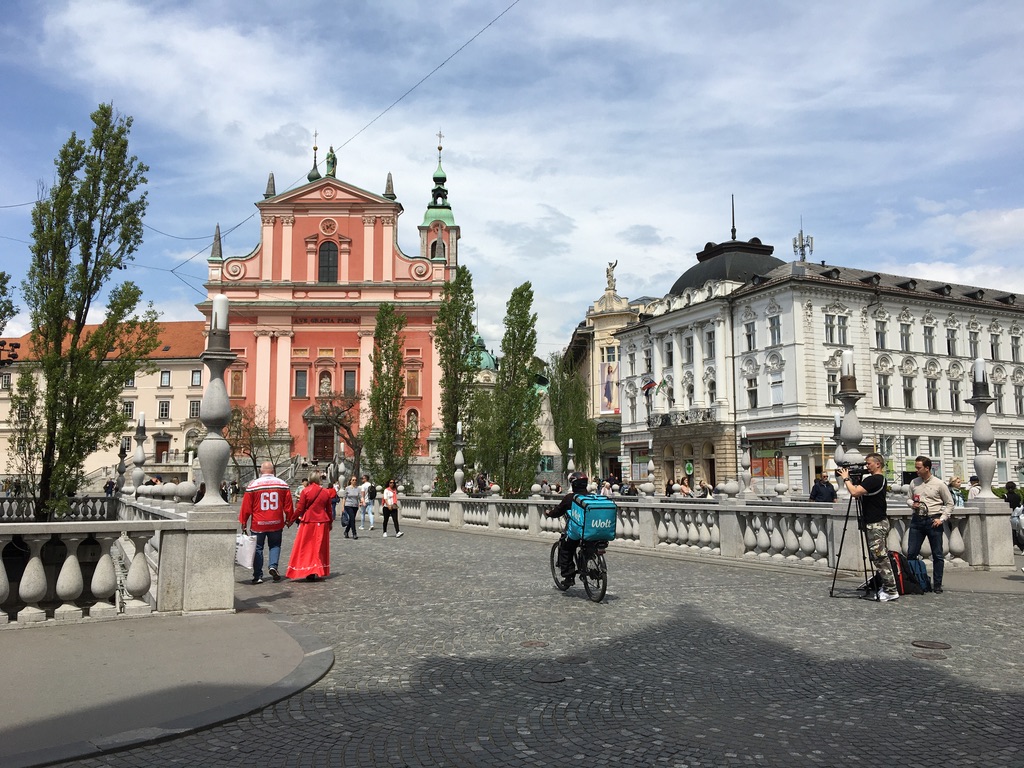 |
When you walk along the river promenades you will also notice characteristic Butcher’s Bridge adorned with bizarre large statues and small sculptures of deformed little creatures sitting on the parapet.
I also recommend you to visit the marble staircase of the National University, you also can see their impressive library but the visits are allowed only on Saturdays. The main entrance hall is opened other days in the week and can be visited free of charge.
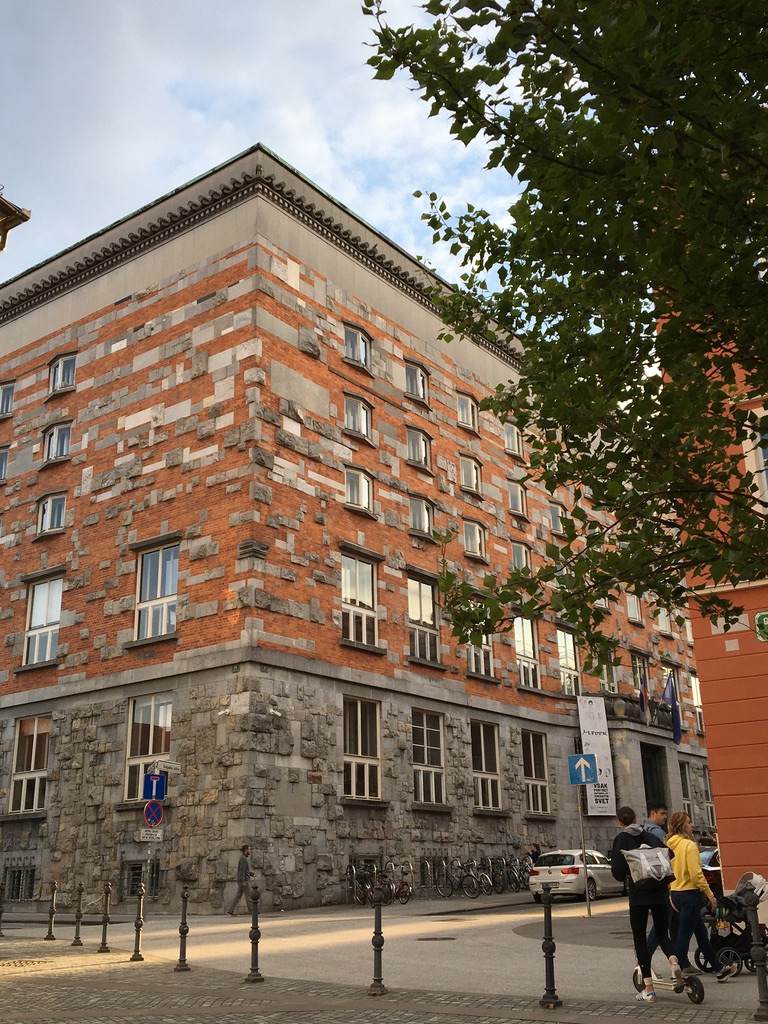 |
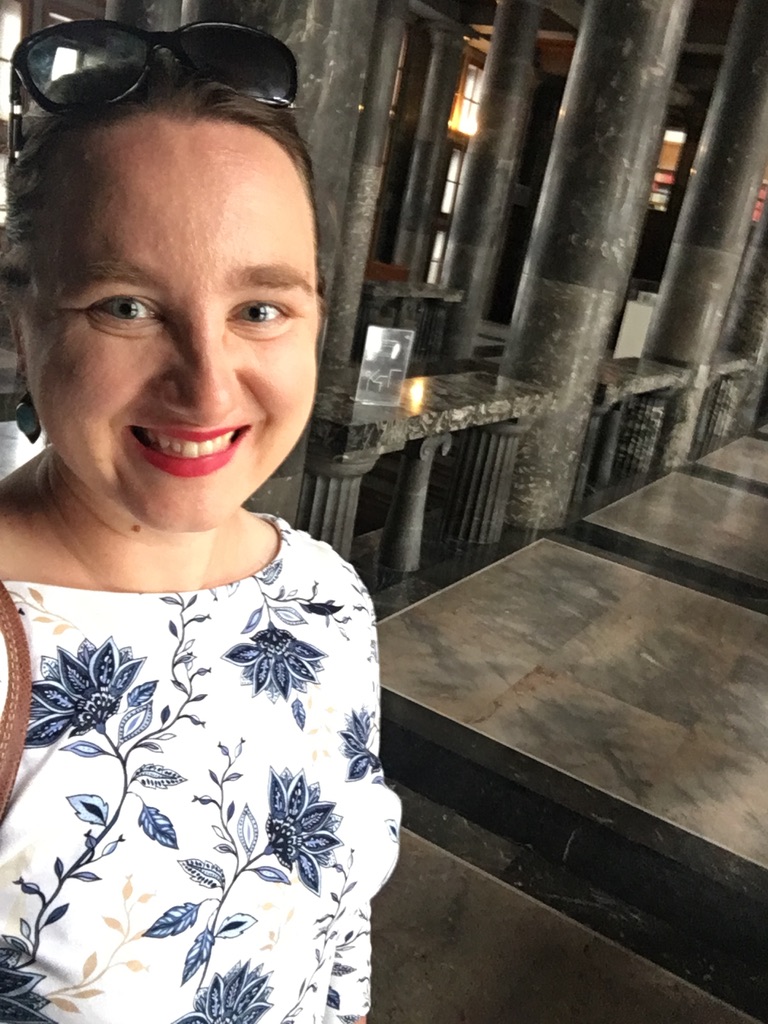 |
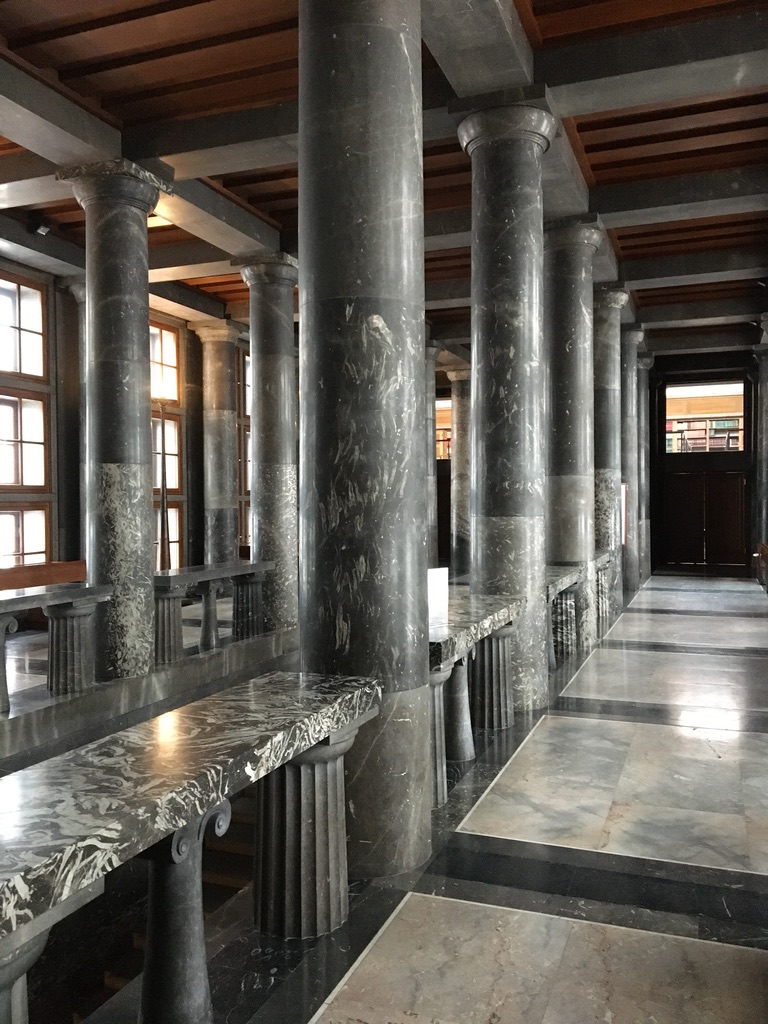 |
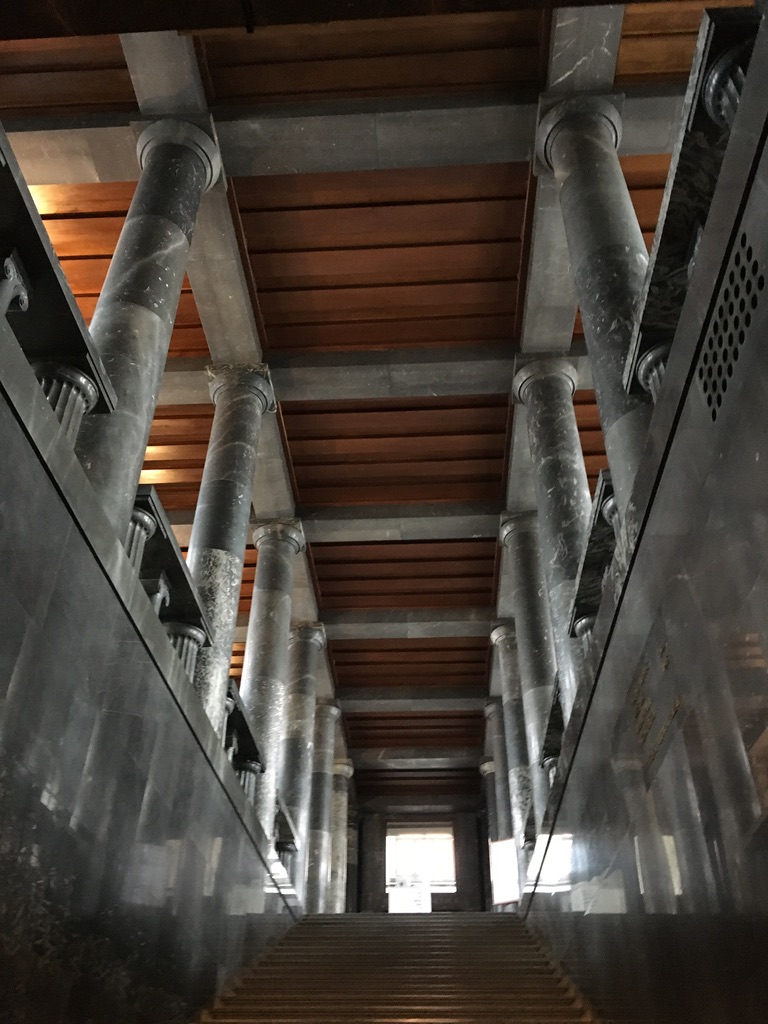 |
When walking along the city, you can have a look at Ljubljana’s Town Hall, Congress Square where you can see the building of the university, Slovenian Philharmonic Hall and Ursuline Church. You also can stop here in of the cafes or sit in a small park to have a relaxing break during your walk.
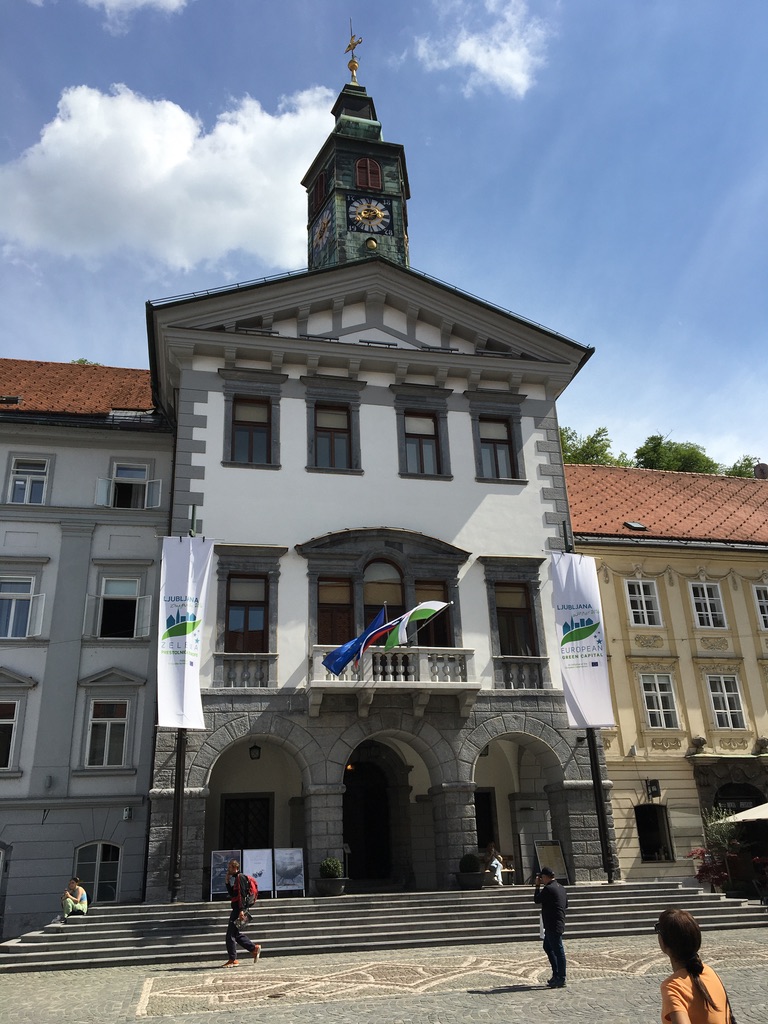 |
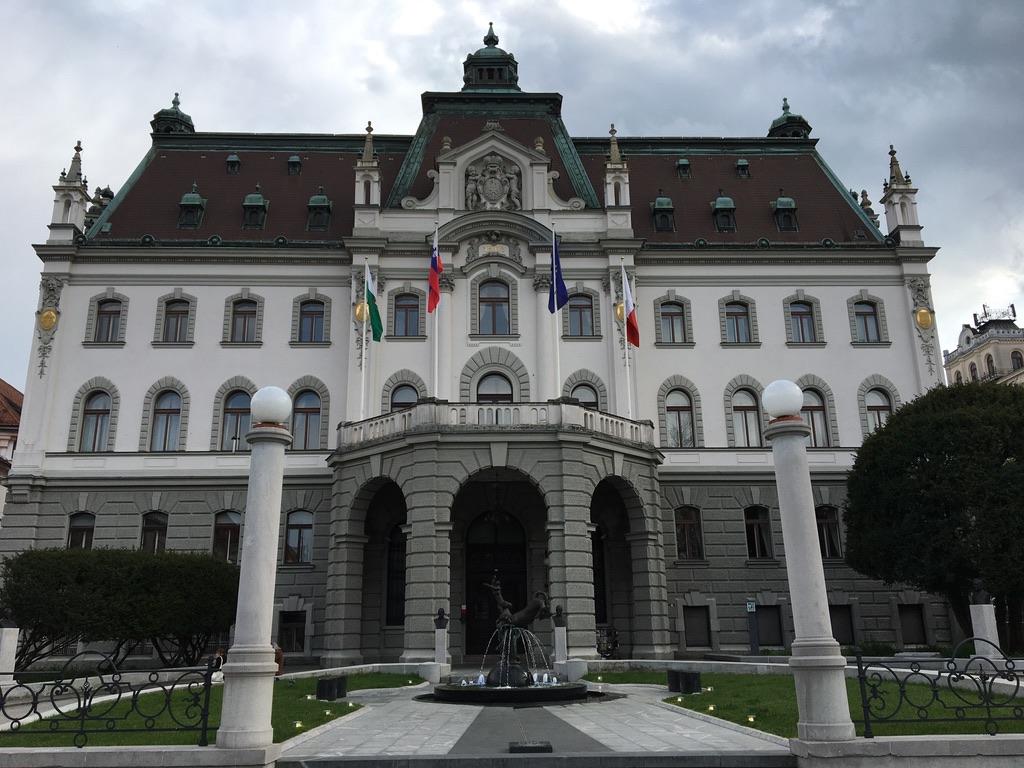 |
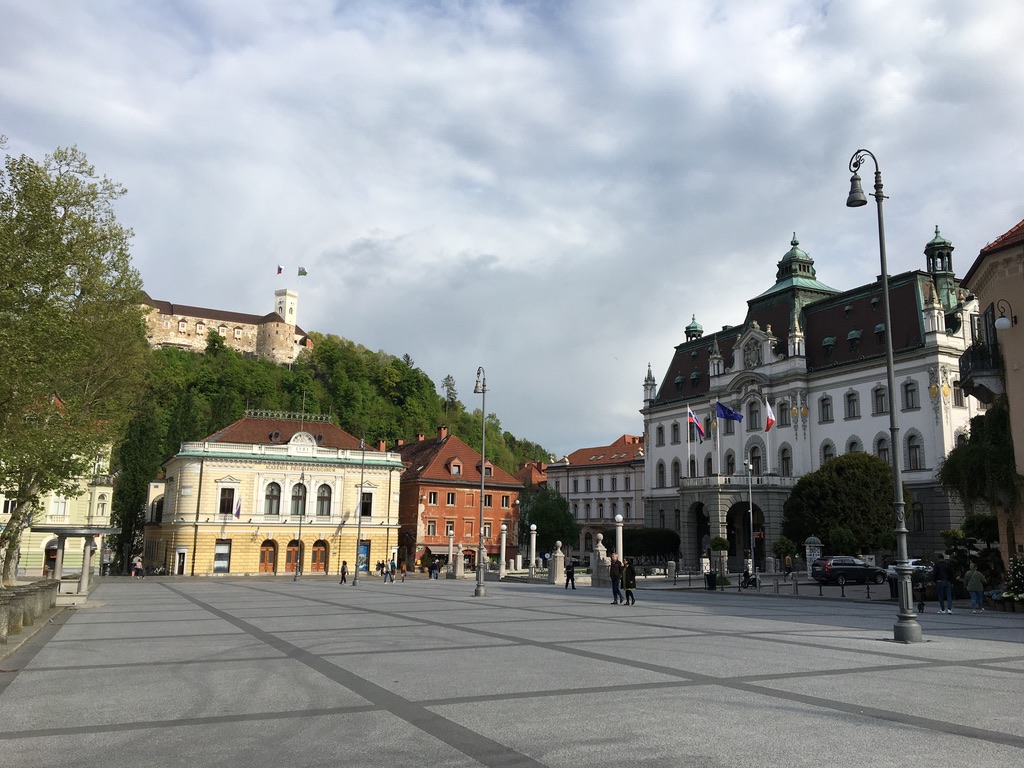 |
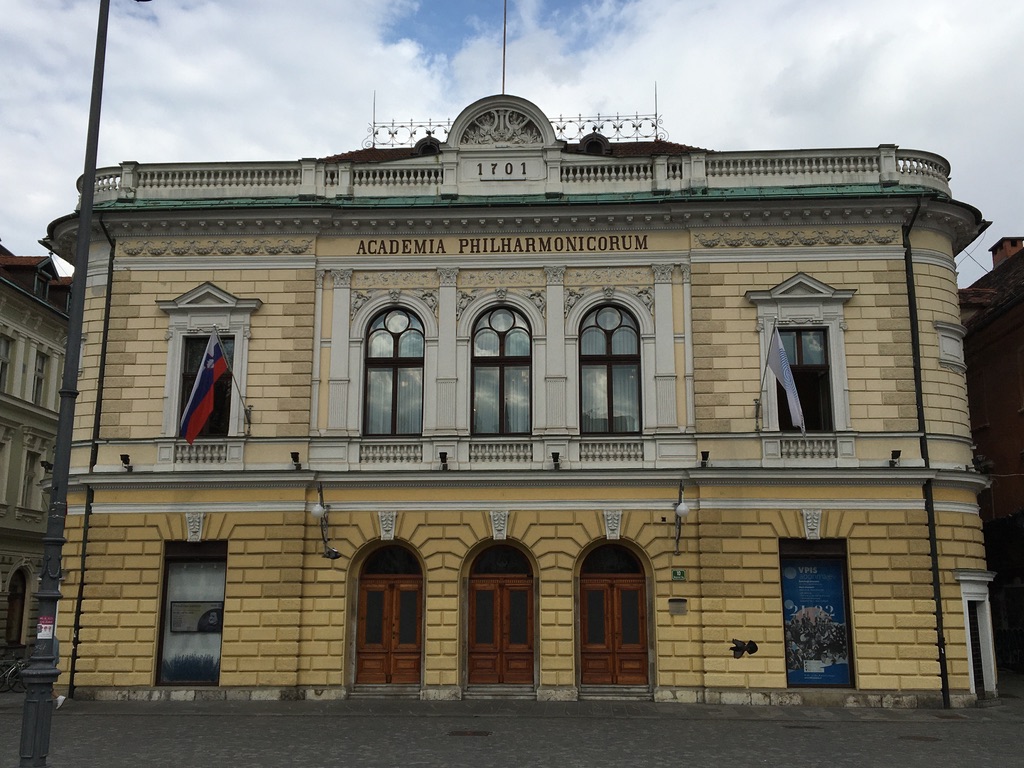 |
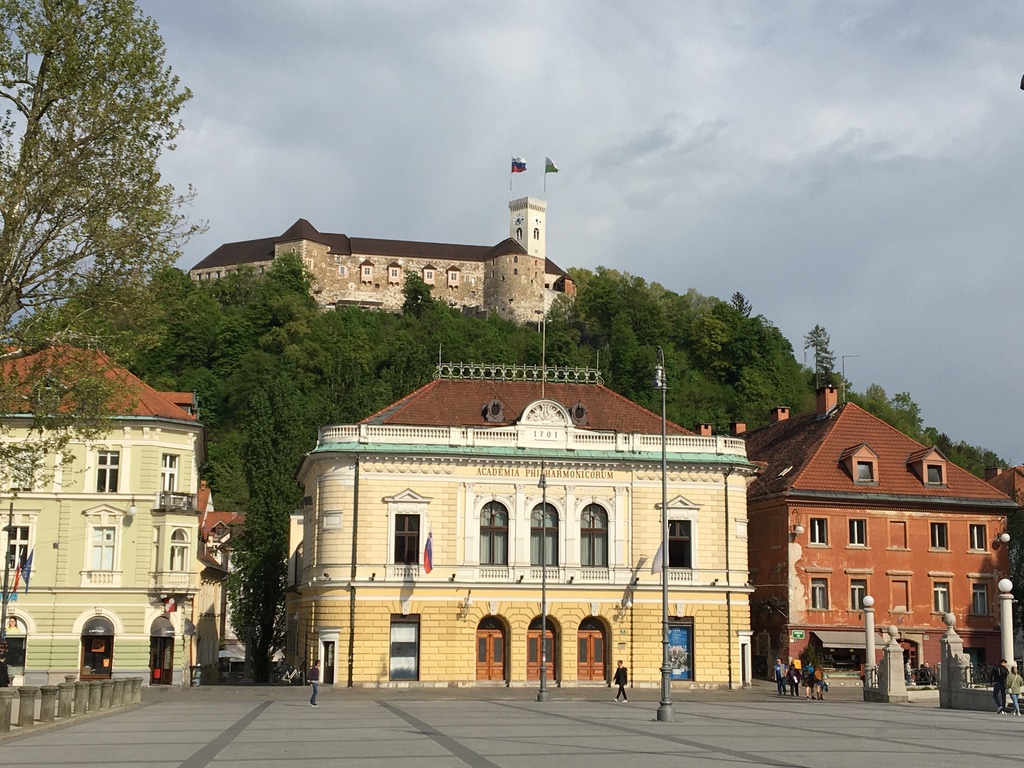 |
The promenades along the river are full of bars and restaurants and are the most lively places in the old town. You can change the river sides to see different city sights through original bridges I already mentioned.
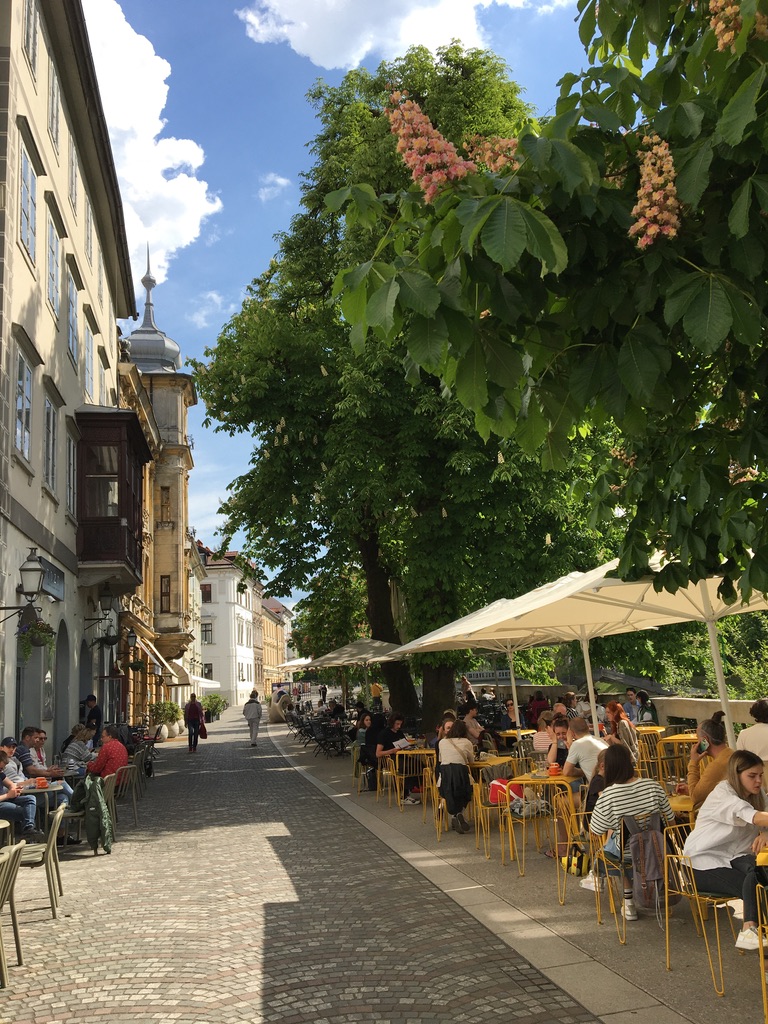 |
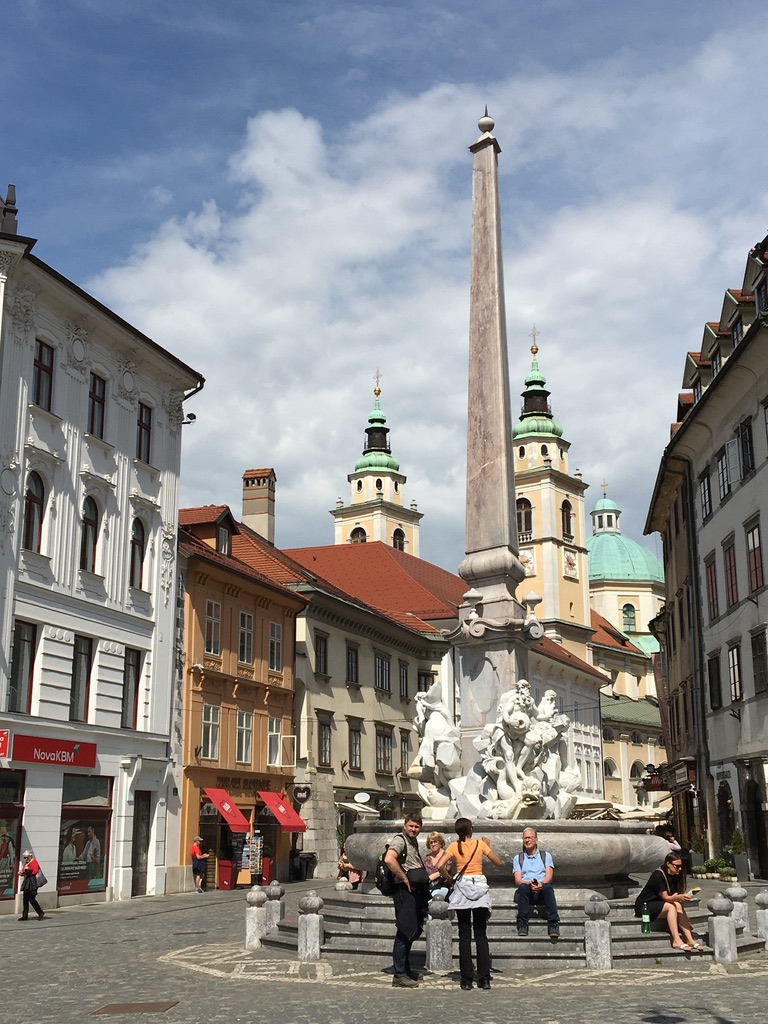 |
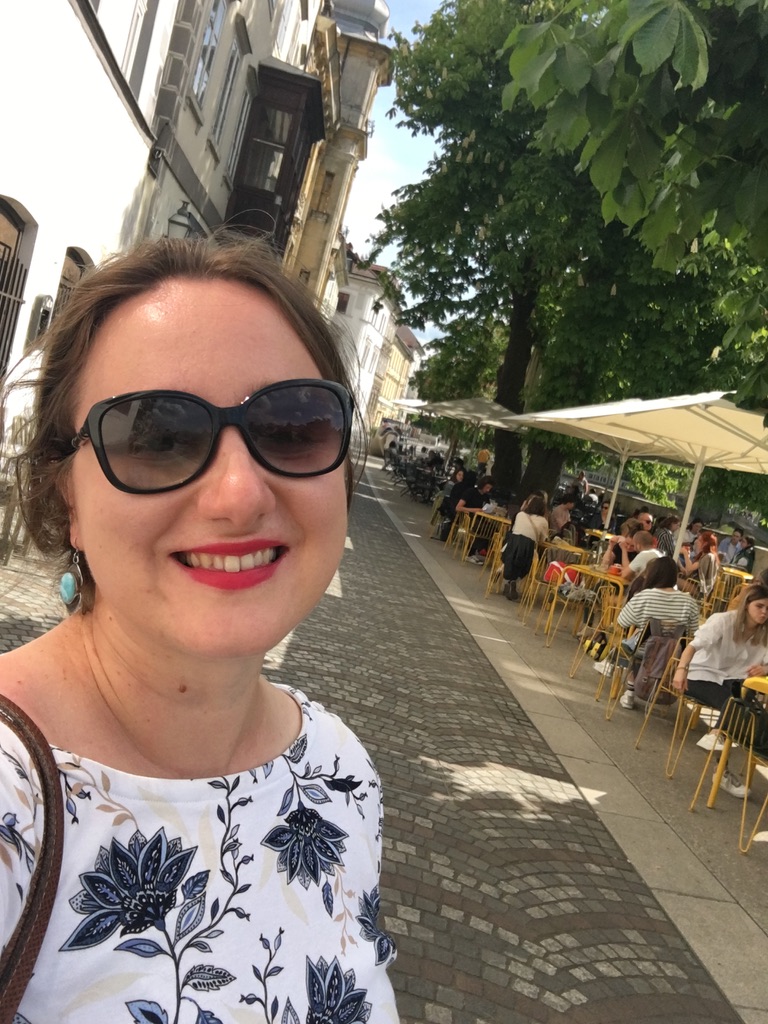 |
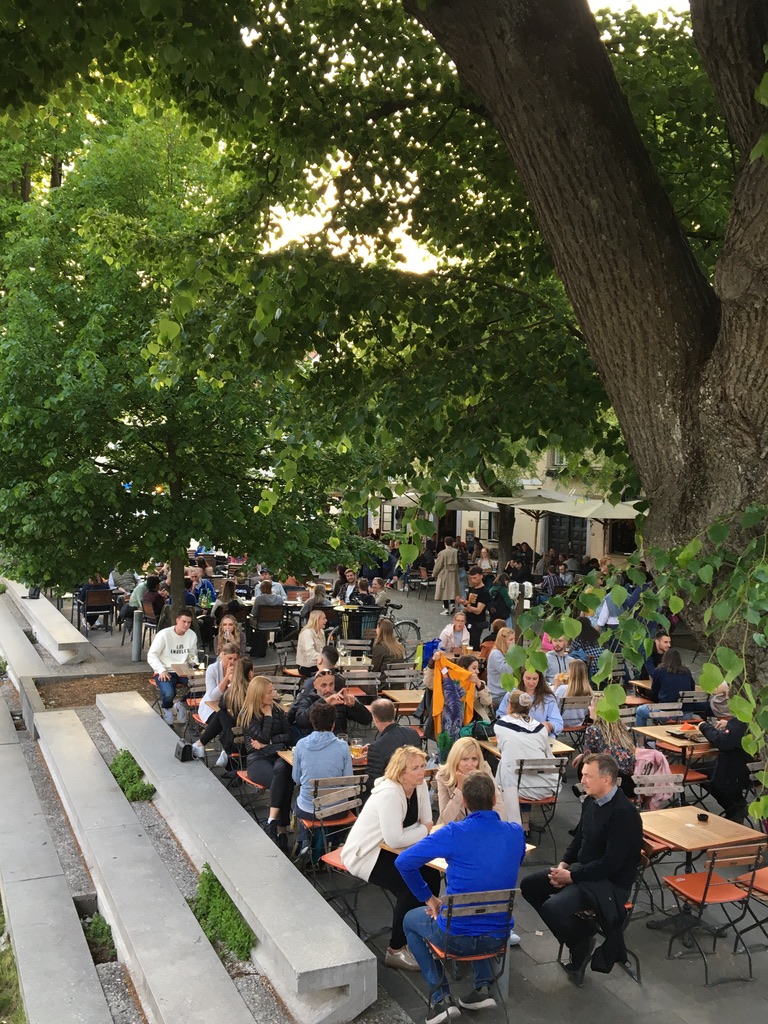 |
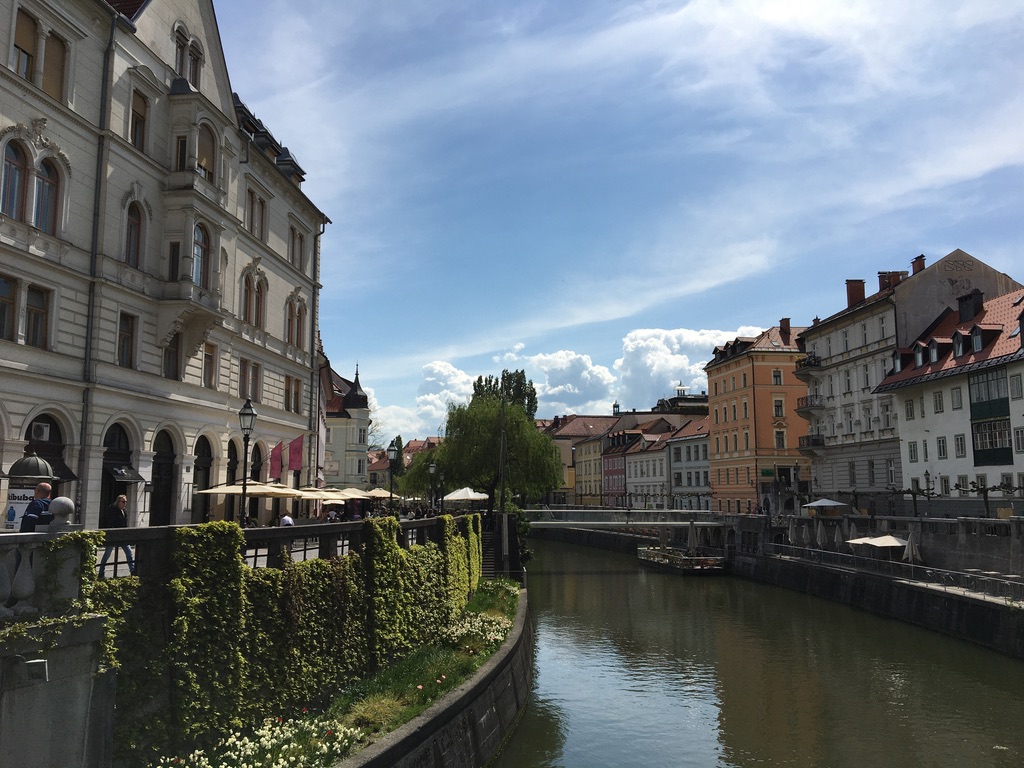 |
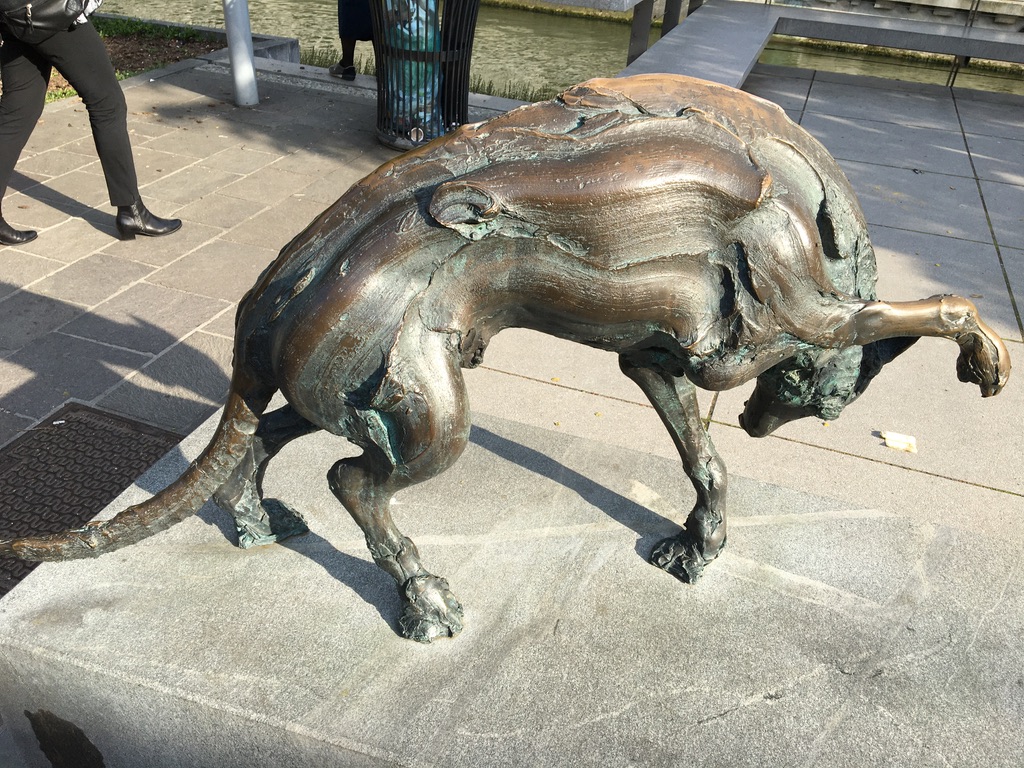 |
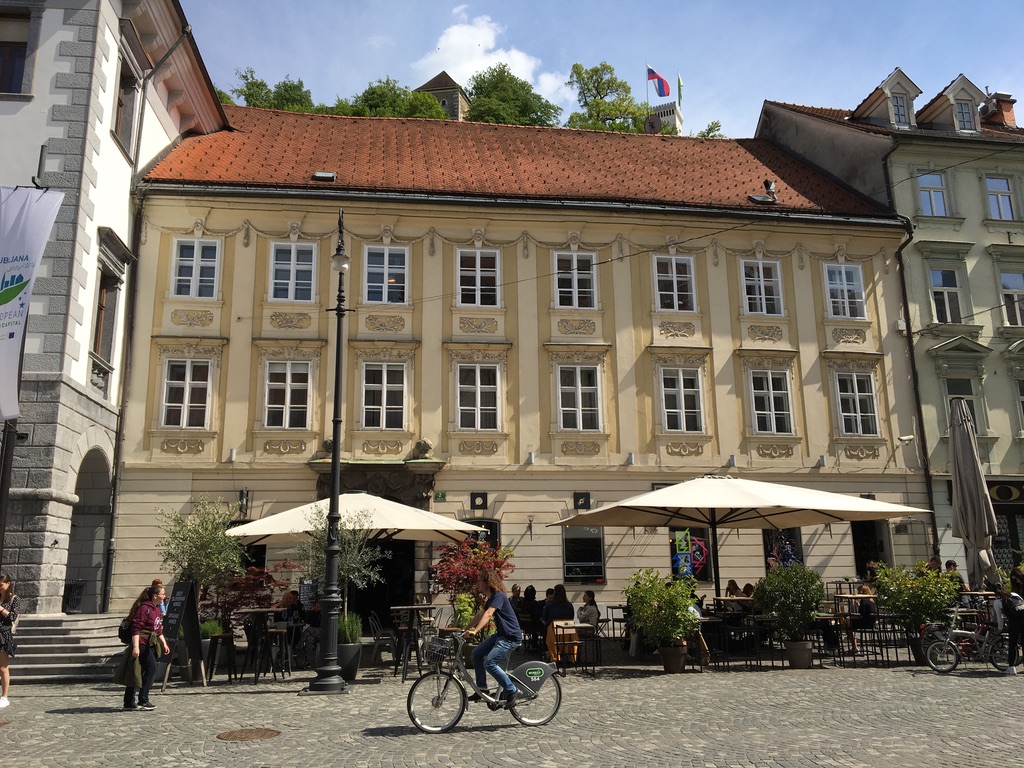 |
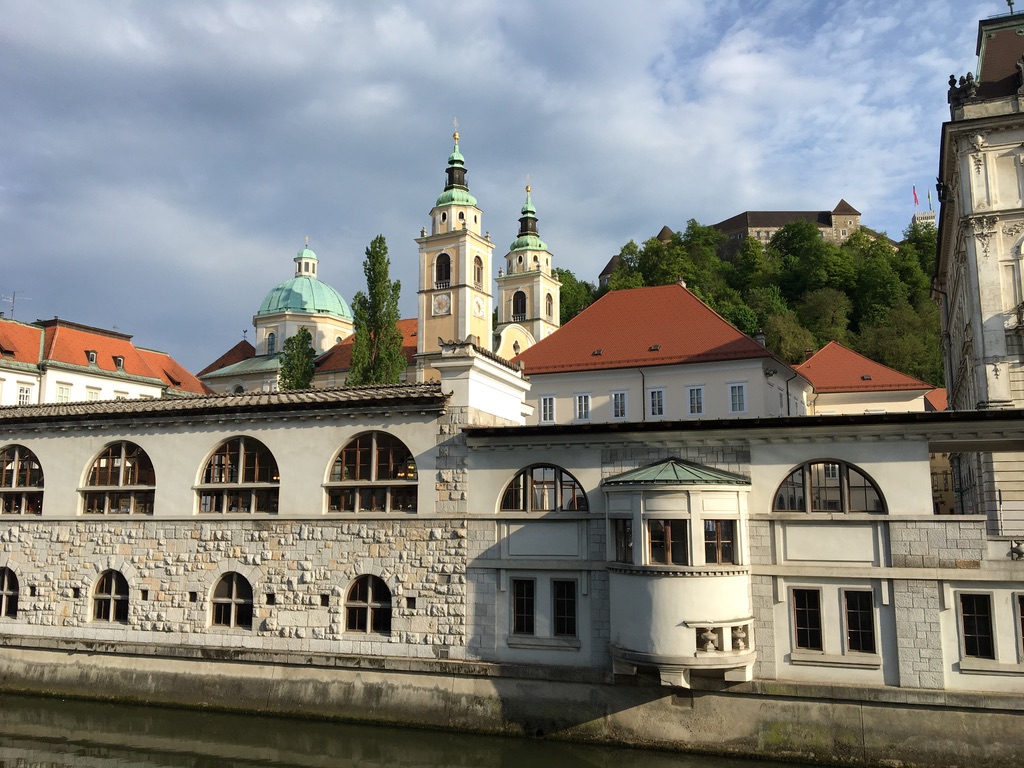 |
If you look for food, you can check out the Market which is just nearby the Dragon Bridge, in the morning you will find there stands with local food but on the river side you also have regular restaurants where you can stop for lunch. One of them called My Dumplings Of Slovenia, serves traditional Slovenian dumplings called štrukli. Worth trying, they have both sweet and savoury options.
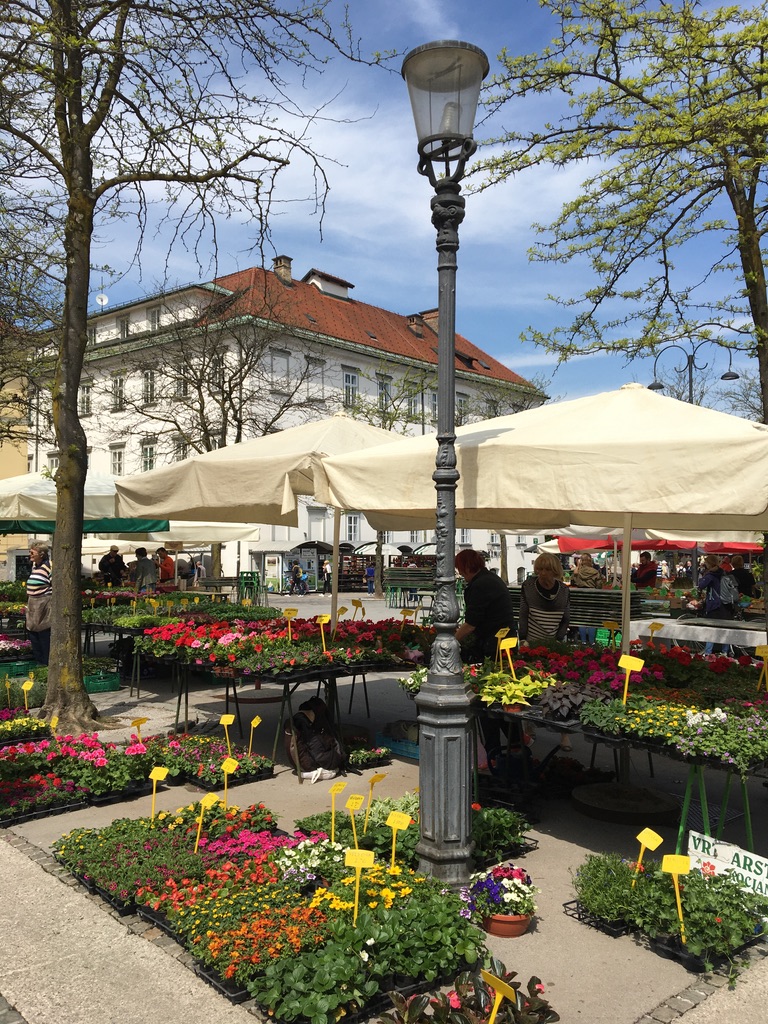 |
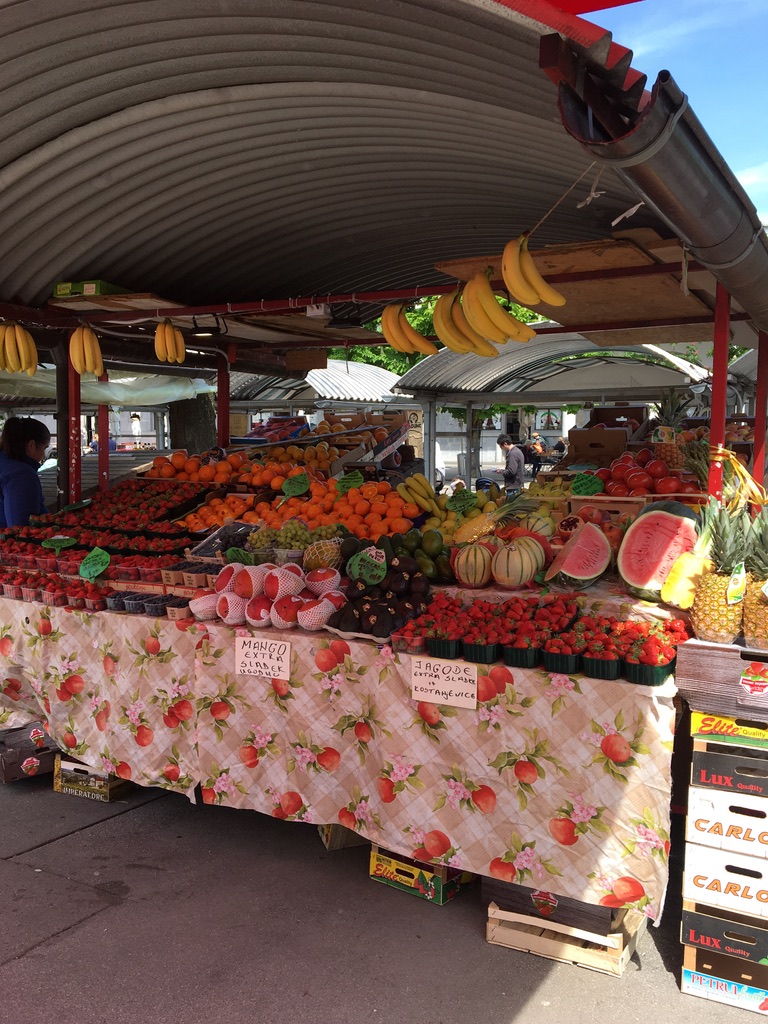 |
The street Stari trg is your street to go if you search for good restaurants but also specialty food shops where you can get Slovenian olive oil, truffle products, bear sausages, local wine, salt products and many others. I think on this street you will also find most of the best souvenir shops in the city.
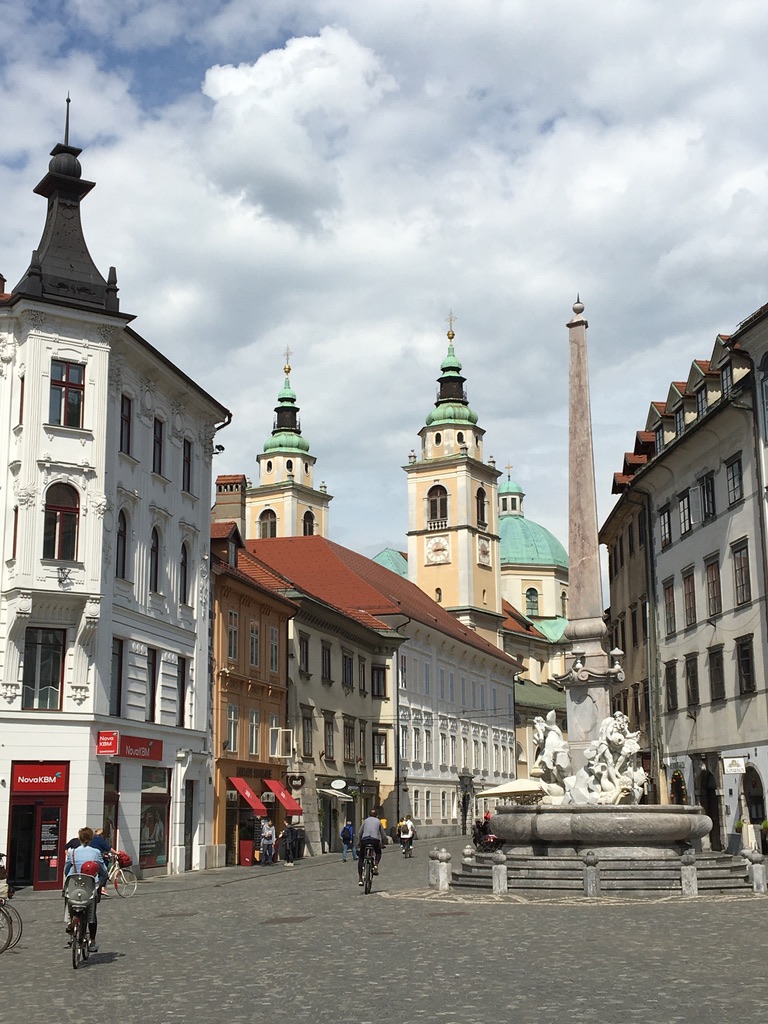 |
To check my list of authentic and traditional souvenirs, check this blog post.
I was planning to visit Tivoli Garden and National Museum of Contemporary History located around 1 km away from the old town, but I actually got out of time. Thus, if you would like to visit some of Ljubljana’s museums (Ljubljana City Museum, Ljubljana City Gallery, National Gallery, Museum of Modern Art or National Museum of Slovenia), then plan one or two days more depending on how many museums you would like to see.
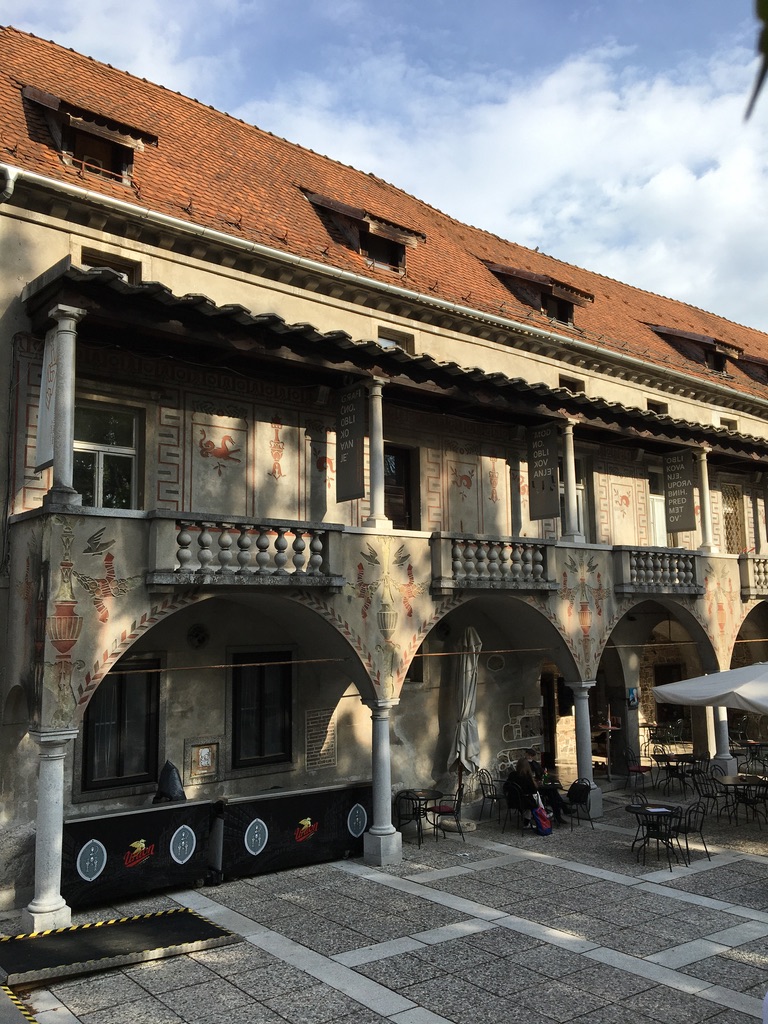 |
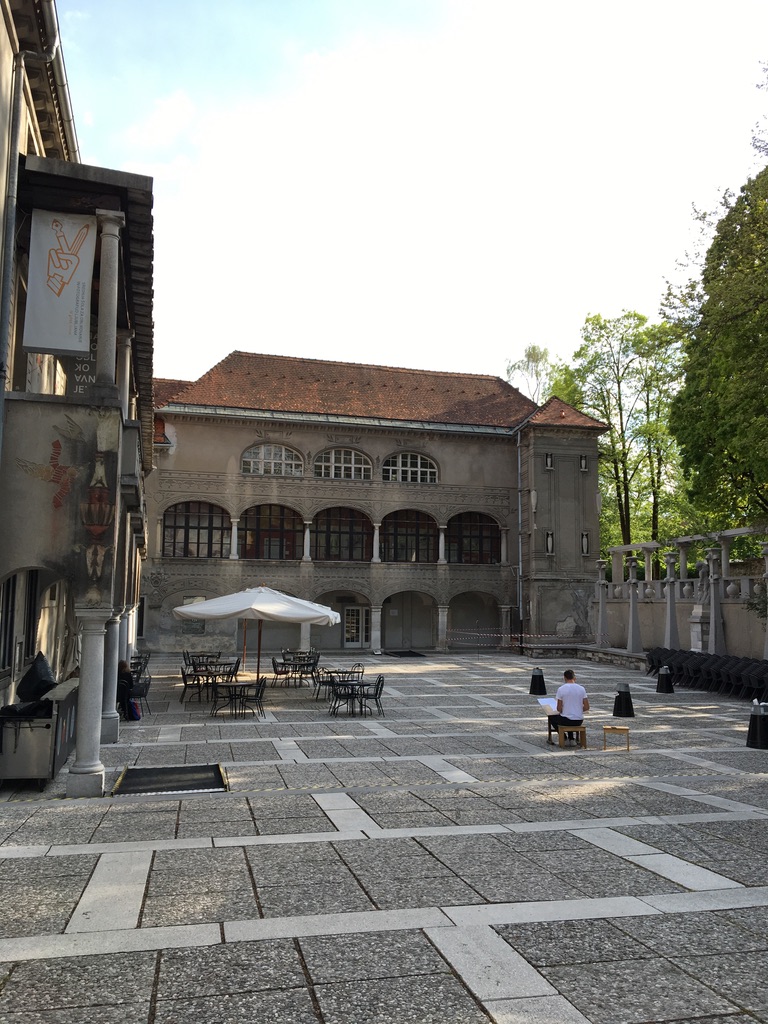 |
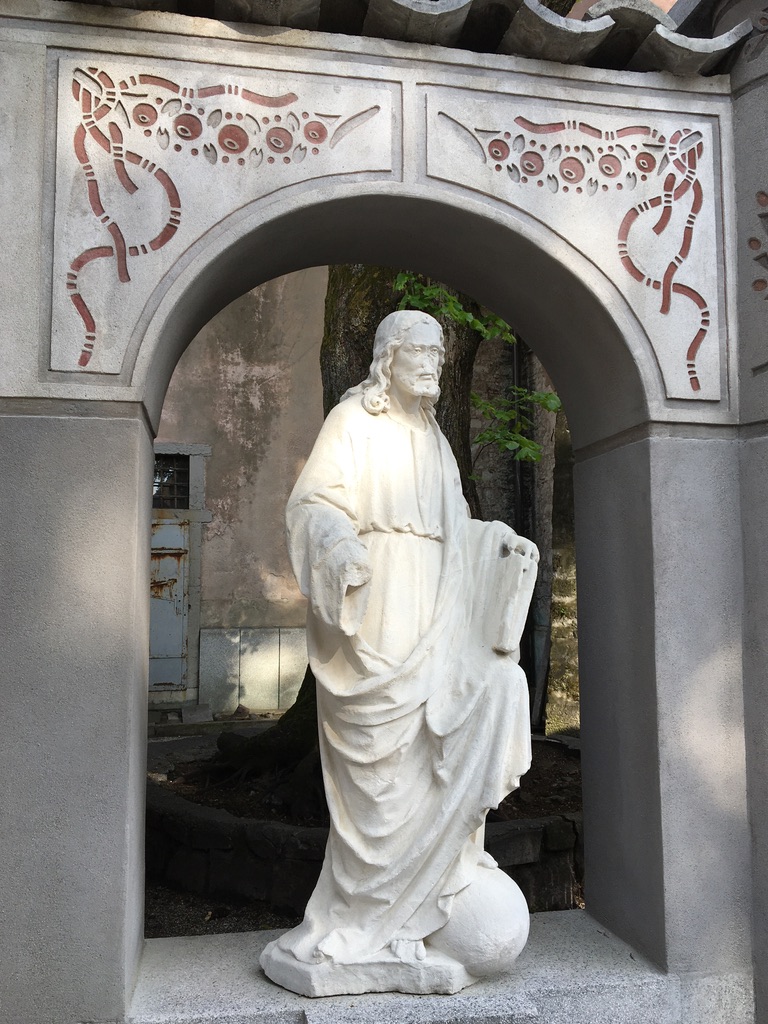 |
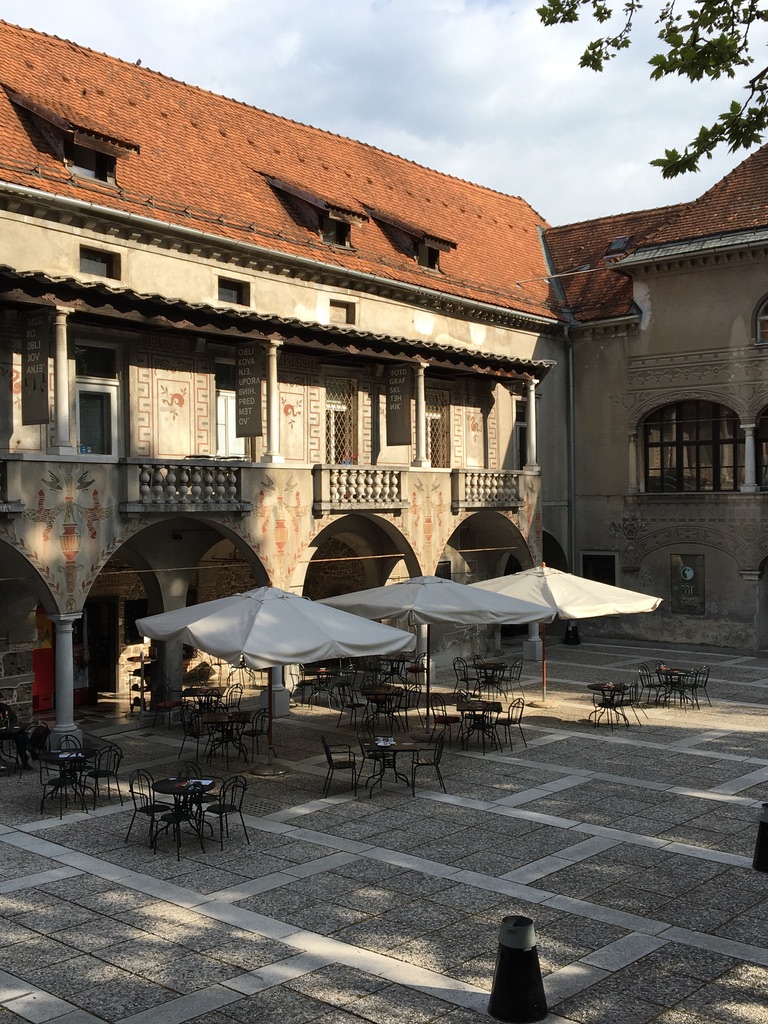 |
Piran and Istria
The rest of our stay we spent in Piran and Slovenian coast of Adriatic Sea, with romantic Piran being a pearl of Slovenian Riviera with a Venetian architecture being a heritage of Venetian Republic to which Piran once belonged.
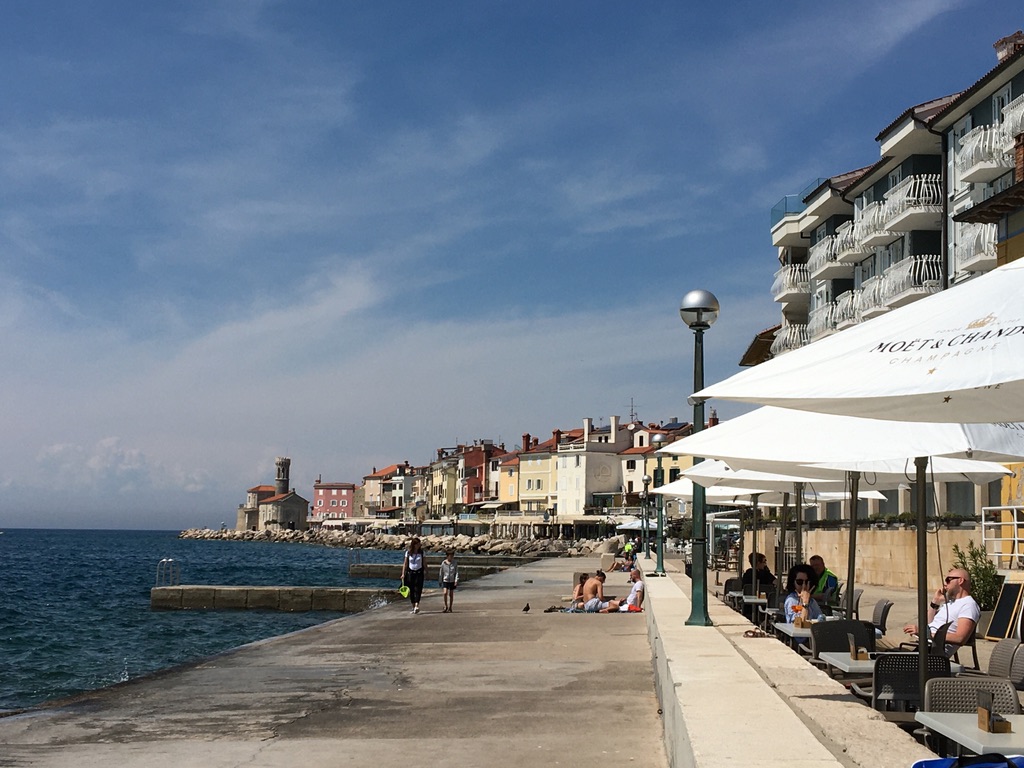 |
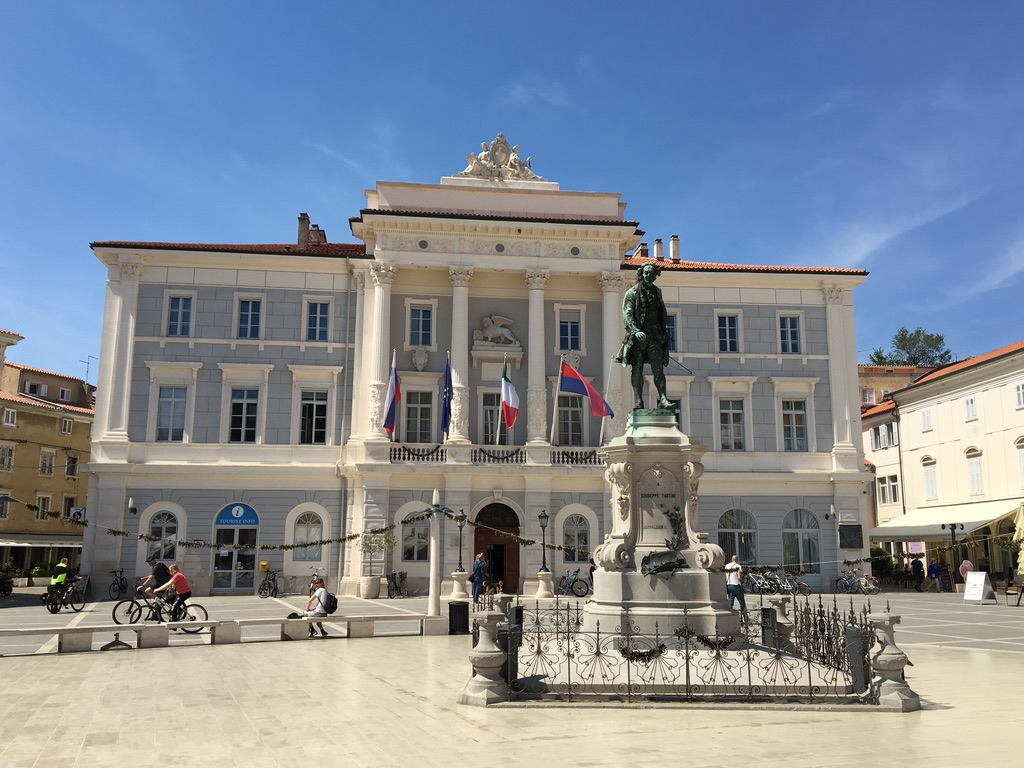 |
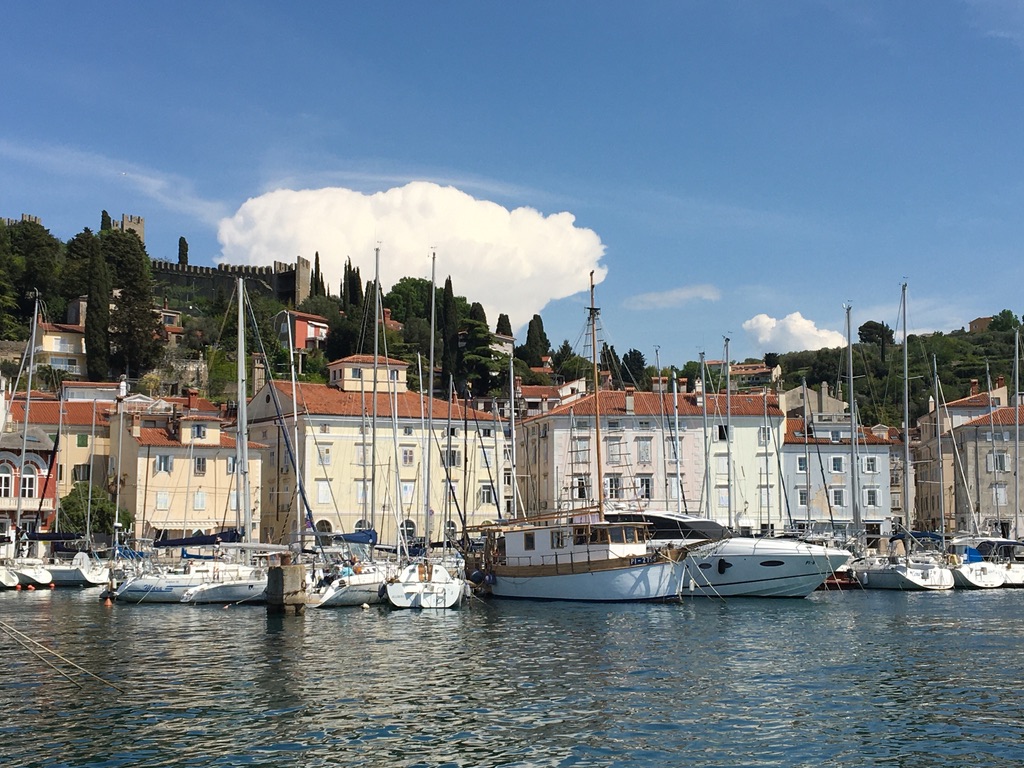 |
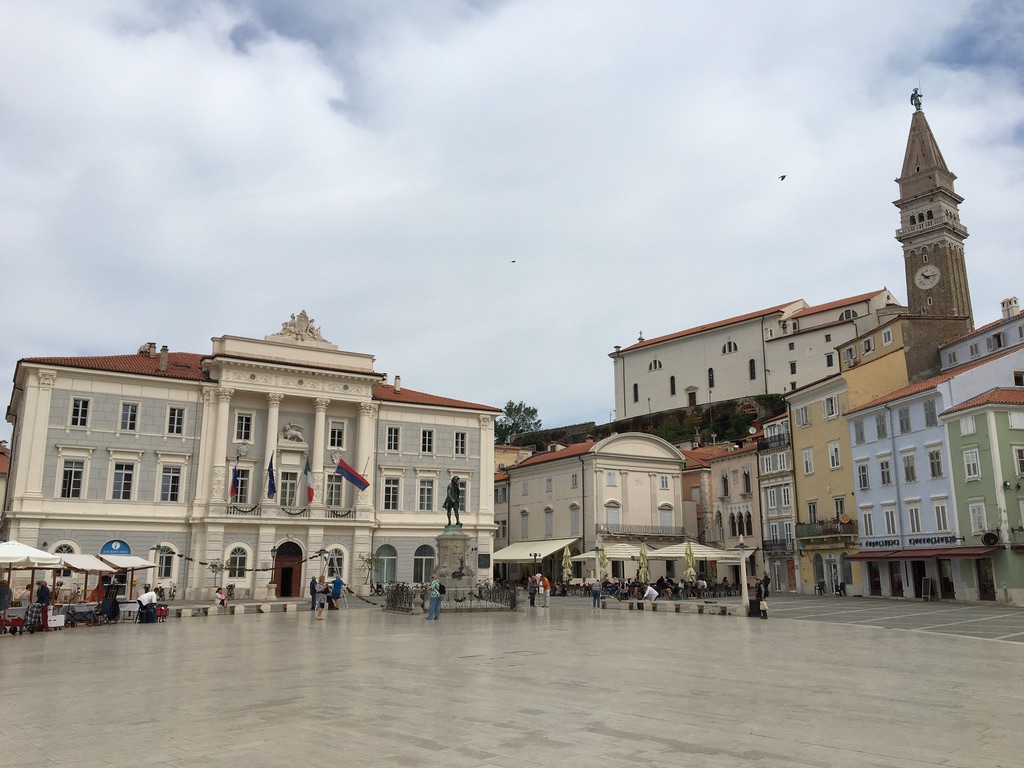 |
We also enjoyed the surrounding area visiting the salt harvest fields, doing small hikes along olive groves and trying amazing Istrian cuisine.
Slovenian Istria is so different from other parts of the country, that I decided to describe our experience in another post.
Check here for our Istrian adventure.
Short Subjective Foodie Guide for Slovenia
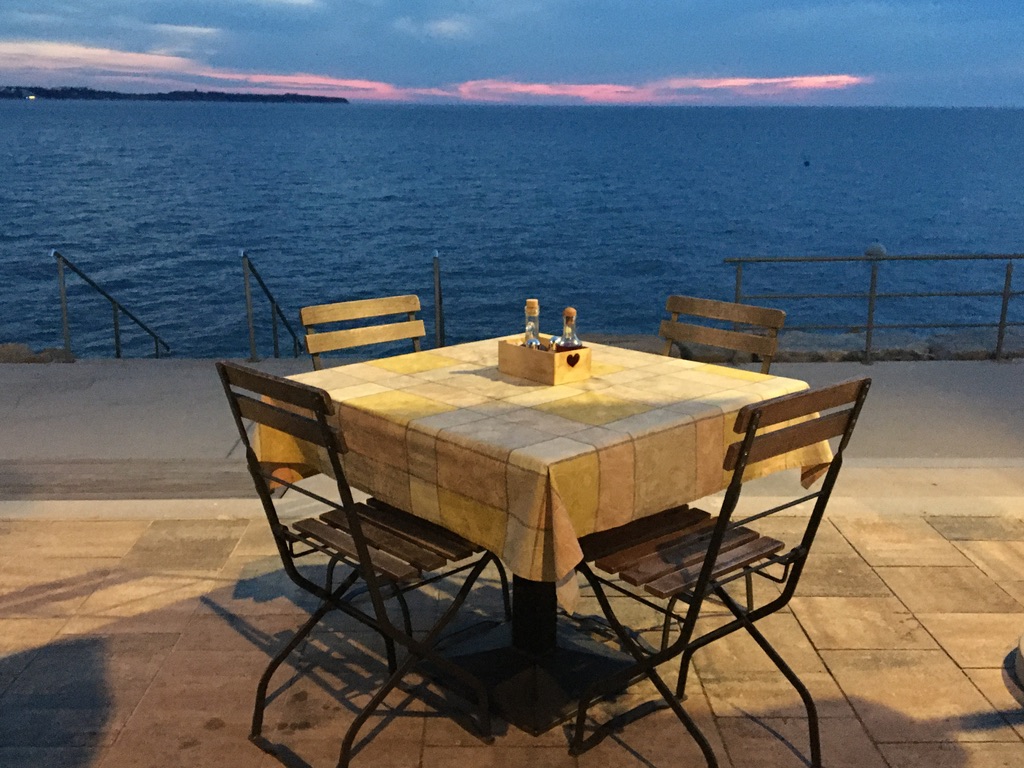 |
Slovenia has very diverse cuisine depending on the region. You will find here heavier dishes in the mountain regions and a lot of seafood options closer to the coast.
– For a starter, I suggest to try Slovenian cheese selection (tolminc , Bovec ovčji which is sheep). Slovenia also has excellent prosciutto, I suggest taking it along with plate of cheese and local olives.
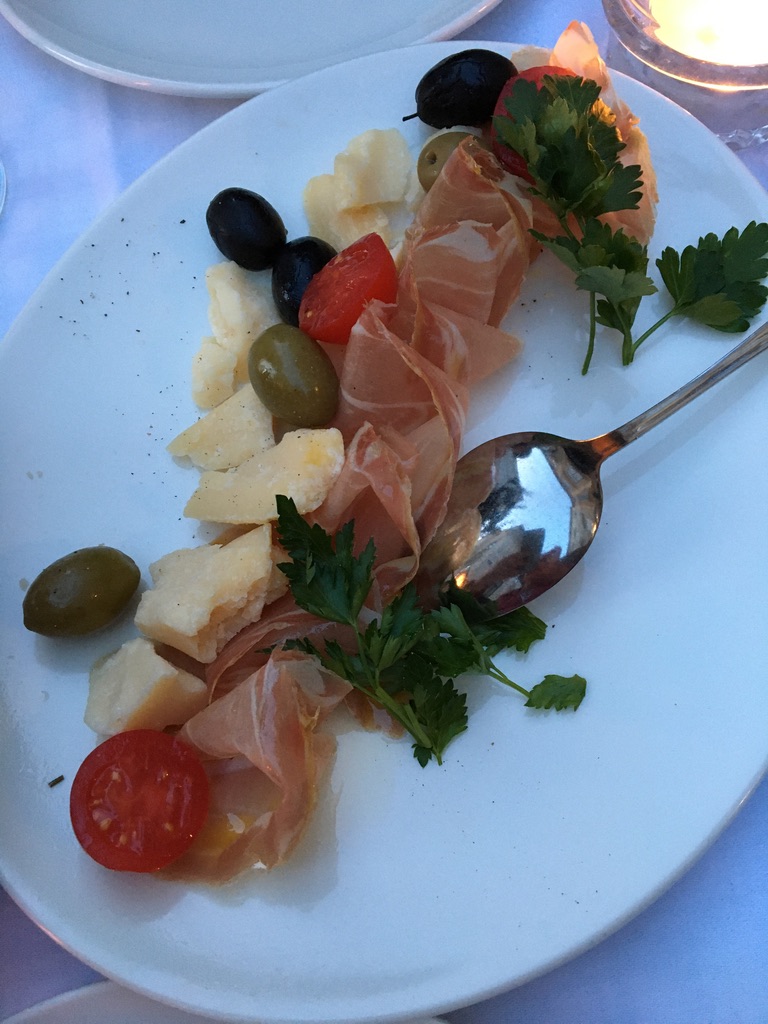 |
– Čompe which is potatoes with ricotta. It is a dish composed of boiled potatoes and ricotta and is a Slovenian dish from Bovec region.
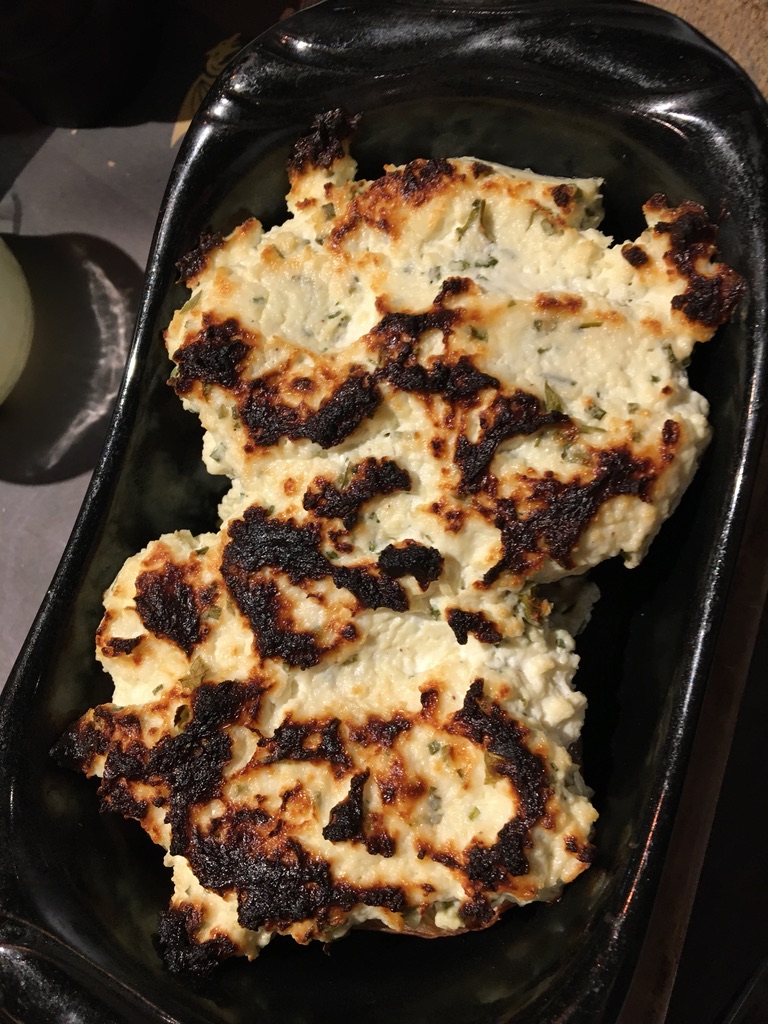 |
– Štruklji are Slovenian types of dumplings. You can have them with sweet or savoury filling.
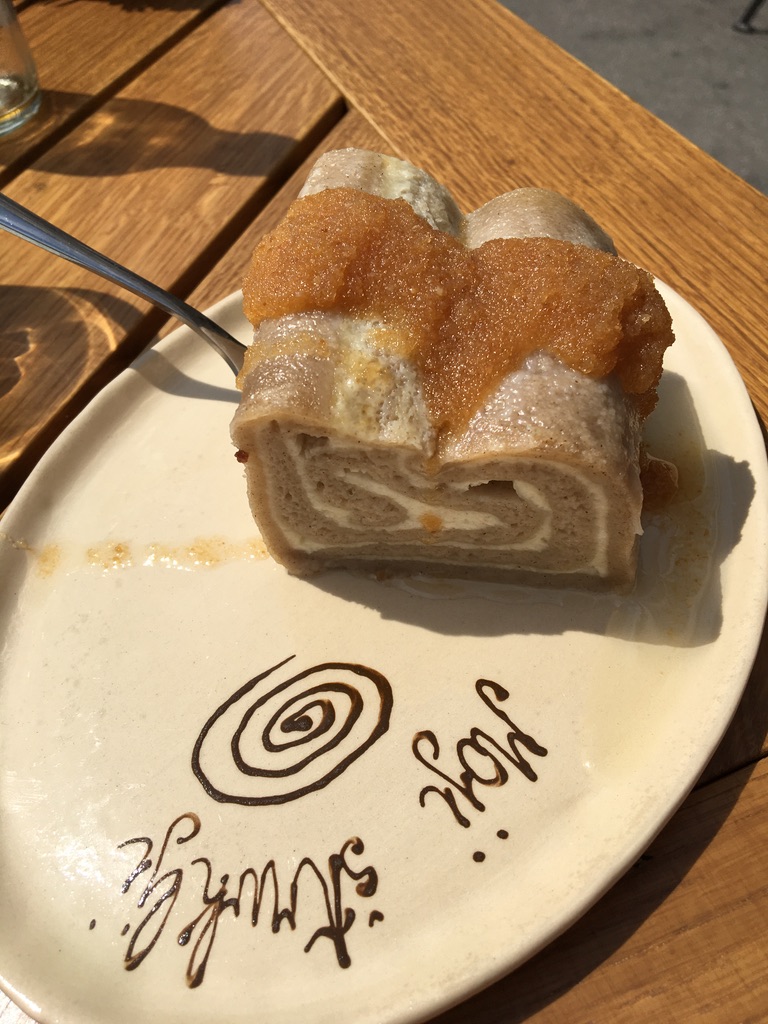 |
– Idrijski žlikrofi are traditional Slovenian dumplings that originate from Idrija. They are made from dough with potato filling and are often served either as a side dish to meat or on their own. I had a version with local mushrooms and herbs and they were delicious.
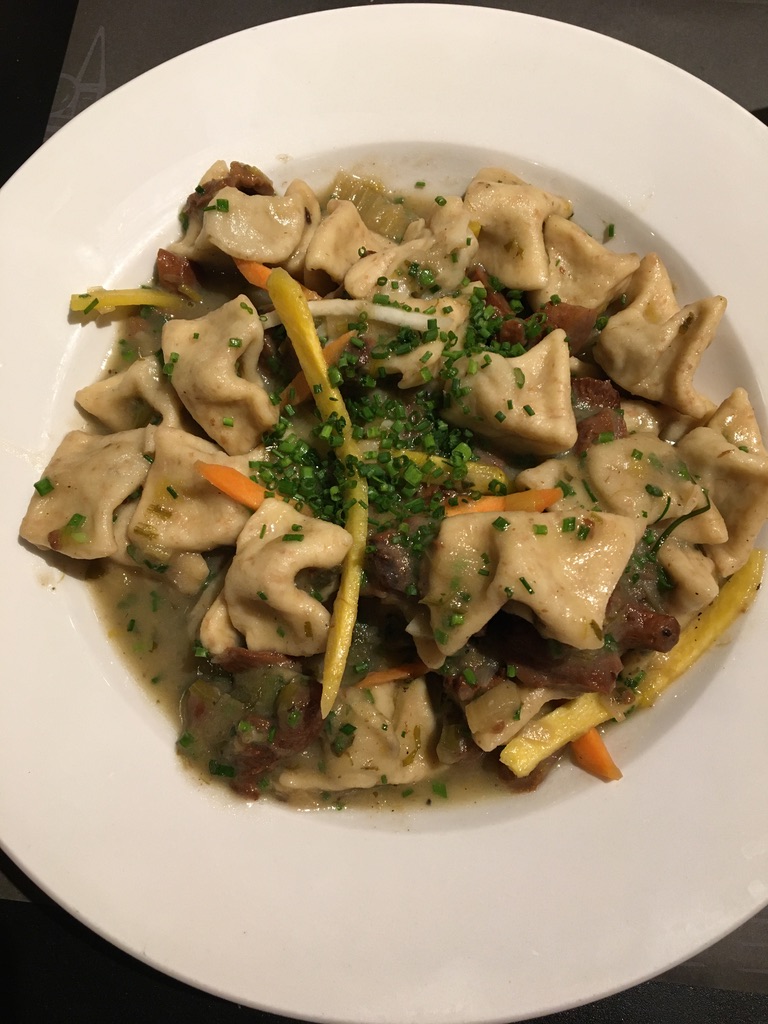 |
– Istrian seafood: Adriatic Sea mussels, seabass, seabream, pasta with seafood, local olive oil and local wine–the southern cuisine is just delicious.
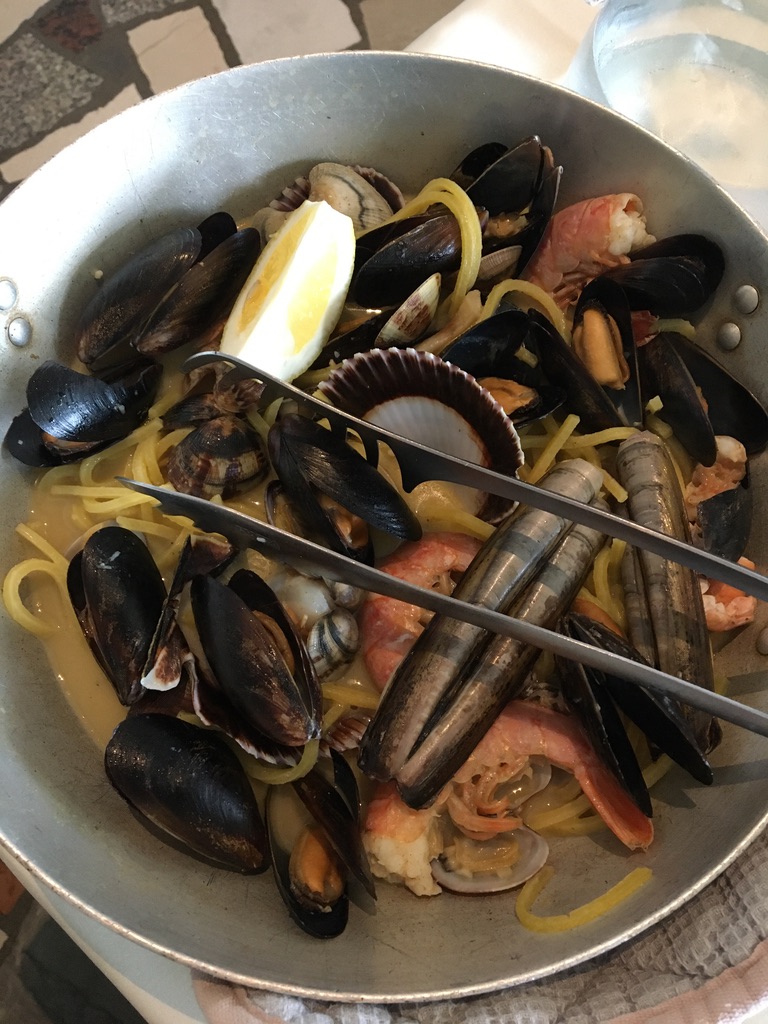 |
– Gibanica is a traditional pastry usually made with cottage cheese and eggs. It is multi-layered cake with a layer of apples, ricotta and poppy and this was my favorite desert in Slovenia, just delicious!
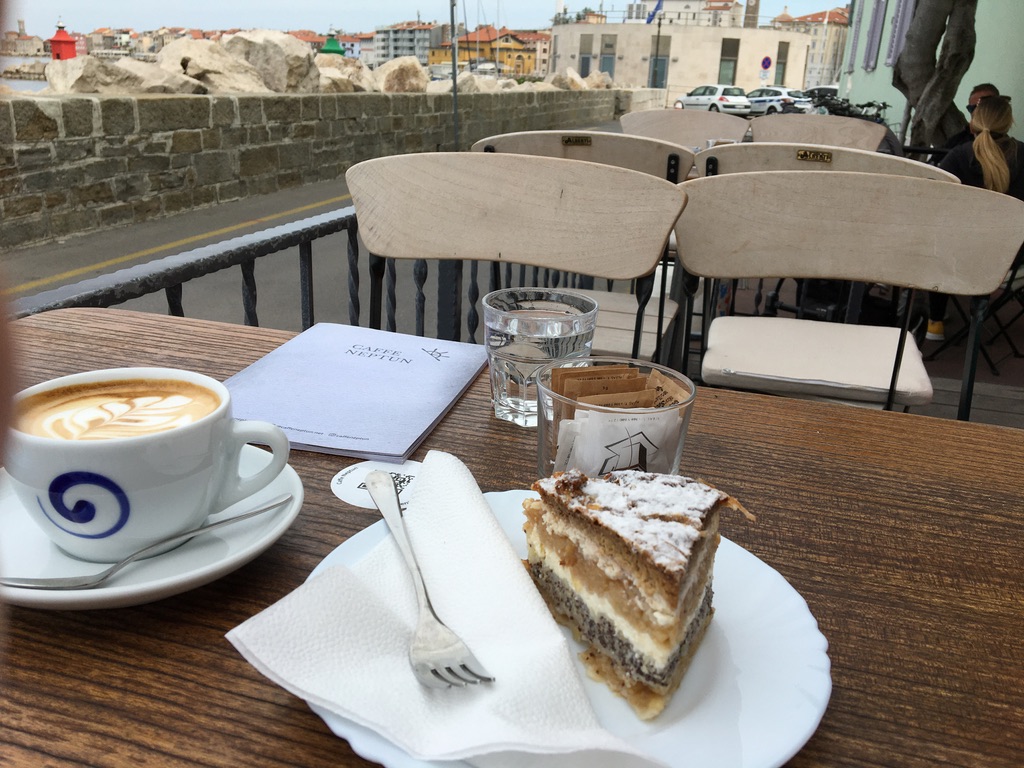 |
– Bled Cake known for its delicate puff pastry atop layers of light vanilla cream and custard, you will find it (of course!) in Lake Bled area, I find it quite heavy.
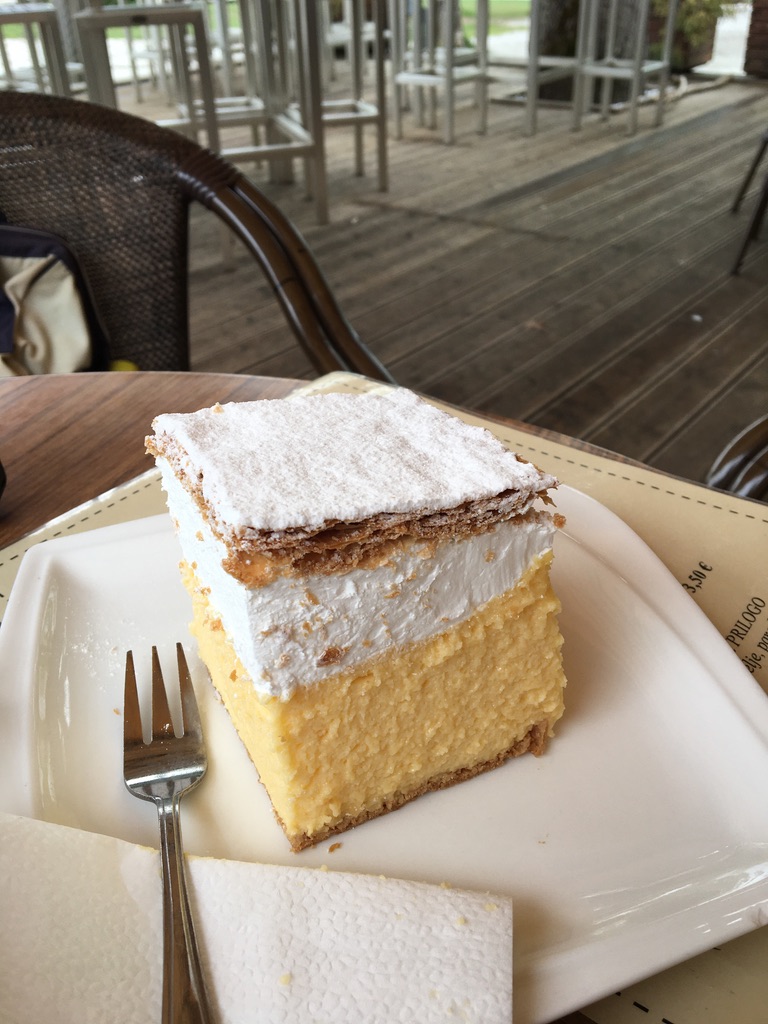 |
– Local olives, wines, olive oil and pumpkin oil, these you will try as extras to your dishes but they are just exquisite and worth to bring home with you!
- Slovenia can be easily visited by train, the tickets have flat prices, you can check the schedules and prices on the Slovenian railway website https://potniski.sz.si/en/
- Slovenia is one of the safest countries in Europe and it’s very comfortable for solo travellers
- Always check weather prediction before going to Slovenian mountains and make sure to have at least umbrella with you in lower mountains in case of sudden rain
- The tap water is Slovenia has amazing quality, there is no need to buy bottled water, you will find a lot of drinkable water taps along in the cities/national parks too
- Slovenia is bike friendly place, you can easily rent a bike to explore the area
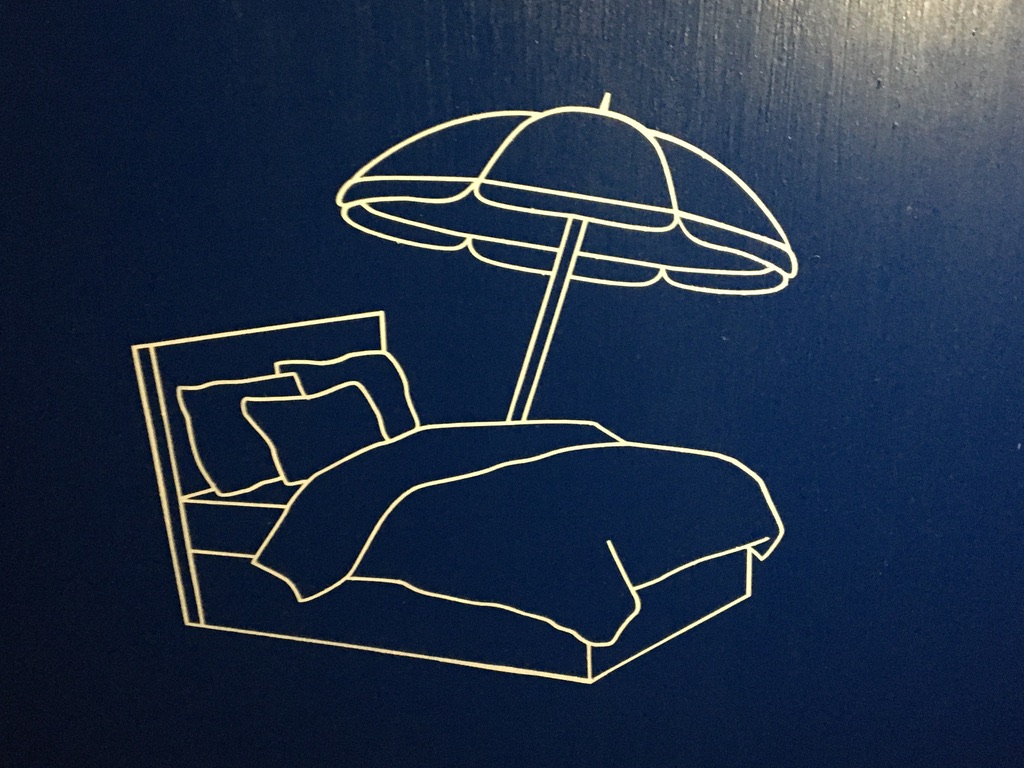 |
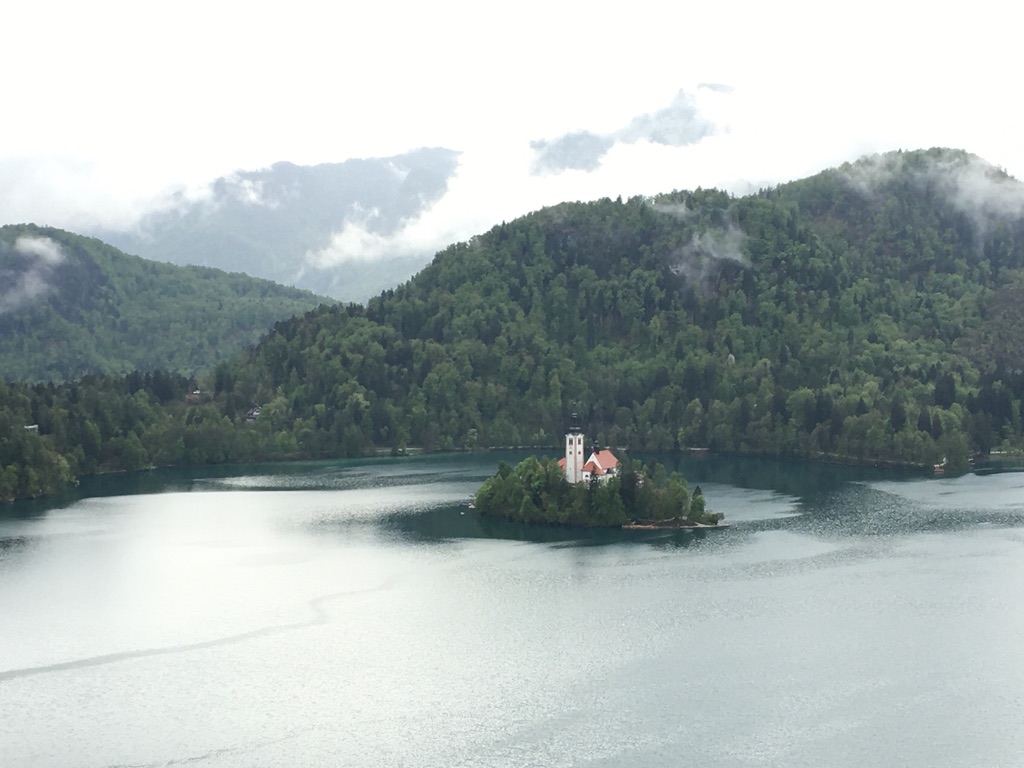
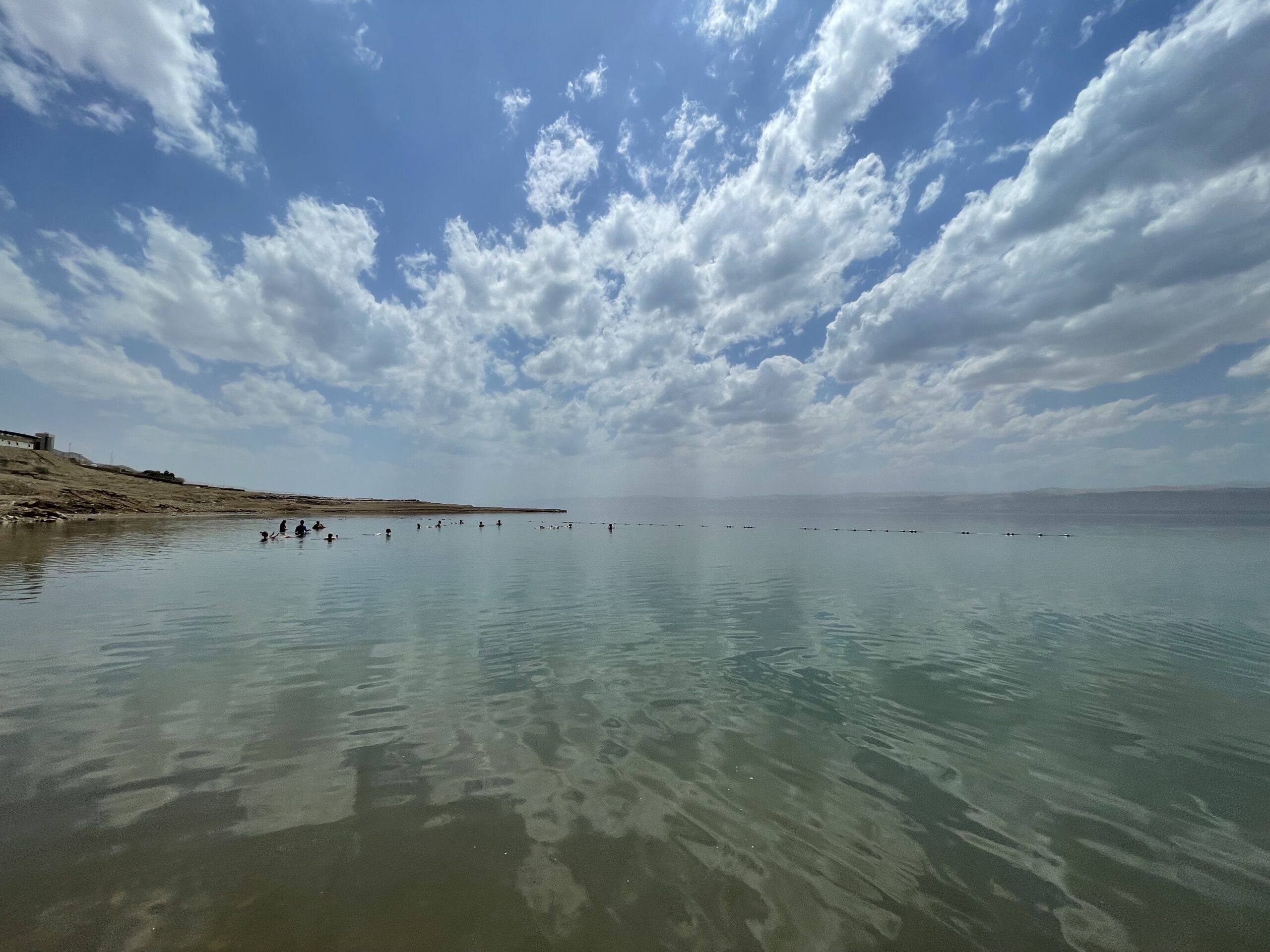
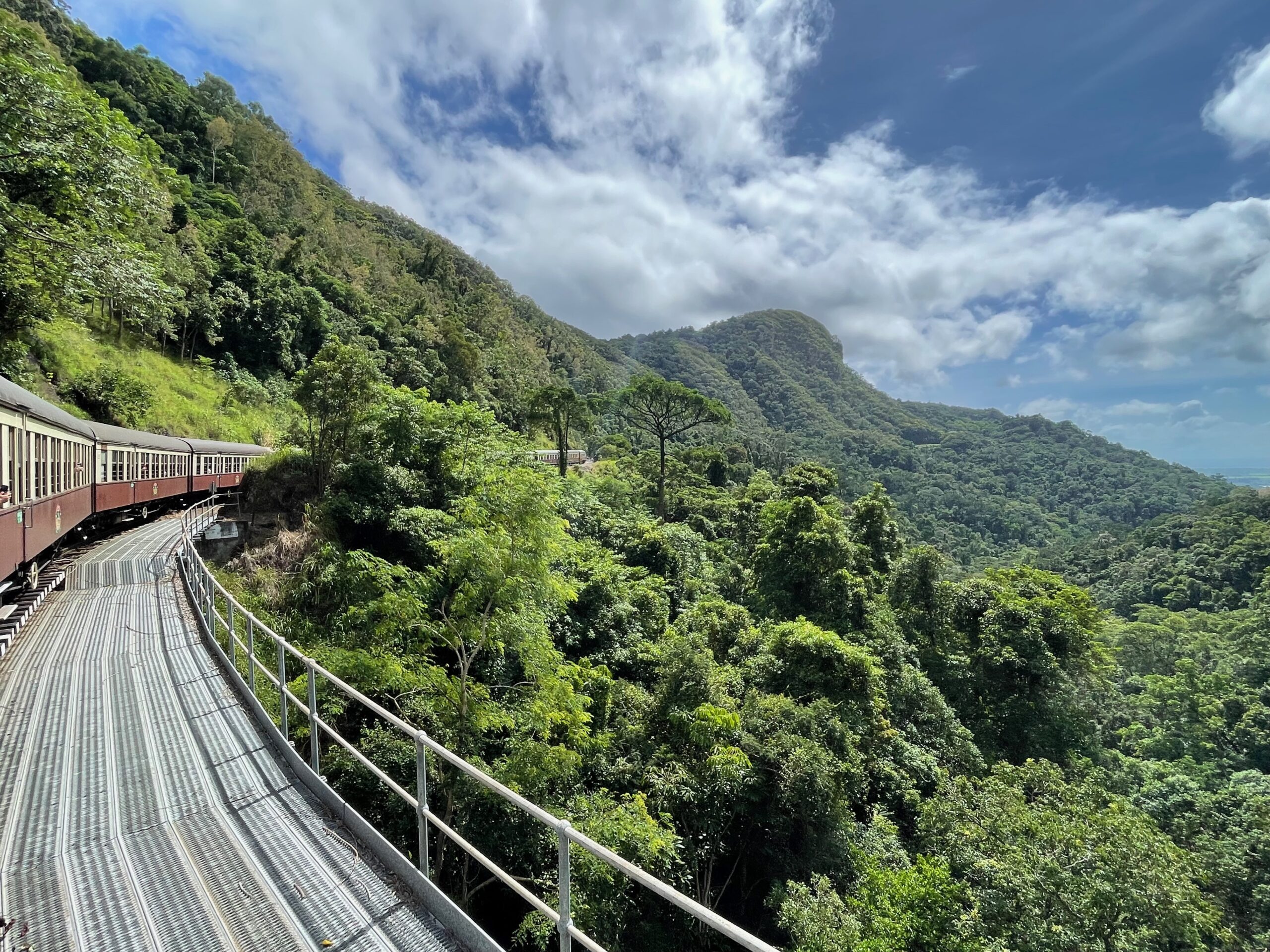
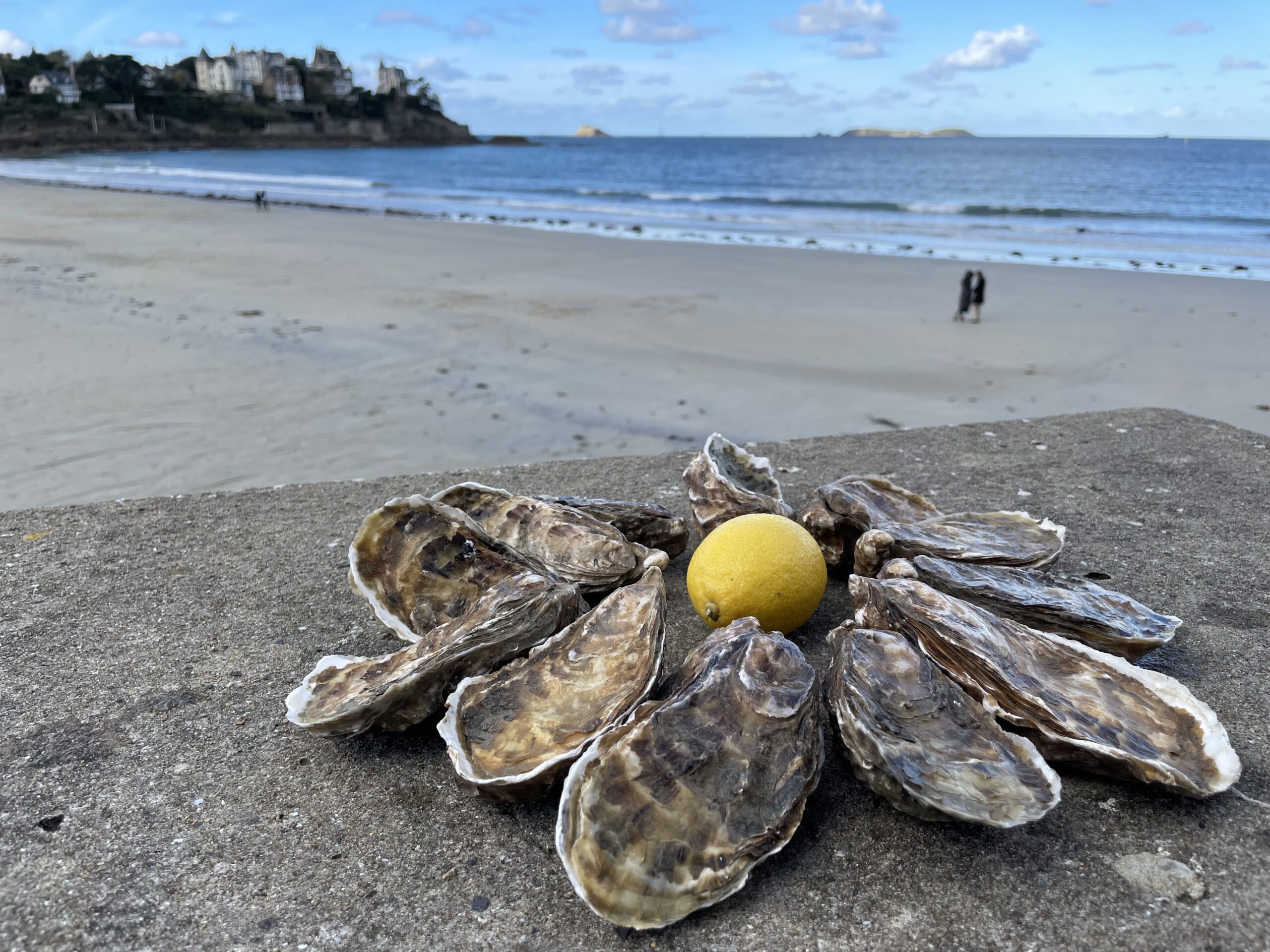
Tyle razy byłam na Bałkanach, ale nigdy nie w Słowenii. Ten post mnie zachęcił, zwłaszcza fakt, że mają morze i góry, co jest wiecznie dylematem w mojej rodzinie, gdzie ja kocham morze, a mój mąż góry … 😉
Chyba w tym roku wybiorę się na Słowenię, czysta woda, dobre jedzenie, morze i góry, super 💪 Tego mi trzeba.
Polecasz gdzie zatrzymać się w górach?
Czy mają dobre drogi, bo chyba jednak zdecydujemy się na samochód, do pociągów nie jestem przyzwyczajona.
Cześć Ilona,
Myślę, że znajdziesz fajne miejscówki na Booking. Ja widziałam fajne domki na wynajem w okolicach Vintgar, ale pod własne potrzeby sprawdź sobie
na Bookingu;) Drogi w Słowenii są bardzo dobre, jak najbardziej da się wygodnie podróżować samochodem 😉
Służysz społeczności blogowej, pięknie przy tym składasz frazy. przyjmij najszczersze wdzięczności moich wyrazy 🙂
Ale tu pięknie! Marzy mi się taka przeprawa łódką po jeziorze Bled;)
Ciasta nie dla mnie, ale południowa kuchnia z owocami morza to jest moje kulinarne niebo 😉 ślinka cieknie;D
Pisz dla nas więcej, naprawdę dużo pożytecznych informacji i super zdjęcia, czym je robisz?
Ale fajne klimaty, zwłaszcza jezioro Bled jest takie magiczne ✨ Po zjechaniu całych Bałkanów aż się zdzwiwiłam, że nigdy nie pojechaliśmy do samej Słowenii, trzeba nadrobić 💪 Sprawy cenowe też są zachęcające, nie powiem
This is some good quality material. It took me a while to find this blog but it was worth the time. I noticed this page was buried in bing and not the first spot. This webpage has a lot of fine stuff and it does not deserve to be burried in the search engines like that. By the way Im going to save this blog to my favorites.
Just checking out your article on my new smartphone , and I wanted to check if it would let me comment or if it was going to me go to a full pc to do that. Ill check back later to see if it worked.
hey anyone, I was just checkin out this blog and I really enjoy the basis of the article, and have nothing to do, so if anyone would like to to have an compelling conversation about it, please contact me on AIM, my name is samuel
I usually dont normally post on many another Blogs, nevertheless Thanks keep up the amazing work. Ok unfortunately its time to get to school.
I in reality enjoy the article.Really looking focus on to entrance more.